Risultati: 190
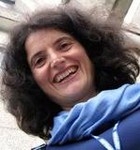
Funzione/Ruolo
Professoressa ordinaria e Responsabile del laboratorio SENSOR all'Università di Brescia
Percorso professionale
Dopo aver conseguito la laurea in Fisica Sperimentale nel 1996 all'Università di Pisa, prosegue la sua formazione attraverso un dottorato di ricerca in Materiali per l'Ingegneria, presso l'università di Brescia, che consegue nel 2000. Dal 1999 al 2001 è tecnologa impiegata all'INFM (Istituto Nazionale di Fisica della Materia). Dal 2001 è ricercatrice in Fisica della Materia presso l'Università degli Studi di Brescia dove diventa in seguito professoressa ordinaria di Fisica Sperimentale della Materia.
Risultati scientifici
Elisabetta Comini è specializzata nello studio della crescita di ossidi metallici, in particolare nanofili, e nella misurazione delle loro proprietà elettroniche, funzionali e strutturali. È responsabile della linea di ricerca sulle "Metal oxide nanocrystalline quasi-1D structures" presso il laboratorio SENSOR (Università di Brescia e Istituto Nazionale di Ottica). Lo scopo del laboratorio SENSOR è quello di progettare e sviluppare nuovi materiali e processi produttivi per realizzare dispositivi e sistemi per applicazioni funzionali. Il laboratorio si dedica alla ricerca nell'ambito della Information and Communication Technology (ICT), nanomedicina, alimentazione e sicurezza. Uno dei settori di ricerca più avanzati del laboratorio è proprio quello diretto da Elisabetta Comini che si occupa delle nanostrutture di ossido quasi mono dimensionali: le nanostrutture cristalline 1-D stanno oggi emergendo come basi per una elettronica di nuova generazione e dispositivi optoelettronici in scala nanometrica con prestazioni superiori.
Attività editoriali e pubblicazioni
Elisabetta Comini è autrice di oltre 350 articoli peer-reviewed.
(2019) Nunez-Carmona E, Bertuna A, Abbatangelo M, Sberveglieri V, Comini E, Sberveglieri G. BC-MOS: The novel bacterial cellulose based MOS gas sensors MATERIALS LETTERS, 237 10.1016/j.matlet.2018.11.011
(2018) Zappa D, Galstyan V, Kaur N, Arachchige HMMM, Sisman O, Comini E. Metal oxide -based heterostructures for gas sensors. A review ANALYTICA CHIMICA ACTA 1039, 10.1016/j.aca.2018.09.020.
(2016) Kaur N, Comini E, Zappa D, Poli N, Sberveglieri G. Nickel oxide nanowires: vapor liquid solid synthesis and integration into a gas sensing device. Nanotechnology, 27(20).
(2015) Comini E, Galstyan V, Faglia G, Bontempi E, Sberveglieri G. Highly conductive titanium oxide nanotubes chemical sensors. Microporous and Mesoporus Materials, 208:165-170.
(2013) Comini E. Integration of Metal Oxide Nanowires in Flexible Gas Sensing Devices. Sensors-Basel, 13(8):10659-10673.
(2009) Comini E, Baratto C, Faglia G, Ferroni M, Vomiero A, Sberveglieri G. Quasi-one dimensional metal oxide semiconductors: Preparation, characterization and application as chemical sensors. Progress in Materials Sciences, 54(1):1-67.
(2007) Vomiero A, Ferroni M, Comini E, Faglia G, Sberveglieri G. Preparation of radial and longitudinal nanosized heterostructures of In2O3 and SnO2. Nano Letters, 7(12):3553-3558.
(2006) Ponzoni A, Comini E, Sberveglieri G, Zhou J, Deng SZ, Xu NS, Ding Y, Wang ZL. Ultrasensitive and highly selective gas sensors using three-dimensional tungsten oxide nanowire networks. Applied Physics Letters, 88(20).
(2004) Comini E, Guidi V, Malagu C, Martinelli G, Pan Z, Sberveglieri G, Wang ZL, Electrical properties of tin dioxide two-dimensional nanostructures. Journal of Physical Chemestry B, 108 (6):1882-1887.
(2002) Comini E, Faglia G, Sberveglieri G, Pan ZW, Wang ZL. Stable and highly sensitive gas sensors based on semiconducting oxide nanobelts. Applied Physics Letters, 81(10):1869-1871.
Riconoscimenti e premi
Nel Settembre 2005 vince il premio per la migliore presentazione alla conferenza EUROSENSORS XIX, a Barcellona. L'anno successivo, si aggiudica lo stesso premio alla conferenza EUROSENSORS XX a Goteborg. Nel 2010 vince il primo posto in Science as Art nell'ambito dell'MRS Spring Meeting a San Francisco. Due anni dopo si aggiudica l'Eurosensors fellow 2012, conferenza di riferimento per la comunità dei sensori.
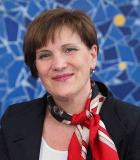
Funzione/Ruolo
Presidente e socia fondatrice di Talent4Rise, Milano
Percorso professionale
Nel 1986 consegue la Laurea in Fisica Elettronica e Sistemica, presso l'Università degli Studi di Milano con una tesi sugli effetti delle piogge acide svolta presso il CRTN (Centro di Ricerca Termiche e Nucleari dell'ENEL). Nel 1987 entra nel Consorzio Italtel Telesis nel ruolo di Proposal Manager per lo sviluppo delle reti di monitoraggio ambientale e dei primi modelli matematici per la previsione della qualità dell'aria (progetto DISIA Ministero dell'Ambiente). Dal 1988 al 1997 è Responsabile del Sottosistema Ambiente nel Consorzio 5T. Nel 1997 entra in Italtel S.p.A. con il ruolo di Proposal Manager e partecipa alla gara ministeriale per l'assegnazione del terzo operatore mobile (Wind). In seguito, dal 2000 al 2013, è International Bid and Contract Manager e contribuisce alla realizzazione d'importanti reti intranet (EINET-Esercito Italiano), la dorsale IP della Rete Italiana della Ricerca e dell'Università (Consorzio GARR) e VoIP per operatori internazionali (SNCF, Société Nationale des Chemins de fer Français) e italiani (CGIL Piemonte, Acciaieria Cogne di Aosta e per lo stabilimento Barilla). Nel 2013 fonda l'associazione Talent4Rise.
Risultati scientifici
Paola Corradi si occupa da quasi trent'anni di sviluppo di reti ICT per imprese e pubblica amministrazione, di soluzioni cloud, di start-up di nuovi servizi e nuovi mercati. I suoi attuali interessi riguardano le applicazioni di ICT innovative per le smart cities e le relazioni internazionali come leva di sviluppo in un mondo globalizzato. Sostenendo l'importanza del valore condiviso tra pubblica amministrazione, aziende profit e no-profit, per attivare circuiti cooperativi e di feedback positivo e lo sviluppo delle nuove tecnologie digitali come strumento per la crescita economica, Paola Corradi partecipa a Expo 2015 con una serie di workshop in Cascina Triulza e di mostre culturali sui temi di Expo (Mostra Epica di Expo in Città - Pastori dell'alpe: 100 storie, 100 volti per nutrire il Pianeta). E porta a Expo 2015 l'originale progetto Rise2Up, il cui obiettivo primario è dare visibilità alle buone pratiche della aziende italiane, presenti in Italia e all'estero, che si distinguono per Qualità e Sicurezza, Educazione Alimentare, Originalità e Biodiversità, Eco-sostenibilità, Salute, WEB2.0, Internazionalità, Tradizione e Conservazione e Innovazione. Nell'aprile del 2016 organizza una missione imprenditoriale a Dubai sui temi dell'innovazione. Oggi promuove, con il supporto della Direzione di Talent4Rise, workshop scientifici all'interno del programma Human Factory Day di Fondazione Triulza.
Riconoscimenti e premi
Il progetto Rise2Up è stato premiato dalla Camera di Commercio di Milano tra i migliori progetti presentati ai Tavoli Tematici di Expo2015. Paola Corradi è componente del Consiglio Generale di Fondazione Triulza come socia fondatrice.

Funzione/Ruolo
Professoressa ordinaria di Farmacologia presso l'Università di Bari
Percorso professionale
Dopo aver conseguito la laurea in Medicina e Chirurgia all'Università di Bari nel 1979, si specializza in Neurologia nella stessa università. Ottiene in seguito una borsa di studio dall'Istituto Mario Negri di Milano e, nel 1984, si trasferisce come ricercatrice al Duke University Medical Center, Durham negli Stati Uniti, nel gruppo del Dr. R.J. Lefkowitz, premio Nobel per la Chimica nel 2012. La sua carriera accademica continua come Research Assistant Professor nella stessa Duke University e, dal 1992, come professoressa ordinaria di Farmacologia all'Università di Losanna in Svizzera. Nel 2007 torna in Italia definitivamente e ottiene la cattedra di Farmacologia all'Università di Bari.
Risultati scientifici
Susanna Cotecchia è da sempre impegnata nella ricerca di base quale strumento indispensabile per la comprensione dei meccanismi delle malattie e dell'azione dei farmaci. Il suo lavoro si focalizza sullo studio dei recettori di membrana e della mutagenesi sito-diretta, particolare tecnica utilizzata in biologia molecolare per per studiare la relazione struttura-funzione delle proteine. Questa linea di ricerca ha lo scopo di affrontare le questioni fondamentali della farmacologia molecolare, fornendo dei metodi di screening rapidi e informazioni utili per comprendere il meccanismo di azione dei medicinali. Il traguardo è quello di costruire nuove molecole con proprietà farmacologiche selettive e mirate, il cosiddetto drug design, che eviti effetti collaterali nel trattamento di numerose malattie.
Attività editoriali e pubblicazioni
È autrice di più di 100 articoli scientifici di portata nazionale ed internazionale, tra cui:
(2006) Stanasila L, Abuin L, Diviani D, Cotecchia S. Direct interaction of ezrin with the alpha1b-adrenergic receptor regulates recycling of the internalized receptors. Journal of Biological Chemistry, 281:4354-63.
(2005) Hosoda C, Koshimizu TA, Tanoue A, Nasa Y, Oikawa R, Tomabechi T, Fukuda S, Shinoura H, Oshikawa S, Takeo S, Kitamura T, Cotecchia S, Tsujimoto G. Two alpha1-adrenergic receptor subtypes regulating the vasopressor response have differential roles in blood pressure regulation. Molecular Pharmacology, 67:912-22.
(2005) Novi F, Stanasila L, Giorgi F, Corsini GU, Cotecchia S, Maggio R. Paired activation of two components within muscarinic M3 receptor dimers is required for recruitment of beta-arrestin-1 to the plasma membrane.The Journal of Biological Chemistry, 280:19768-76.
(2005) Costa T and Cotecchia S. Historical Perspective: The discovery of inverse efficacy and the constitutive activity of GPCRs. Trends in Pharmacological Sciences.
(2005) Hosoda C, Tanoue A, Shibano M, Tanaka Y, Hiroyama M, Koshimizu TA, Cotecchia S, Kitamura T, Tsujimoto G, Koike K. Correlation between vasoconstrictor roles and mRNA expression of alpha(1) adrenoceptor subtypes in blood vessels of genetically engineered mice. British Journal of Pharmacology 146:456-66.
(2005) Sarang Z, Molnar P, Nemeth T, Gomba S, Kardon T, Melino G, Cotecchia S, Fesus L, Szondy Z. Tissue transglutaminase (TG2) acting as G protein protects hepatocytes against Fas-mediated cell death in mice. Hepatology 42:578-87.
(2004) Diviani D, Abuin L, Cotecchia S and Pansier L. Anchoring of both PKA and 14-3-3 inhibits the Rho-GEF activity of the AKAP-Lbc signaling complex, EMBO Journal 23:2811-20.
(2004) Cotecchia S, Stanasila L, Diviani D, Bjorklof K, Rossier O and Fanelli F. Structural determinants involved in the activation and regulation of G protein-coupled receptors: lessons from the alpha1-adrenegic receptor subtypes. Biology of the Cell, 96:327-33.
(2005) Zhang H, Cotecchia S, Thomas SA, Tanoue A, Tsujimoto G and Faber JE. Gene deletion of dopamine beta-hydroxylase and alpha1-adrenoceptors demonstrates involvement of catecholamines in vascular remodeling. American Physiological Society Journals, Heart and Circulatory Physiology, 287:H2106-H2114.
(2004) Townsend SA, Jung AS, Gillian Hoe YS, Lefkowitz RY, Khan SA, Lemmon CA, Harrison RW, Lee K, Barouch LA, Cotecchia S, Shoukas AA, Nyhan D, Hare JM and Berkowitz DE. Critical role for the alpha-1B adrenergic receptor at the sympathetic neuroeffector junction. Hypertension, 44:776-82.
Riconoscimenti e premi
Susanna Cotecchia riceve nel 1995 il premio della Federazione Europea delle società biochimiche (FEBS). Nel 2001 viene premiata con il "Receptor Research Prize" della Perkin-Elmer Life Sciences.

Funzione/Ruolo
Professoressa ordinaria in Ingegneria Economico Gestionale all'Università degli Studi dell'Aquila.
Percorso professionale
Dopo la laurea in Economia all’Università degli Studi dell’Aquila, dal 2000 al 2005 presta servizio, prima come tutor poi come collaboratrice alla ricerca ed alla didattica, presso l'Università degli Studi di L’Aquila, Facoltà di Ingegneria, per gli insegnamenti di Economia Applicata all’Ingegneria, Economia Industriale ed Economia dei Servizi di Pubblica Utilità. Parallelamente, prosegue il suo percorso formativo con un dottorato di ricerca in Ingegneria Economico Gestionale presso l’Università degli Studi di San Marino che consegue nel 2004.
Nel 2007 è ricercatrice, nel 2015 è professoressa associata e dal 2020 è professoressa ordinaria in ingegneria Economico Gestionale presso l’Università degli Studi dell’Aquila.
Afferente al Collegio di Ingegneria Industriale ed al Collegio di Ingegneria Elettronica, la sua attività di docenza è focalizzata sui corsi di Economia ed Organizzazione Aziendale e Gestione dei Sistemi Sanitari e Strumentazione di Diagnostica Medica.
Risultati scientifici
L’attività di ricerca della Prof.ssa Federica Cucchiella è iniziata nel 2000 con il Dottorato di Ricerca in Ingegneria Economico Gestionale.
Inizia la propria attività scientifica interessandosi delle problematiche di ottimizzazione delle performance della supply chain e di trasferimento tecnologico.
Le ricerche si sono poi focalizzate su tematiche ambientali inerenti la gestione dei rifiuti, lo sfruttamento ecosostenibile dell'energia solare, le energie rinnovabili e l’economia circolare.
Nelle ricerche scientifiche condotte una particolare attenzione è stata rivolta, con riferimento agli aspetti economici e gestionali, alla gestione degli investimenti finalizzati alla promozione delle energie da fonti rinnovabili con specifica concentrazione all’energia fotovoltaica, al biometano ed agli inceneritori con recupero energetico. Sono state inoltre sviluppate ricerche per promuovere l'adozione, da parte del mercato, di tecnologie innovative a supporto delle energie rinnovabili, analizzando come semplificare l'interconnessione al sistema di trasmissione e distribuzione dell’energia e come supportare politiche che consentano la generazione, l'integrazione, la sicurezza e l'uso sostenibile di energia rinnovabile.
Al fine di promuovere ed incentivare uno sviluppo sostenibile, si è interessata dello studio di nuovi modelli di business che mettano in pratica i principi dell’Economia Circolare con riferimento, tra gli altri, ai rifiuti da apparecchiature elettriche ed elettroniche.
Negli ultimi anni le attività di ricerca scientifica della Prof.ssa Federica Cucchiella si sono concentrate sulla definizione di framework multidisciplinari a supporto di decisioni che favoriscano il retrofit degli edifici esistenti al fine ultimo di rendere le città più efficienti, intelligenti, resilienti ed in generale sostenibili.
Le sue ricerche sono generalmente caratterizzate da una elevata interdisciplinarità in un’ampia gamma di aree di ingegneria e scienze applicate alle energie rinnovabili.
È autrice di quattro brevetti di invenzione industriale che possono contribuire alla promozione dello sviluppo sostenibile ed è socia fondatrice dello Spin-off SENSing. La società, di cui ha presieduto il CDA, opera nel campo della produzione di prodotti ingegneristici materiali e bio-materiali innovativi, della ricerca scientifica e dell'innovazione tecnologica applicata all'innovazione di processo o prodotto e l'erogazione di servizi nel campo della ricerca scientifica.
Attività editoriali e pubblicazioni
È co-autrice di circa 100 pubblicazioni scientifiche, tra cui:
[2020] Cucchiella F, D'Adamo I, Gastaldi M, Koh L, Santibanez-Gonzalez EDR. Assessment of ghg emissions in Europe: Future estimates and policy implications. Environmental Engineering and Management Journal, 19(1):131-42.
[2020] Annibaldi V, Cucchiella F, De Berardinis P, Gastaldi M, Rotilio M. An integrated sustainable and profitable approach of energy efficiency in heritage buildings. Journal of Cleaner Production, 251.
[2019] Ferella F, Cucchiella F, D'Adamo I, Gallucci K. A techno-economic assessment of biogas upgrading in a developed market. Journal of Cleaner Production, 210:945-57.
[2019] Annibaldi V, Cucchiella F, De Berardinis P, Rotilio M, Stornelli V. Environmental and economic benefits of optimal insulation thickness: A life-cycle cost analysis. Renewable and Sustainable Energy Reviews, 116.
[2018] Cucchiella F, Gastaldi M, Miliacca M. The management of greenhouse gas emissions and its effects on firm performance. Journal of Cleaner Production, 167:1387-400.
[2018] Awasthi AK, Cucchiella F, D'Adamo I, Li J, Rosa P, Terzi S, et al. Modelling the correlations of e-waste quantity with economic increase. Science of The Total Environment, 613-614:46-53.
[2017] Cucchiella F, D'Adamo I, Gastaldi M. Sustainable waste management: Waste to energy plant as an alternative to landfill. Energy Conversion and Management, 131:18-31.
[2016] Cucchiella F, D’Adamo I, Rosa P. Urban waste to energy (WTE) plants: A social analysis. JP Journal of Heat and Mass Transfer, 13(3):421-44.
[2016] Cucchiella F, D'Adamo I, Gastaldi M. A profitability assessment of small-scale photovoltaic systems in an electricity market without subsidies. Energy Conversion and Management, 129:62-74.
[2016] Cucchiella F, D'Adamo I. Technical and economic analysis of biomethane: A focus on the role of subsidies. Energy Conversion and Management, 119:338-51.
[2015] Cucchiella F, D’Adamo I, Lenny Koh SC, Rosa P. Recycling of WEEEs: An economic assessment of present and future e-waste streams. Renewable and Sustainable Energy Reviews, 51:263-72.
[2015] Cucchiella F, D’Adamo I, Gastaldi M. Financial analysis for investment and policy decisions in the renewable energy sector. Clean Technologies and Environmental Policy, 17(4):887-904
Riconoscimenti e premi
2020 Compare tra i 100.000 scienziati internazionali (nei settori di ricerca Energy ed Environmental Sciences) individuati nei database PLOS (PLOS - 100.000 Top Scientists) e realizzati dalla rivista internazionale Plos Biology per classificare i professori degli atenei di tutto il mondo.
2017 VQR 2011/2014 - 1° posto a livello nazionale del Gruppo Univaq. I prodotti della Prof. Cucchiella ricevono tutti la valutazione massima pari ad 1 (eccellente).
2017 Risulta assegnataria del Fondo di finanziamento per le attività base di ricerca (FFABR) destinato a contribuire alla ricerca di base di ricercatori e professori di seconda fascia in servizio a tempo pieno presso le Università statali.
2017 Il paper “Recycling of WEEEs: An economic assessment of present and future e-waste streams” (Renewable and Sustainable Energy Reviews, 2015, 51:263-72) è classificato su Web of Science come Highly Cited Paper.
2015 Il lavoro "Cleaner Energy Production and Sustainable Investment: A Portfolio Analysis in the Italian Electricity Market" presentato al 5th International Workshop Advances in Cleaner Production (San Paulo, Brazil, 20-22 May 2015) riceve la "Special mention" in the 5th International Workshop.
2015 Riceve da Elsevier l'Atlas Award per il paper "Recycling of WEEEs: An economic assessment of present and future e-waste streams" Renewable and Sustainable Energy Reviews (Volume 51, November 2015).
2010 Il suo contributo "Risk management in supply chain: a real option approach" è classificato tra i Top 20 articles del Journal of Manufacturing Technology management.
2010 Riceve da Supply Chain Management: an International Journal (Emerald Group Publishing Limited) il riconoscimento di Higly Commended Award per il paper "A photovoltaic system in a residential building: environmental and economic optimization analysis" presentato durante 8th International Conference on Supply Chain Management and Information Systems, Hong Kong, China, 6-8 ottobre 2010.
2007 Highly Commended Winner at the Emerald Literati Network Awards for Excellence.
2007 per l'articolo "Risk management in supply chain: a real option approach" Journal of Manufacturing Technology Management - special issue, 17(6), 700-720.

Funzione/Ruolo
Professoressa ordinaria di Chimica presso l'Università di Bari
Percorso professionale
Dopo la laurea in Chimica presso l'Università di Bari nel 1993, prosegue la sua formazione con un dottorato di ricerca in Chimica nel 1996 e, fra il 1995 e il 1996, è Research Assistant del dipartimento di Chimica della University College London. Dal 1996 al 1998, tornata in Italia, svolge un post dottorato presso il Centro Studi Chimico Fisici sull'Interazione Luce-Materia del CNR, a Bari. Dal 1999 è ricercatrice del Centro Studi Chimico Fisici sull'Interazione Luce-Materia, l'anno successivo diventa ricercatrice a tempo indeterminato e dal 2010 è Prima Ricercatrice dell'Istituto per i Processi Chimico Fisici (IPCF) del CNR di Bari. Dal 2018 è Professoressa Ordinaria di chimica presso l'Unniversità di Bari.
Risultati scientifici
Maria Lucia Curri è attualmente responsabile per le attività di chimica dei materiali, volte a progettare, fabbricare ed elaborare solidi inorganici su scala nanometrica, all'interno dell'Istituto per processi Chimico Fisici di Bari. Istituto che svolge un'attività di ricerca interdisciplinare orientata alla valorizzazione, al trasferimento tecnologico e alla formazione su campi di ricerca quali materia soffice, materiali e sistemi complessi, compositi nanostrutturati, sistemi biomimetici, metodologie innovative e applicazioni multidisciplinari. Le attività principali di Maria Lucia Curri, condotte nell'ambito di progetti di ricerca nazionali e internazionali, riguardano la sintesi di nanoparticelle (ovvero particelle formate da aggregati atomici o molecolari con un diametro compreso fra 2 e 200 nanometri) con il controllo sulla forma, dimensione e fase cristallina, per regolare con precisione le loro proprietà chimico-fisiche e la loro funzionalizzazione. In questo senso importante è lo studio delle proprietà delle nanoparticelle colloidali fabbricate per valutare il loro potenziale utilizzo dei materiali nanostrutturati in campo biomedico, quali sistemi teragnostici per la diagnosi e la cura di patologie, nella conversione dell'energia e nel settore delle tecnologie ambientali, per l'abbattimento di inquinanti e la realizzazione di sensori. Di rilievo sono i risultati ottenuti nell'ambito delle applicazioni ambientali di semiconduttori nanostrutturati dal Progetto Europeo LIMPID sui "Materiali nanocompositi per la degradazione fotocatalitica di inquinanti", di cui è stata coordinatrice.
Attività editoriali e pubblicazioni
È co-autrice di più di 200 pubblicazioni e più di 180 articoli su riviste internazionali peer-reviewed e un certo numero di altre pubblicazioni, compresi 10 capitoli di libri.
Di seguito, una selezione:
(2019) Truppi A., Petronella F., Margiotta V., Lasorella G., Giotta G., Giannini C., Sibillano T., Murgolo S., Mascolo G., Agostiano A., Curri M. L. , Comparelli R. Gram-scale synthesis of UV–vis light active plasmonic photocatalytic nanocomposite based on TiO2/Au nanorods for degradation of pollutants in water Applied Catalysis B, 243, 604-613.
(2016) Valente G, Depalo N, de Paola I, Iacobazzi RM, Denora N, Laquintana V, Comparelli R, Altamura E, Latronico T, Altomare M, Fanizza E, Striccoli M, Agostiano A, Saviano M, Del Gatto A, Zaccaro L, Curri ML. Integrin Targeting with Peptide Bioconjugated to Semiconductor-Magnetic Nanocrystalline Heterostructures. Nano Research, 9:644-662.
(2015) Ingrosso C, Esposito Corcione C, Striani R, Comparelli R, Striccoli M, Agostiano A, Curri ML, Frigione M. UV-curable Nanocomposite based on Methacrylic-Siloxane Resin and Surface modified-TiO2Nanocrystals. ACS Applied Materials and Interfaces, 7:15494-15505.
(2014) Corricelli M, Depalo N, Di Carlo E, Fanizza E, Laquintana V, Denora N, Agostiano A, Striccoli M, Curri ML. Biotin-decorated silica coated PbS nanocrystals emitting in the second biological near infrared window for bioimaging. Nanoscale,6: 7924-7933.
(2013) Fanizza E, Depalo N, Clary L, Agostiano A, Striccoli M, Curri ML. A combined size sorting strategy for monodisperse plasmonic nanostructures. Nanoscale, 5(8):3272-82.
(2013) Placido T, Aragay G, Pons J, Comparelli R, Curri ML, Merkoçi A. Ion-Directed Assembly of Gold Nanorods: a Strategy for Mercury Detection. ACS Applied Materials and Interfaces, 5 (3):1084-1092.
(2010) Ingrosso C, Sardella E, Keller D, Dohn S, Striccoli M, Agostiano A, Boisen A, Curri ML. Surface functionalization of epoxy resist based microcantilevers with iron oxide nanocrystals. Advanced Material, 22:3288-3292.
(2009) Placido T, Comparelli R, Giannici F, Cozzoli PD, Capitani G, Striccoli M, Agostiano A, Curri ML.Photochemical Synthesis of Water-Soluble Gold Nanorods: the Role of Silver in Assisting Anisotropic Growth. Chemistry of Materials, 18:4192-4202.
(2009) Kim JY, Ingrosso C, Fakhfouri V, Striccoli M, Agostiano A,Curri ML, Brugger J. Multi-color inkjet printing of highly luminescent nanocrystal based nanocomposites. Small, 5:1051-1057.
(2007) Ingrosso C, Fakhfouri V, Striccoli M, Agostiano A, Voigt A, Gruetzner G, Curri ML, Brugger J. Luminescent nanocrystal modified epoxy photoresist for the fabrication of 3-D high aspect-ratio microstructures. Advanced Functional Materials, 17:2009-2017.
(2005) Comparelli R, Curri ML, Fanizza E, Cozzoli PD, Mascolo G, Agostiano A. UV-induced Photocatalytic Degradation of Azo Dyes by Organic-Capped ZnO Nanocrystals Immobilized onto Substrate. Applied Catalysis B: Environmental, 60:1-11.
Riconoscimenti e premi
Maria Lucia Curri ha ricevuto numerosi riconoscimenti per i suoi poster scientifici.
Nel 2000, premio della Società Italiana di Chimica "L. Senatore" per il poster ”Chemical and physical characterization of hybrid structures based on in organic nanocrystalline semiconductors and semiconducting polymer for opto-electronic applications”
Nel 2002, il poster “Colloidal oxide nanoparticles for the photocatalytic degradation of organic dyes” viene riconosciuto come il migliore all'E-MRS Spring Meeting di Strasburgo.
Nel 2003, il poster "TiO2 nanocrystals -conjugated -polymer thin film for photovoltaic application" viene riconosciuto come il migliore all'E-MRS Spring Meeting di Strasburgo.
Nel 2004, il poster “Hybrid organic nanocomposites based on semiconducting colloidal quantum dots in polymers” viene riconosciuto come il migliore all'E-MRS Spring Meeting di Strarsburgo.
Nel 2006, premio della Società Italiana di Chimica "L. Senatore" per il poster “Optical and morphological properties of hybrid nanocomposite based on colloidal TiO2 nanocrystals in polymer”.
Nel 2017, il poster “Drug Delivery Nanovectors Based on SPIONS for Targeted Therapy of Hepatocellular Carcinoma” riceve la nominatin per il miglior poster all'IEEE NEMS 2017 di Los Angeles, Stati Uniti.
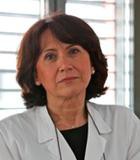
Funzione/Ruolo
Responsabile del Dipartimento di Oncologia Sperimentale e Medicina Molecolare dell'Istituto tumori di Milano
Percorso professionale
Dopo la laurea in Scienze Biologiche presso l'Università degli Studi di Milano nel 1976, prosegue la sua formazione presso il laboratorio di oncologia dell'Health Science Center di Tucson, negli Stati Uniti. Consegue poi una specializzazione in Statistica Medica e Biomedica presso l'Università degli Studi di Milano nel 1997. Nel 1985 diventa professoressa della Scuola Italiana di Senologia e nel 2001 professoressa per il Master in Senologia Diagnostica e Terapeutica dell'Università di Siena, ruoli che ricopre tuttora. E' Inoltre responsabile del Dipartimento di Oncologia Sperimentale e Medicina Molecolare dell'Istituto dei tumori di Milano.
Risultati scientifici
Gli interessi principali di Maria Grazia Daidone sono lo studio e la caratterizzazione di cellule tumorali a elevato potenziale. Ciò avviene anche attraverso studi traslazionali in tumori umani solidi per l'identificazione di marcatori/profili biomolecolari che conducono a una diagnosi, prognosi e risposta a trattamenti specifici, e attraverso lo studio dei meccanismi di resistenza ad agenti antitumorali (farmaci e/o ormoni). La ricerca preclinica sui biomarcatori e sulle interazioni tra cellule tumorali e sistema immunitario è un importante supporto al trattamento e cura dei tumori: nello specifico Maria Grazia Daidone è impegnata nella ricerca sulle cellule tumorali del cancro al seno, all'ovaio e alla cervice uterina. Daidone coordina anche programmi di controllo di qualità per la formulazione e proposizione di linee guida per l'utilizzo clinico di biomarcatori e per la raccolta e conservazione di materiale biologico (BioBanche).
Attività editoriali e pubblicazioni
E' autrice di diversi capitoli di libri ed anche di più di 200 pubblicazioni scientifiche su riviste nazionali ed internazionali tra cui:
(2016) Callari M, Guffanti A, Soldà G, Merlino G, Fina E, Brini E, Moles A, Cappelletti V, Daidone MG. In-depth characterization of breast cancer tumor-promoting cell transcriptome by RNA sequencing and microarrays. Oncotarget, 7(1):976-94.
(2016) Callari M, Cappelletti V, D'Aiuto F, Musella V, Lembo A, Petel F, Karn T, Iwamoto T, Provero P, Daidone MG, Gianni L, Bianchini G. Subtype-Specific Metagene-Based Prediction of Outcome after Neoadjuvant and Adjuvant Treatment in Breast Cancer. Clinical Cancer Research, 22(2):337-45.
(2015) Cappelletti V, Appierto V, Tiberio P, Fina E, Callari M, Daidone MG. Circulating Biomarkers for Prediction of Treatment Response. Journal of the National Cancer Institute, (51):60-3.
(2015) D'Aiuto F, Callari M, Dugo M, Merlino G, Musella V, Miodini P, Paolini B, Cappelletti V, Daidone MG. miR-30e is an independent subtype-specific prognostic marker in breast cancer. British Journal of Cancer, 113(2):290-8.
(2015) Musella V, Pietrantonio F, Di Buduo E, Iacovelli R, Martinetti A, Sottotetti E, Bossi I, Maggi C, Di Bartolomeo M, de Braud F, Daidone MG, Cappelletti V. Circulating tumor cells as a longitudinal biomarker in patients with advanced chemorefractory, RAS-BRAF wild-type colorectal cancer receiving cetuximab or panitumumab. International Journal of Cancer, 137(6):1467-74.
(2015) Fina E, Callari M, Reduzzi C, D'Aiuto F, Mariani G, Generali D, Pierotti MA, Daidone MG, Cappelletti V. Gene expression profiling of circulating tumor cells in breast cancer. Clinical Chemistry, 61(1):278-89.
(2014) Callari M, Musella V, Di Buduo E, Sensi M, Miodini P, Dugo M, Orlandi R, Agresti R, Paolini B, Carcangiu ML, Cappelletti V, Daidone MG. Subtype-dependent prognostic relevance of an interferon-induced pathway metagene in node-negative breast cancer. Molecular Oncology, 8(7):1278-89.
(2011) Cordenonsi M, Zanconato F, Azzolin L, Forcato M, Rosato A, Frasson C, Inui M, Montagner M, Parenti AR, Poletti A, Daidone MG, Dupont S, Basso G, Bicciato S, Piccolo S. The Hippo transducer TAZ confers cancer stem cell-related traits on breast cancer cells. Cell, 147(4):759-72.
(2011) Callari M, Cappelletti V, De Cecco L, Musella V, Miodini P, Veneroni S, Gariboldi M, Pierotti MA, Daidone MG. Gene expression analysis reveals a different transcriptomic landscape in female and male breast cancer. Breast Cancer Research and Treatment, 127(3):601-10.
(2010) Martello G, Rosato A, Ferrari F, Manfrin A, Cordenonsi M, Dupont S, Enzo E, Guzzardo V, Rondina M, Spruce T, Parenti AR, Daidone MG, Bicciato S, Piccolo S. A MicroRNA targeting dicer for metastasis control. Cell, 141(7):1195-207.
Riconoscimenti e premi
Nel maggio del 2014 Maria Grazia Daidone riceve il Premio R.O.S.A. (Risultati Ottenuti Senza Aiuti) dal Canova Club di Roma.
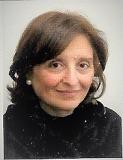
Funzione/Ruolo
Professoressa ordinaria, Vice Direttrice del Dipartimento di Ingegneria dell’Informazione, Università degli Studi di Brescia
Percorso professionale
Dopo la Laurea in Fisica, indirizzo Cibernetica presso l’Università degli Studi di Milano, svolge la sua attività in area informatica come borsista CNR (1977-1980), ricercatrice universitaria (1980-1989) e professoressa associata (1989) presso la stessa Università. Nel 1991 viene chiamata al Politecnico di Milano. Nel 1994 diventa professoressa ordinaria di Ingegneria Informatica e viene chiamata dall’Università di Ancona, dove ricopre il ruolo di Direttrice dell’Istituto di Informatica. Nel 1996 è chiamata dall’Università di Brescia, presso la Facoltà di Ingegneria per la cattedra di Sistemi Informativi. In questo Ateneo svolge intensa attività didattica, di ricerca e di servizio istituzionale promuovendo lo sviluppo dell’area dell’Ingegneria Informatica. Dal novembre 2010 all’ottobre 2016 è delegata del Rettore per l’Innovazione dei Sistemi Informativi di Ateneo, e guida con successo un radicale e complesso processo di rinnovamento dell’infrastruttura ICT e dei sistemi informativi di Ateneo, volto al miglioramento del trattamento delle informazioni, della comunicazione con gli utenti e dell’erogazione dei servizi online. In tale ruolo rappresenta l’Università di Brescia nel Consiglio di Amministrazione e nel Consiglio Consortile del consorzio CINECA (Consorzio interuniversitario per il calcolo automatico) e del consorzio CILEA (Consorzio interuniversitario lombardo per l’elaborazione automatica). Dal 2011 al 2016 ricopre numerosi incarichi, tra cui quelli di Presidente del Sistema Bibliotecario di Ateneo e Presidente del Comitato per l’ICT. Promotrice del Laboratorio di Ateneo su Big&Open Data, è nel Comitato Scientifico del corso di specializzazione su Industry 4.0 organizzato dall’Università degli Studi di Brescia con l’Associazione Industriale Bresciana. E’ membro del Consiglio Direttivo del Consorzio Interuniversitario Nazionale per l’Informatica (CINI), e rappresentante di Ateneo per i Laboratori su Big Data, Smart Cities, Assistive Technologies.
Risultati scientifici
L’attività di ricerca di Valeria De Antonellis si svolge con continuità nell’area delle basi di dati, sistemi informativi e web con particolare attenzione alle metodologie di progettazione, alla modellazione concettuale, rappresentazione e integrazione semantica di dati, processi, servizi. A livello internazionale si è affermata per aver coordinato il progetto finalizzato di ricerca CNR "DATAID" che ha prodotto la metodologia DATAID-1 per la progettazione di basi di dati (citata nel sito storico "People Behind Informatics: The history of Conceptual Modeling"). All’inizio degli anni ottanta, ha sostenuto l’importanza della modellazione concettuale congiunta di dati e processi per tener conto dei requisiti statici e dinamici dei sistemi da progettare, anticipando contenuti delle metodologie di progettazione orientate a oggetti. Per rispondere alla crescente esigenza di condividere ed elaborare dati provenienti da sorgenti eterogenee, ha proposto tecniche originali di integrazione semantica e di matching automatico di schemi di dati. Ha affrontato problematiche nell'area del Semantic Web, proponendo tecniche innovative di ricerca, analisi e ranking di dati e di servizi disponibili su web. I suoi temi di ricerca attuali sono rivolti allo sviluppo di modelli, metodi e strumenti innovativi per la gestione ed esplorazione di Big Data, con applicazione in ambiti strategici quali Smart Cities e Industry 4.0.
Attività editoriali e pubblicazioni
Valeria De Antonellis è co-autrice dei libri: Relational Database Theory (Benjamin/Cummings 1993, ISBN 0-8053-0249-2) e La Teoria Relazionale dei Dati (Bollati Boringhieri, ISBN: 88-339-5031-X, 1985). Curatrice del libro: Computer-Aided Database Design: the DATAID approach (North-Holland 1985, ISBN 0-444-87735-5).
È autrice di oltre 200 articoli scientifici su riviste e atti di conferenze internazionali, fra cui:
(2017) Bianchini D, De Antonellis V, Melchiori M. Wiser: A multi-dimensional framework for searching and ranking Web APIs. ACM Transactions on the Web, 11(3):1-32, ISSN: 1559-1131.
(2014) Bianchini D, Cappiello C, De Antonellis V, Pernici B. Service identification in inter-organizational process design. IEEE Transactions on Services Computing, 7(2): 265-278, ISSN: 1939-1374.
(2010) Bianchini D, Montanelli S, Aiello C, Baldoni R, Bolchini C, Bonomi S, Castano S, Catarci T, De Antonellis V, Ferrara A, Melchiori M, Quintarelli E, Scannapieco M, Schreiber FA, Tanca L. Emergent Semantics and Cooperation in Multi-knowledge Communities: the ESTEEM Approach. World Wide Web, 13(1-2): 3-31, ISSN: 1386-145X.
(2008) Bianchini D, De Antonellis V, Melchiori M. Flexible Semantic-based Service Matchmaking and Discovery. World Wide Web, 11(2):227-251, ISSN: 1386-145X.
(2006) Bianchini D, De Antonellis V, Pernici B, Plebani P. Ontology based Methodology for e-Service Discovery. Information Systems, 31(4):361-380, ISSN: 0306-4379.
(2001) Castano S, De Antonellis V, De Capitani D, Vimercati S. Global Viewing of Heterogeneous Data Sources. IEEE Transactions on Knowledge and Data Engineering, 13(2): 277-297, ISSN: 1041-4347.
(1998) Castano S, De Antonellis V, Fugini MG, Pernici B. Conceptual Schema Analysis: techniques and applications. ACM Transactions on Database Systems, 23(3): 286-332, ISSN: 0362-5915.
(1995) Castano S, De Antonellis V. Reference Conceptual Architectures for Re-engineering Information Systems. International Journal of Cooperative Information Systems, 4(2-3): 213-236, ISSN: 0218-8430.
(1990) De Antonellis V, Zonta B. A Disciplined Approach to Office Analysis. IEEE Transactions on Software Engineering, 16(8): 822-828, ISSN: 0098-5589.
(1985) De Antonellis V, Di Leva A. DATAID-1: a Database Design Methodology. Information Systems, 10(2):181-195, ISSN: 0306-4379.
Riconoscimenti e premi
Ha partecipato come coordinatrice di parti o di interi progetti a numerosi progetti di ricerca nazionali e internazionali. È stata coordinatrice del Gruppo di Lavoro AICA su Basi di Dati (1990-1997) ed ha organizzato numerose giornate di studio e sessioni scientifiche del Congresso AICA. Ha fatto parte dei soci fondatori e del consiglio direttivo del Polo Italiano di Ricerca Scientifica e Tecnologica sull'Interoperabilità "Interop-Vlab.IT" (2008-2014). Nel 2012 ha ricevuto l’Award for Outstanding contribution as Conference Chair 31st International Conference on Conceptual Modeling, ER2012, Florence, Italy. È revisora e PC member delle più importanti conferenze e riviste internazionali nelle tematiche di interesse. È editorial member della rivista internazionale Data&Knowledge Engineering, Elsevier e fa parte del Comitato Scientifico della Collana di Informatica, ed. Franco Angeli.

Funzione/Ruolo
Dirigente di Ricerca dell’Istituto Nazionale di Fisica Nucleare, Direttrice del “Galileo Galilei Institute for Theoretical Physics” Arcetri, Firenze (Italia)
Percorso professionale
Laureata in Fisica all’Università degli Studi di Firenze, dopo un PhD alla Scuola Internazionale di Studi Avanzati (SISSA) per il settore Particelle Elementari, diventa Visiting Scientist presso l’Università di Ginevra ed il Cern, Professoressa a contratto presso la Facoltà di Scienze dell’Educazione e la Facoltà di Fisica e Astronomia dell’Università di Firenze, Dirigente di Ricerca presso la Sezione di Firenze dell’Istituto Nazionale di Fisica Nucleare, Membro del Plenary European Committee for Future Accelerators (ECFA), Direttrice del Galileo Galilei Institute for Theoretical Physics, Arcetri (Firenze).
Risultati scientifici
La sua ricerca si svolge nel campo della fisica delle particelle di alta energia. È da sempre interessata a scenari di fisica “oltre” il Modello Standard che possano risolvere alcuni dei problemi ancora aperti proponendo nuovi modelli e studiando le loro possibili manifestazioni dirette e indirette agli acceleratori di particelle presenti e futuri. Avendo lavorato a lungo sulla costruzione di teorie effettive, ha dato contributi sostanziali alla formulazione di scenari di Higgs composto ma anche alla analisi delle loro implicazioni fenomenologiche. Dopo la scoperta del bosone di Higgs nel 2012, molte domande sono ancora senza risposta: si tratta di uno scalare fondamentale? È il solo responsabile della rottura di simmetria elettrodebole e della generazione di massa? È unico o è parte di un settore di Higgs esteso? È un “portale” verso una nuova dinamica nascosta? Se la risposta a questa ultima domanda è affermativa, allora il bosone di Higgs potrebbe essere una particella composta, uno pseudo-bosone di Nambu-Goldstone associato alla rottura di una simmetria globale; un “nuovo pione” che potrebbe fornire una soluzione al problema della gerarchia. Recentemente lo studio di modelli di dinamica composta nell’universo primordiale ha catturato la sua attenzione, in particolare la possibilità di una forte transizione di fase elettro-debole del primo ordine che può essere responsabile della bariogenesi in modelli di Higgs composto. Un ulteriore aspetto interessante di questo scenario è la generazione di segnali di onde gravitazionali che potrebbero essere osservate ai futuri interferometri.
Attività editoriali e pubblicazioni
[2022] De Curtis S., Delle Rose L., Guiggiani A., Muyor A.G., Panico G., Bubble wall dynamics at the electroweak phase transition, Journal of High Energy Physics 03, 163.
[2019] De Curtis S., Delle Rose L., Panico G., Composite dynamics in the early Universe, Journal of High Energy Physics 12, 149.
[2013] Barducci D, Belyaev A, De Curtis S, Moretti S, Pruna G M. Exploring Drell-Yan signals from the 4D Composite Higgs Model at the LHC, Journal of High Energy Physics 04, 152.
[2012] De Curtis S, Redi M, Tesi A. The 4D composite Higgs, Journal of High Energy Physics 04, 042
[2009] Cacciapaglia G, Deandrea A, De Curtis S. Nearby resonances beyond the Breit-Wigner approximation, Physics Letters B 682: 43-49.
[2004] Casalbuoni R, De Curtis S, Dominici D. Moose models with vanishing S parameter, Physical Review D, PARTICLES, FIELDS, GRAVITATION, AND COSMOLOGY, 70: 055010.
[1999] Casalbuoni R, De Curtis S, Dominici D, Gatto R. SM Kaluza-Klein excitations and electroweak precision tests, Physics Letters B462: 48-54.
[1996] Casalbuoni R, Dominici D, Deandrea A, Gatto R, De Curtis S, Grazzini M. Low energy strong electroweak sector with decoupling, Physical Review D 53: 5201-5221.
[1993] Altarelli G, Casalbuoni R, De Curtis S, Dibartolomeo N, Gatto R, Feruglio F. Extended Gauge-Modrels and Precision Electroweak Data, Physics Letters B 318: 139-147.
[1989] Barducci A, Casalbuoni R, De Curtis S, Gatto R, Pettini G. Chiral-Symmetry Breaking in QCD at Finite Temperature and Density, Physics Letters B 231: 463-470.
[1989] Casalbuoni R, De Curtis S, Dominici D, Feruglio F, Gatto R. Non-Linear Realization of Supersymmetry Algebra from Supersymmetric Constraint, Physics Letters B220: 569-575.
[1988] Barducci A, Casalbuoni R, De Curtis S, Dominici D, Gatto R. Dynamical Chiral-Symmetry Breaking and Determination of the Quark Masses, Physical Review D 38: 238-278.
[1985] Casalbuoni R, De Curtis S, Dominici D, Gatto R. Effective Weak Interaction Theory with a Possible New Vector Resonance From a Strong Higgs Sector, Physics Letters, B 155: 95-99.
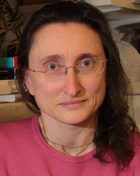
Area STEM: Matematica
Competenze: analisi funzionale, geometria, matematica e musica, pari opportunità nelle STEM
Parole chiave: analisi complessa, analisi quaternionica, divario di genere nella scienza, donne e matematica, donne e scienza, donne nelle STEM, geometria e musica, sistemi dinamici, uguaglianza di genere
Regione: Marche
Funzione/Ruolo
Professoressa ordinaria di geometria all'Università Politecnica delle Marche e coordinatrice del Comitato Pari Opportunità dell’Unione Matematica Italiana
Percorso professionale
Chiara de Fabritiis consegue la laurea in matematica all’università di Pisa e il diploma del corso ordinario della Scuola Normale Superiore di Pisa nel 1989; istituzione in cui consegue il perfezionamento in Matematica nel 1994. Ricopre il ruolo di ricercatrice universitaria in Geometria alla SISSA di Trieste nel 1992-96, per poi trasferirsi nello stesso ruolo all’Università di Bologna. Nel 1999 diviene professoressa associata in Geometria presso l’Università Politecnica delle Marche, per diventare professoressa ordinaria nel 2005 presso lo stesso ateneo. Nel periodo 2008-2011 è direttrice del Dipartimento di Matematica “Vito Volterra”, dal 2022 è direttrice del Consorzio Interuniversitario per l’Alta Formazione Matematica.
Risultati scientifici
L’attività scientifica di Chiara de Fabritiis riguarda principalmente lo studio della geometria complessa delle varietà, cui si aggiungono negli anni più recenti la geometria e l’analisi quaternionica, che divengono poi centrali nella sua ricerca. Si occupa anche di tematiche di genere in ambito STEM; di didattica della matematica, con particolare attenzione all'istruzione terziaria e all'utilizzo delle tecnologie digitali, e di applicazioni della geometria alla tecnologia e all'arte, soprattutto la musica.
Attività editoriali e pubblicazioni
Ha scritto vari libri di testo sia di livello universitario sia divulgativi
C. de Fabritiis: Il teorema fondamentale dell'algebra, I teoremi de Le Scienze, 2024.
C. de Fabritiis: Il teorema di Abel-Ruffini, I teoremi de Le Scienze, 2024.
F. Alessio , C. de Fabritiis, C. Marcelli, P. Montecchiari: Matematica zero, Pearson, 2016.
M. Abate, C de Fabritiis: Geometria analitica con elementi di algebra lineare, McGraw-Hill, 2015.
È anche autrice di numerosi articoli scientifici pubblicati su riviste nazionali e internazionali tra cui:
(2023) F. Alessio, C. de Fabritiis, A. I. Telloni: A STEM Literacy Program for Students in Secondary-Tertiary Transition to Reduce the Gender Gap: a Focus on the Students’ Perception, Journal of Systemics, Cybernetics and Informatics, 19 6, 13 – 21.
(2023) A. Altavilla, C. de Fabritiis: *-Logarithm for Slice Regular Functions, Atti Accademia Nazionale Lincei, Classe di Scienze, 31(2), 491-529.
(2020) A. Altavilla, C. de Fabritiis: Equivalence of slice semi-regular functions via Sylvester operators, Linear Algebra Applications, 607C, 151-189.
(2019) A. Altavilla, C. de Fabritiis: *-exponential of Slice Regular Functions, Proceedings American Mathematical Society, 147, 1173-1188.
(2018) C. de Fabritiis, G. Gentili, G. Sarfatti: Quaternionic Hardy Spaces, Annali Scienze Scuola Normale Superiore di Pisa (5), XVIII-2 697-733.
(2006) C. de Fabritiis: Composition Operators on Bergman Spaces over the Punctured Plane, Journal Functional Analysis, 274, 152 -179.
(2002) C. de Fabritiis: Generic Subgroups of Aut(B_n), Annali Scienze Scuola Normale Superiore di Pisa (5), I, 851-868.
(1999) C. de Fabritiis: G. Gentili: On Holomorphic Maps which Commute with Hyperbolic Automorphisms, Advances in Mathematics, 144, 119 -136.
Riconoscimenti e premi
Dal 2018 fa parte della Commissione Scientifica dell’Unione Matematica Italiana, di cui coordina il Comitato Pari Opportunità. Dallo stesso anno è membro del Comitato Unico di Garanzia del suo ateneo, che presiede dal 2021. Dal 2022 è direttrice del Consorzio Interuniversitario per l’Alta Formazione Matematica. Nel periodo 2015-2023 è direttrice dell'Unità di Ricerca dell’Istituto Nazionale di Alta Matematica presso il Dipartimento di Ingegneria Industriale e Scienze Matematiche. Fa parte delle società scientifiche European Women in Mathematics e European Mathematical Society. Nel 1993 riceve il Premio di studio F. Severi.

Area STEM: Scienze cliniche e scienza dell'alimentazione
Competenze: psichiatria
Parole chiave: ansia, coronavirus, Covid-19, Covid-19: disturbo di stress post-traumatico, Covid-19: impatto sulla violenza domestica, depressione, disturbi psicotici, disturbo da stress post traumatico, lutto complicato, lutto traumatico, spectrum, suicidio, umore, violenza sulle donne
Regione: Toscana
Funzione/Ruolo
Professoressa ordinaria di Psichiatria all'Università di Pisa. Direttrice dell'Unità Operativa di Psichiatria dell'Azienda Ospedaliero-Universitaria Pisana. Presidente del Collegio dei professori ordinari di Psichiatria italiani.
Percorso professionale
Si laurea in Medicina e Chirurgia presso l'Università di Pisa nel 1979 dove, nel 1984, si specializza in Psichiatria. Ricercatrice già nel 1983 all'Istituto di Farmacologia dell'Università di Pisa, dal 1987 assume il medesimo ruolo presso l'Istituto di Psichiatria della stessa Università. Nel 1992 è professoressa associata di Psichiatria, e all'interno dello stesso ateneo nel 2001 diventa ordinaria di Psichiatria presso il Dipartimento di Psichiatria, Neurobiologia, Farmacologia e Biotecnologie. Dal 2001 al 2010 è direttrice della Unità Operativa 2 di Psichiatria, Azienda Ospedaliero-Universitaria Pisana. Dal 2010 è anche direttrice della Unità Operativa 1 di Psichiatria e della Scuola di Specializzazione in Psichiatria dell'Università di Pisa. Dal 2012 coordina la Ricerca e la Didattica del Dipartimento Aziendale Integrato (DAI) di Neuroscienze dell'Azienda Ospedaliero-Universitaria Pisana. Dal 2015 è Vice Presidente della Società Italiana di Psichiatria (SIP). Nel 2018 è stata eletta presidente del Collegio dei professori ordinari di Psichiatria italiani.
Risultati scientifici
La sua attività di ricerca si esplica nell'ambito della psicopatologia, della neurobiologia, della farmacologia clinica e della genetica. Di particolare rilevanza il suo contributo allo "Spectrum Project", un progetto di collaborazione internazionale (Università di Pisa, University of Pittsburgh, University of New York, University of San Diego) per lo sviluppo e la validazione delle interviste cliniche strutturate e dei questionari per la valutazione della sintomatologia dell'umore (SCI-MOODS), dell'ansia (SCI-SHY, SCI-OBS, SCI-TALS), psicotica (SCI-PSY) e da uso di sostanze (SCI-SUBS). Liliana Dell'Osso conduce inoltre ricerche cliniche sul trattamento dei disturbi psicotici, con particolare attenzione agli studi sull'utilizzo della clozapina, sull'uso di antipsicotici tipici e atipici nei pazienti con sindrome bipolare e agli studi sui disturbi schizofrenici. Più recentemente, Liliana Dell'Osso si occupa dello studio del Disturbo Post Traumatico da Stress (PTSD) e dello spettro autistico.
Attività editoriali e pubblicazioni
Liliana Dell'Osso ha scritto diversi saggi scientifici divulgativi:
L'altra Marilyn. Psichiatria e psicoanalisi di un cold case (Le Lettere, Firenze 2016)
L'Abisso negli occhi. Spettro Autistico e violenza di genere nel mito e nell’arte (ETS, Pisa 2016, 2019)
La verità sulla menzogna: dalle origini alla post-verità (ETS, Pisa 2017)
Il caso Coco Chanel. L’insopportabile Genio (Giunti, Firenze 2018)
L’ombra dell’autismo. Declinazioni cliniche e psicopatologiche dello spettro autistico sottosoglia. (Franco Angeli, Milano 2018)
Genio e follia 2.0. Il complesso rapporto tra spettro autistico e competenze eccezionali (Franco Angeli, 2019).
Fatti di quotidiana follia (Giunti, Firenze 2019)
È inoltre autrice ’ autrice/ coautrice/ coeditrice di oltre 800 pubblicazioni su riviste scientifiche, internazionali e nazionali, capitoli di libri: manuali, trattati e monografie (in inglese e in italiano), di volumi, tra cui:
La malattia depressiva (Idelsen-Gnocchi, Napoli, 1989)
Diagnosi psichiatrica e DSM-3-R (Giuffrè, Milano1989)
Da Esculapio a Igea. Un approccio di genere alla salute (Plus, Pisa 2007)
Recurrent Mood Disorders. New Perspectives in Therapy (Springer, 2012)
Manuale di Clinica e Riabilitazione Psichiatrica, vol I e vol II (Giovanni Fioriti Editore, Roma, 2018)
Riconoscimenti e premi
Liliana Dell'Osso fa parte della Top Italia Scientists, per l'ambito delle Scienze cliniche, è inclusa nella Top Italian Women Scientists ed è membro della Virtual Italia Academy che include gli scienziati e le scienziate italiane che lavorano in Italia e all'estero.
Dal 1 novembre 2021 è decana dell'area Medica dell'Università di Pisa, prima donna nella storia dell'ateneo pisano a raggiungere questo traguardo.
Nel 2021 ha vinto il Premio internazionale "Profilo Donna".
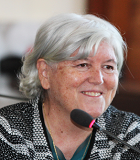
Funzione/Ruolo
Professoressa ordinaria di Farmacologia e già Rettrice dell’Università degli Studi di Cagliari
Percorso professionale
Dopo la laurea in Medicina e Chirurgia presso l’Università di Cagliari, Maria Del Zompo si è specializzata in Neurologia e ha intrapreso la carriera universitaria nella stessa Università come precaria (assistente incaricato) nel 1979. Durante le varie fasi della sua carriera ha passato più di due anni alla “Biological Psychiatry Branch” del National Institute of Mental Health(NIMH), a Bethesda (USA), dove ha collaborato con John Tallman sotto la direzione di Robert M. Post.
Attualmente è Professoressa Ordinaria di Farmacologia nel Corso di Laurea di Medicina e Chirurgia dell’Università di Cagliari, dove dal 2005 al 2007 è stata Pro-Rettrice e dall'aprile del 2015 fino al mese di aprile 2021 è stata Rettrice .
Risultati scientifici
La Professoressa Maria Del Zompo è componente di numerose società scientifiche, tra cui la International Society of Psychiatric Genetics, la International Society of Biological Psychiatry e la Società Italiana di Farmacologia. Ha vinto il premio “Burroughs Wellcome Stipend Award”, Burroughs Wellcome Fund, Research Triangle Park, NC (USA) presso la Biological Psychiatry Branch, NIMH, Bethesda, MD (USA).
La sua attività clinica si è svolta presso l’Unità Complessa di Farmacologia Clinica dell’Ospedale San Giovanni di Dio, Azienda Ospedaliero-Universitaria di Cagliari, una struttura assistenziale ambulatoriale, dotata di day hospital, e dedicata ad alcune patologie nell’ambito delle neuroscienze cliniche, come la malattia bipolare e l’emicrania, e ad attività più specifiche di farmacologia clinica, come il riconoscimento e la gestione delle reazioni avverse da farmaci.
I suoi campi di interesse clinici e di ricerca includono la Psicofarmacologia clinica, la Genetica psichiatrica (epidemiologia e genetica molecolare del disturbo bipolare e del comportamento suicidario), la Genetica di malattie complesse come Emicrania, Cefalea a grappolo, Malattia di Alzheimer, la Farmacogenetica (basi genetiche della risposta ai farmaci e alle reazioni avverse da farmaco).
Attualmente svolge collaborazioni internazionali con il Professor Martin Alda del Department of Psychiatry, Dalhousie University, Halifax, Canada; con il Professor Gustavo Turecki, del Research and Academic Affairs, Department of Psychiatry, McGill University, Montreal, Canada; con il Dottor Ming Ta Michael Lee, del Laboratory for International Alliance on Genomic Research Core for Genomic Medicine, RIKEN Center for Integrative Medical Sciences, Yokohama, Japan e con il Dottor. David Gurwitz, del National Institute for Psychobiology, Tel Aviv University, Israel.
Inoltre, Maria Del Zompo è tra le fondatrici dell’International Consortium on Lithium Genetics (ConLiGen) e dell’International Group for the Study of Lithium Treated Patients (IGSLI), il cui meeting annuale si è tenuto a Cagliari nel 2010.
Nel 2006 ha organizzato, per la prima volta in Italia, il XIV Congresso Mondiale della International Society of Psychiatric Genetics, di cui è componente onoraria, che si è tenuto a Cagliari dal 28 ottobre al 1° novembre 2006.
Attività editoriali e pubblicazioni
La sua produzione scientifica consiste in numerose pubblicazioni su libri e riviste internazionali, pubblicazioni su libri e riviste nazionali e presentazioni a convegni e meeting nazionali e internazionali. La Professoressa Maria Del Zompo ha un totale di 152 pubblicazioni su libri e riviste internazionali, 57 pubblicazioni su libri e riviste nazionali e 248 presentazioni a convegni e meeting nazionali e internazionali (H index: 30 secondo Web of Science).
Nel 2015 la pubblicazione di un articolo intitolato “Renal function during long-term lithium treatment: a cross-sectional and longitudinal study” sulla rivista ad alto impact factor “BMC Medicine” è stata accompagnata da un’intervista pubblicata nel sito BioMe e intitolata “Lithium treatment and renal function: do we really need to be concerned?“.
Maria Del Zompo svolge anche attività di referaggio di articoli scientifici per numerose riviste internazionali di prestigio, ed effettua attività di revisora (?) di progetti scientifici per istituzioni italiane e straniere.
Riconoscimenti e premi
Negli ultimi anni Maria Del Zompo è stata coinvolta in attività sociali e culturali, locali e regionali, alle quali ha partecipato sempre con entusiasmo. Ha vinto il Premio “Eleonora D’Arborea”, istituito dall’International Inner Wheel Club di Cagliari, nel 2000, che premia una donna sarda che con la sua attività sociale, culturale e artistica abbia concorso al progresso sociale e culturale della Sardegna.
Ha vinto il Premio AIDDA (Associazione Imprenditrici e Donne Dirigenti di Azienda) Delegazione Sardegna III Edizione come “Donna dell’Anno 2007” per aver incisivamente contribuito, con l’altissimo livello della sua attività clinica e di ricerca, a dare lustro alla Sardegna e alle donne nel mondo.
Il suo interesse verso la diffusione della cultura, attraverso incontri scientificamente corretti ma divulgativi, è sempre stato costante nel tempo. Nel 2014 ha partecipato alla FAI Marathon dove ha sviluppato la sua conversazione in piazza Martiri, raccontando il legame tra quello che era il cuore commerciale della città e l’Università. Nell’ultimo anno è stata relatrice nella Tavola Rotonda “Scienza e Società: Ricerca e Etica”. Il rapporto tra etica e scienza è sempre stato un argomento caro a Maria Del Zompo: in una intervista di Alessandro Ligas dal titolo “Ricerca, Innovazione ed Etica: un confronto tra progresso scientifico medico e diritti della persona” espone il suo pensiero su un argomento così importante ma anche così delicato per la società.
Con il suo insediamento, nell’aprile 2015, come prima donna rettrice dell’ateneo cagliaritano dopo 60 rettori, ha dato maggiore impulso alle attività culturali dell’ateneo e al coinvolgimento della città.

Funzione/Ruolo
Professoressa ordinaria di Patologia Generale, Università degli Studi di Padova
Percorso professionale
Si laurea in Biologia nel 1976 presso l'Università di Padova, dove continua la sua attività di ricerca, prima come borsista e poi, dal 1981, come Ricercatrice. Presso la stessa Università si specializza in Microbiologia nel 1986. Nel 1992 diventa Professoressa Associata e dal 2004 è Ordinaria di Patologia Generale presso il Dipartimento di Scienze Chirurgiche, Oncologiche e Gastroenterologiche dell’Università di Padova.
Dal Marzo 2005 è Responsabile dell'Unità semplice di Virologia Oncologica, afferente alla Azienda Ospedaliera di Padova e dal 2006 all' Istituto Oncologico Veneto (IOV)-IRCCS.
Dal 2017 è Vice Presidente del Corso di Laurea in Medicina e Chirurgia, Università di Padova.
Risultati scientifici
Dal 1973 al 1983, prima come studente interna, poi come borsista e ricercatrice, si occupa di modelli di oncogenesi sperimentale indotta da retrovirus murini. Dal 1984 il suo campo di ricerca si amplia allo studio dei retrovirus umani nella patogenesi delle neoplasie e delle immunodeficienze umane. Nell’ambito di questi programmi di ricerca, grazie a borse di studio ottenute dall’Associazione Italiana per la Ricerca sul Cancro e dal National Institute of Health-USA , si reca per successivi periodi di tre-quattro mesi, nel 1980, 1984, 1985 e 1988, presso il National Cancer Institute, NIH, Bethesda, USA.
Nel 1989-1990 è componente del gruppo di studio promosso dalla Organizzazione Mondiale della Sanità per la diagnosi e lo studio delle infezioni pediatriche da HIV. Dal 1991 partecipa al network internazionale Pediatric European Network for treatment of AIDS (PENTA) per il trattamento e monitoraggio delle infezioni da HIV in età pediatrica.
Ha coordinato e coordina progetti di Ricerca Nazionali (AIRC, MIUR), ed è stata/è partner di alcuni progetti internazionali, tra cui PENTA-Labnet e EPIICAL.
Gli studi condotti da Anita De Rossi apportano un significativo contributo per la diagnosi precoce delle infezioni perinatali da HIV e per la comprensione dei meccanismi virologici alla base dell'AIDS pediatrico. In particolare, i suoi studi in questo campo dimostrano che la maggior parte delle infezioni avviene in epoca perinatale e che esiste una trasmissione selettiva di varianti virali da madre a figlio. Documenta per prima la resistenza cellulare alla infezione da HIV. Per tale lavoro, successivamente avvalorato e spiegato con la scoperta ad opera di altri gruppi di ricerca dei corecettori virali, la dott.ssa Lucia Ometto, afferente al suo gruppo di ricerca, riceve il premio Cecilia Cioffrese nel 1997.
Più recentemente le sue ricerche si sono estese alle patologie neoplastiche associate al virus di Epstein Barr (EBV) nei pazienti immunocompromessi per infezione da HIV o per terapia iatrogena post-trapianto e allo studio della interazione tra virus oncogeni e potenziale replicativo cellulare, dettato principalmente dal complesso telomero/telomerasi. In questo campo è tra le prime a dimostrare la stretta interazione che si stabilisce a livello molecolare tra EBV e TERT, la componente catalitica della telomerasi, per impedire il ciclo litico virale e promuovere la trasformazione neoplastica.
Infine, i suoi studi su TERT circolante presente nel plasma sono tra i primi a dimostrare nel campo della “biopsia liquida” che TERT può essere un marcatore utile per il monitoraggio della patologia neoplastica e della risposta alla terapia.
Attività editoriali e pubblicazioni
E’ autrice di più di 250 pubblicazioni scientifiche, tra cui:
[2021] Cotugno N, Ruggiero A, Bonfante F, Petrara MR, Zicari S, Pascucci GR, Zangari P, De Ioris MA, Santilli V, Manno EC, Amodio D, Bortolami A, Pagliari M, Concato C, Linardos G, Campana A, Donà D, Giaquinto C; CACTUS Study Team, Brodin P, Rossi P, De Rossi A, Palma P. C. Virological and immunological features of SARS-CoV-2-infected children who develop neutralizing antibodies. Cell Rep. 2021 Mar 16;34(11):108852. doi: 10.1016/j.celrep.2021.108852.
[2018] Rampazzo E, Del Bianco P, Bertorelle R, Boso C, Perin A, Spiro G, Bergamo F, Belluco C, Buonadonna A, Palazzari E, Lonardi S, De Paoli S, Pucciarelli S, De Rossi A. The predictive and prognostic potential of plasma Telomerase Reverse Transcriptase (TERT) RNA in Rectal Cancer. British Journal of Cancer, 118[6]:878-86.
[2015] Klein N, Palma P, Luzuriaga K, Pahwa S, Nastouli E, Gibb DM, Rojo P, Borkowsky W, Bernardi S, Zangari P, Calvez V, Compagnucci A, Wahren B, Foster C, Munoz-Fernández MÁ, De Rossi A, Ananworanich J, Pillay D, Giaquinto C, Rossi P. Early antiretroviral therapy in children perinatally infected with HIV: a unique opportunity to implement immunotherapeutic approaches to prolong viral remission. Lancet Infectious Diseases, 15[9]: 1108-14.
[2013] Giunco S, Dolcetti R, Keppel S, Celeghin A, Indraccolo S, Dal Col J, Mastorci K, De Rossi A. hTERT inhibition triggers Epstein-Barr virus lytic cycle and apoptosis in immortalized and transformed B cells: a basis for new therapies. Clinical Cancer Research, 19[8]: 2036-47.
[2012] Dolcetti R, De Rossi A. Telomere/telomerase interplay in virus-driven and virus-independent lymphomagenesis:pathogenetic and clinical implications. Medicinal Research Reviews, 32[2]:233-53.
[2008] Terrin L, Rampazzo E, Pucciarelli S, Agostini M, Bertorelle R, Esposito G, Del Bianco P, Nitti D, De Rossi A. Relationship betwen tumor and plasma levels of hTERT mRNA in patients with colorectal cancer: implications for monitoring of neoplastic disease. Clinical Cancer Research, 14[22]:7444-51.
[2001] Ballon G, Ometto L, Righetti E, Cattelan AM, Masiero S, Zanchetta M, Chieco-Bianchi L, De Rossi A. Human immunodeficiency virus type 1 modulates telomerase activity in peripheral blood lymphocytes. The Journal of Infectious Diseases, 183[3]: 417-24.
[1996] De Rossi A, Masiero S, Giaquinto C, Ruga E, Comar M, Giacca M, Chieco-Bianchi L. Dynamics of viral replication in infants with vertically acquired human immunodeficiency virus type 1 infection.The Journal of Clinical Investigations, 97[2]: 323-30.
[1995] Ometto L, Zanotto C, Maccabruni A, Caselli D, Truscia D, Giaquinto C, Ruga E, Chieco-Bianchi L, De Rossi A. Viral phenotype and host cell susceptibility to HIV-1 infection as risk factors for mother-to-child HIV-1 transmission. AIDS 9[5]: 427-34.
[1992] De Rossi A, Ometto L, Mammano F, Zanotto C, Giaquinto C, Chieco-Bianchi L. Vertical transmission of HIV-1: lack of detectable virus in peripheral blood cells of infected children at birth.AIDS 6[10]:1117-20.
[1988] De Rossi A, Amadori A, Chieco-Bianchi L, Giaquinto C, Zacchello F, Buchbinder A, Wong-Staal F, Gallo RC. Polymerase chain reaction and in vitro antibody production for the early diagnosis of pediatric HIV infection. Lancet, 2[8605]: 278
[1986] De Rossi A, Franchini G, Aldovini A, Del Mistro A, Chieco-Bianchi L, Gallo RC, Wong-Staal F. Differential response to the cytopathic effects of human T-cell lymphotropic virus type III (HTLV-III) superinfection in T4+ (helper) and T8+ (suppressor) T-cell clones transformed by HTLV-I. Proceedings of the National Academy of Sciences of the United States of America, 83[12]:4297-301.
[1983] De Rossi A, D'Andrea E, Biasi G, Collavo D, Chieco-Bianchi L. Protection from spontaneous lymphoma development in SJL/J(v+) mice neonatally injected with dualtropic SJL-151 virus.Proceedings of the National Academy of Sciences of the United States of America, 80[9]:2775-9.
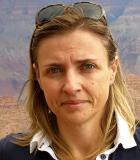
Funzione/Ruolo
Prima ricercatrice dell'Istituto Nazionale di Astrofisica (INAF) sezione di Roma
Percorso professionale
Dopo aver conseguito la laurea in Fisica all'università La Sapienza di Roma nel 1992, prosegue la sua formazione conseguendo nel 1997 un dottorato di ricerca in Astronomia svolto presso il reparto di Planetologia dell'IASF di Roma, l'Osservatorio di Parigi e la stessa università. Nel 1996 grazie a una borsa di studio del CNR spende un anno presso il loro Istituto di Astrofisica Spaziale. Nel 1998 è ricercatrice a tempo determinato presso lo stesso Istituto di Astrofisica Spaziale del CNR, per diventare dal 2001 ricercatrice a tempo indeterminato del CNR, oggi Istituto di Astrofisica e Planetologia Spaziali dell'INAF.
Risultati scientifici
Gli interessi di ricerca di Maria Cristina De Sanctis comprendono principalmente tre campi di studio: i corpi minori del sistema solare e delle superfici planetarie, l'evoluzione termica di corpi del sistema solare, la strumentazione per missioni spaziali. Nello specifico ha analizzato i dati provenienti da osservazioni telescopiche, spaziali e di laboratorio; attraverso queste analisi è stato possibile indagare la composizione di comete e asteroidi, della superficie della Luna e di Mercurio. In particolare ha studiato le caratteristiche mineralogiche di asteroidi tramite osservazioni da terra e da spazio, nonché le emissioni dei gas cometari tramite osservazioni ad alta risoluzione spettrale. Nell'ambito dell'evoluzione termica, ha studiato i corpi ghiacciati del sistema solare, sviluppando un codice numerico complesso che permette di simulare i processi di differenziazione ed evoluzione di tali oggetti (comete, KBOs, Centauri, asteroidi). Per studiare l'evoluzione di tali oggetti è stato messo a punto un codice numerico piuttosto complesso che permette di indagare i processi di differenziazione di corpi ghiacciati, come i nuclei cometari, e non, come gli asteroidi. Questo codice è uno dei più completi esistenti e rappresenta un riferimento nella comunità scientifica internazionale. Maria Cristina De Sanctis ha inoltre sviluppato strumentazione per missioni spaziali, spettrometri a immagine e camere multi spettrali, allo scopo di permettere lo studio delle composizioni degli oggetti del sistema solare. In tale ambito ha seguito lo sviluppo d'interi progetti, in qualità di responsabile o vice responsabile, occupandosi del coordinamento scientifico e tecnico delle attività del team e delle relazioni con il team industriale e con il team ESA o NASA. Nell'ambito della missione Rosetta, ha collaborato alla proposta di uno spettrometro ad immagine, VIRTIS, che è stato selezionato per il payload di Rosetta. In particolare è stata curata la definizione degli obiettivi scientifici e dei requisiti strumentali. Caratteristica principale di questo strumento è avere la possibilità di immagine contemporaneamente all'acquisizione di spettri a media/alta risoluzione. Lo studio delle superfici di asteroidi è stato fatto anche tramite i dati dello spettrometro VIR, di cui è responsabile, a bordo della sonda NASA Dawn che ha osservato sia Vesta che il pianeta nano Cerere. Per l'esplorazione di Marte ha collaborato a diverse proposte in ambito NASA ed ESA. Lo spettrometro a immagini miniaturizzato MA_MISS è attualmente parte del payload della missione ESA Exomars 2020 ma era stato anche selezionato per NASA Mars Sample Return 2003 Lander Mission (MARS 2003). Sempre nell'ambito ESA, è co-investigator dello strumento MAJIS sulla sonda JUICE per lo studio del sistema di Giove e dello strumento SIMBIO-SYS sulla sonda Bepi-Colombo, dedicata allo studio di Mercurio.
Attività editoriali e pubblicazioni
Autrice di più di 180 pubblicazioni su riviste internazionali fra cui:
(2016) De Sanctis MC, Raponi A, Ammannito E, Ciarniello M, Toplis MJ, McSween HY, Castillo-Rogez JC, et al. Bright carbonate deposits as evidence of aqueous alteration on (1) Ceres. Nature, 536, 7614:54-57.
(2016) Filacchione G, De Sanctis MC, Capaccioni F, Raponi A, Tosi F, et al. Exposed water ice on the nucleus of comet 67P/Churyumov-Gerasimenko. Nature, 529, 7586:368-372.
(2016) Russell CT, Raymond CA, Ammannito E, Buczkowski DL, De Sanctis MC, Hiesinger H, Jaumann R, Konopliv AS, et al. Dawn arrives at Ceres: Exploration of a small, volatile-rich world. Science, 353 (6303):1008-1010.
(2016) Combe JP, McCord TB, Tosi F, Ammannito E, Carrozzo FG, De Sanctis MC, Raponi A, Byrne S, et al. Detection of local H2O exposed at the surface of Ceres. Science, 353, 6303, aaf3010.
(2016) Ammannito E, DeSanctis MC, Ciarniello M, Frigeri A, Carrozzo FG, et al. Distribution of phyllosilicates on the surface of Ceres. Science, 353 (6303).
(2016) Buczkowski DL, Schmidt BE, Williams DA, Mest SC, Scully JEC, Ermakov AI, Preusker F, Schenk P, Otto KA, Hiesinger H, O'Brien D, Marchi S, Sizemore H, Hughson K, Chilton H, Bland M, Byrne S, Schorghofer N, Platz T, Jaumann R, Roatsch T, Sykes MV, Nathues A, De Sanctis MC, et al. The geomorphology of Ceres. Science, 353,6303, aaf4332.
(2015) De Sanctis MC, Ammannito E, Raponi A, Marchi S, McCord TB, McSween HY, Capaccioni F, Capria MT, Carrozzo FG, Ciarniello M, et al. Ammoniated phyllosilicates with a likely outer Solar System origin on (1) Ceres. Nature, 528,7581:241-244.
(2015) De Sanctis MC, Capaccioni F, Ciarniello M, Filacchione G, Formisano M, Mottola S, Raponi A, Tosi F, Bockelée-Morvan D, Erard S, et al. The diurnal cycle of water ice on comet 67P/Churyumov-Gerasimenko. Nature,525,7570:500-503.
(2013) Ammannito E, De Sanctis MC, Palomba E, Longobardo A, Mittlefehldt DW, McSween HY, et al. Olivine in an unexpected location on Vesta's surface. Nature, 504(7478).122-125.
(2012) De Sanctis MC, Ammannito E, Capria MT, Tosi F, Capaccioni F, Zambon F, Carraro F, Fonte S, Frigeri A, Jaumann R, et al. Spectroscopic Characterization of Mineralogy and Its Diversity Across Vesta. Science, 336(6082), 697.
È inoltre autrice del libro Heat and Gas Diffusion in Comet Nuclei (International Space Science Institute, 2006).
Fa parte dell'editorial board del giornale Space Science Review.
Riconoscimenti e premi
Maria Cristina de Sanctis ha ricevuto numerosi premi e riconoscimenti.
Nel 2004, il Premio scientifico ESA “Outstanding contribution to Rosetta Mission”.
Nel 2008, il Premio NASA Achievement “Dawn Science Payload”.
Nel 2009, il Premio NASA Achievement “DAWN post-lunch payload characterization and calibration activities”.
Nel 2012, il Premio NASA Achievement “Exceptional and Succesful execution of the DAWN at Vesta”.
Nel 2013, il Premio NASA Achievement "Dawn science data analysis at Vesta”.
Nel 2015, il Premio scientifico ESA “Outstanding scientific contribution to VEX Mission”.
Nel 2016, il Premio scientifico ESA “Outstanding scientific contribution to Rosetta Mission”.
Nel 2017, il prestigioso riconoscimento NASA Exceptional Scientific Achievement Medal.
L'asteroide 17899 Mariacristina è stata chiamata così in suo onore.
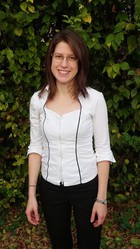
Funzione/Ruolo
Scienziata Senior al Rutherford Appleton Laboratory
Percorso professionale
Mariastefania De Vido consegue la Laurea Magistrale con lode in Ingegneria Fisica al Politecnico di Milano nel 2013. Dopo la laurea viene assunta come scienziata presso l’STFC Rutherford Appleton Laboratory nel Regno Unito dove lavora tuttora allo sviluppo di laser ad alta energia.
Nel 2018 riceve una prestigiosa fellowship dalla Royal Commission for the Exhibition of 1851 che le permette di fondare un laboratorio e un gruppo di ricerca dedicati allo studio ed ottimizzazione di materiali per l’ottica.
In contemporanea alla sua attività lavorativa, tra il 2016 e il 2020 De Vido completa un dottorato alla Heriot-Watt University di Edimburgo con una tesi su soluzioni per incrementare l’energia e frequenza di ripetizione di laser allo stato solido.
Nel 2021 è promossa Technical Leader per lo sviluppo di sorgenti laser ad alta energia di nuova generazione caratterizzate da una frequenza di ripetizione di 100 Hz (100 impulsi al secondo), con responsibilità di direzione scientifica delle attività e gestione di un ampio gruppo di lavoro e fondi da diversi milioni di sterline.
Dal 2019 tiene lezioni all’Università di York su tecnologie laser per la fusione nucleare. Dal 2021 è membro della commissione organizzatrice del corso di dottorato in fotonica applicata erogato dalle Univeristà di St Andrews, Glasgow, Strathclyde, Edimburgo, Dundee e Heriot-Watt.
Nel 2023 completerà un Master of Business Administration presso la Edinburgh Business School.
Risultati scientifici
Durante il suo lavoro di ricerca al Rutherford Appleton Laboratory, Mariastefania De Vido ha condotto ricerche sullo sviluppo di laser a stato solido ad alta energia e alta potenza media.
Il suo lavoro ha portato ad un incremento di diversi ordini di grandezza della potenza ed efficienza di tali sorgenti laser, rendendole di notevole interesse per future applicazioni quali il trattamento di materiali per l’industria aero-spaziale, diagnostiche e trattamenti medici e lo sviluppo di fonti di energia basate sulla fusione nucleare.
Ha lavorato alla realizzazione di laser per centri di ricerca internazionali, tra cui i due laser a nanosecondi più potenti al mondo: il laser DiPOLE100 ora all’HILASE Centre (Repubblica Ceca) e il laser DIPOLE100X allo European XFEL (Germania).
Con il suo gruppo al Rutherford Appleton Laboratory ha sviluppato modelli teorici e metodi sperimentali per lo sviluppo e studio di materiali laser avanzati, caratterizzandone le proprietà termo-ottiche e spettroscopiche e ottimizzandoli per l’uso in laser ad alta energia.
Il suo lavoro di ricerca è supportato da borse di ricerca erogate dalla Royal Commission for the Exhibition for 1851, dalla Commissione Europea e dalla Royal Society.
Attività editoriali e pubblicazioni
Mariastefania De Vido è autrice di numerose pubblicazioni internazionali e brevetti, tra cui: [2021] De Vido M., Mason P. D., Fitton M., Eardley R. W., Quinn G., Clarke D., Ertel K., Butcher T. J., Phillips P. J., Banerjee S., Smith J., Spear J., Edwards C., Collier J. L. Modelling and measurement of thermal stress‑ induced depolarisation in high energy, high repetition rate diode‑pumped Yb:YAG lasers. Optics Express, 29(4): 5607‑23.
[2021] Divoký M., Pilař J., Hanuš M., Navrátil P., Denk O., Severová P., Mason P., Butcher T., Banerjee S., De Vido M., Edwards C., Collier J., Smrž M., Mocek T. 150 J DPSSL operating at 1.5 kW level. Optics Letters, 46(22): 5771‑3.
[2021] Phillips J. P., Banerjee S., Mason P., Smith J., Spear J., De Vido M., Ertel K., Butcher T., Quinn G., Clarke D., Edwards C., Hernandez‑Gomez C., Collier J. L. Second and third harmonic conversion of a kilowatt average power, 100‑J‑level diode pumped Yb:YAG laser in large aperture LBO. Optics Letters, 46(8): 1808‑11.
[2020] De Vido M., Wojtusiak A., Ertel K., High‑resolution absorption measurement at the zero phonon line of Yb:YAG between 80 K and 300 K. Optical Materials Express 10[3]: 717‑723.
[2020] Phillips J. P., Banerjee S., Ertel K., Mason P., Smith J., Butcher T., De Vido M., Edwards C., Hernandez‑Gomez C., Collier J. L. Stable high‑energy, high repetition rate, frequency doubling in a large aperture temperature‑ controlled LBO at 515 nm. Optics Letters 45(10): 2946‑9.
[2019] De Vido M., Ertel K., Wojtusiak A., Mason P. D., Phillips P. J., Banerjee S., Smith J. M., Butcher T. J., Edwards C. Optical rotatory power of quartz between 77 K and 325 K for 1030 nm wavelength. Optical Materials Express, 9(6): 2708‑15.
[2018] De Vido M., Mason P. Laser amplifier module, International Patent Application no. PCT/GB2018/051405, PCT publication no. WO2018215771A1.
[2017] De Vido M., Walsh T. J., Kirkpatrick S., Svrluga R., Ertel K., Phillips P. J., Mason P. D., Banerjee S., Smith J. M., Butcher T. J., Edwards C., Hernandez‑Gomez C., Collier J.L. Impact of gas cluster ion and accelerated neutral atom beam surface treatments on the laser‑induced damage threshold of ceramic Yb:YAG. Optical Materials Express, 7(9): 3303‑11.
[2017] De Vido M., Meissner D., Meissner S., Ertel K., Phillips P. J., Mason P. D., Banerjee S., Butcher T. J., Smith J. M., Edwards C., Hernandez‑Gomez C., Collier J. L. Characterisation of adhesive‑free bonded crystalline Yb:YAG for high energy laser applications. Optical Materials Express, 7(2): 425-32.
[2017] Mason P., Divoky M., Ertel K., Pilar J., Butcher T., Hanus M., Banerjee S., Phillips J., Smith J., De Vido M., Lucianetti A., Hernandez‑Gomez C., Edwards C., Mocek T., Collier J. L. Kilowatt average power 100 J‑level diode pumped solid state laser. Optica, 4(4): 438‑9.
[2017] De Vido M. Laser‑chain alignment, International Patent Application no. PCT/GB2017/050603, PCT publication no. WO/2017/163009.
[2016] Banerjee S., Mason P. D., Ertel K., Phillips P. J., De Vido M., Chekhlov O., Divoky M., Pilar J., Smith J., Butcher T., Lintern A., Tomlinson S., Shaikh W., Hooker C., Lucianetti A., Hernandez‑Gomez C., Mocek T., Edwards C., Collier J. L. 100 J‑level nanosecond pulsed diode pumped solid state laser. Optics Letters, 41(9): 2089‑92.
Riconoscimenti e premi
Mariastefania De Vido ha ricevuto numerosi premi e borse di ricerca, tra cui:
2018: Fellowship dalla Royal Commission for the Exhibition of 1851 in supporto delle sue attività di ricerca nel campo dei materiali per applicazioni laser.
2018: 1° premio per giovani ricercatori, consegnatole durante il congresso “Advanced Solid-State Lasers” (Boston, Stati Uniti).
2019: “Young UK Laser Engineer Prize” conferitole dall’“Association of Industrial Laser Users” come riconoscimento del suo lavoro di sviluppo ed ottimizzazione di laser ad alta energia e alta potenza per applicazioni industriali.
2020: “Staff Recognition Prize” conferitole dallo “Science and Technology Facilities Council”, in riconoscimento del il suo contributo nello sviluppo di personale scientifico.
2020: “MacFarlane Prize” conferito annualmente al/alla doctoral graduate che ha apportato il più significativo contributo alla ricerca della Heriot-Watt University.
2021: Viene selezionata assieme ad altri 30 professionisti provenienti dall’industria, università e governo britannici a prendere parte al programma di leadership “Future Leaders” organizzato dalla Foundation for Science and Technology, attraverso il quale partecipa in attività di policy advice per il governo britannico e organizza dibattiti su temi di ricerca e tecnologia.
2021: “International Exchanges Grant” - borsa di ricerca conferitale dalla Royal Society per condurre ricerche per lo sviluppo di technologie innovative per la realizzazione di materiali ceramici per laser in collaborazione con il CNR italiano.

Area STEM: Fisica
Competenze: fisica delle particelle elementari, fisica subnucleare, rivelatori di particelle
Parole chiave: acceleratori, bosone di higgs, bosone w, bosone z, calorimetri, CERN, collisioni protone-protone, esperimento atlas, fisica delle alte energie, infn, lhc, modello standard, rivelatori di particelle, spettrometro a muoni, tracciatori a gas, tracciatori a stato solido
Regione: Lazio
Funzione/Ruolo
Professoressa ordinaria di Fisica Generale presso il Dipartimento di Fisica dell'Università di Roma Tor Vergata, direttrice della sezione INFN di Roma Tor Vergata, responsabile del gruppo INFN-ATLAS a Tor Vergata, componente del Collegio dei docenti del Dottorato in Fisica
Percorso professionale
Dopo aver conseguito la laurea in Fisica nel 1980 all'Università La Sapienza di Roma, prosegue la sua formazione presso il CERN di Ginevra e il laboratorio americano di Brookhaven. Nel febbraio 1984 viene assunta come ricercatrice universitaria presso la Facoltà di Scienze Matematiche e Fisiche dell'Università di Roma Tor Vergata. Svolge in seguito altri periodi di studio e di ricerca in università e centri di ricerca stranieri quali: l'Università di Harward (USA), il laboratorio di Oak Ridge (USA), il CERN e l'Università Albert-Ludwigs di Friburgo (D). Dal 1999 al 2013 è professoressa associata presso il Dipartimento di Fisica dell'Università di Roma Tor Vergata e dal 2013 è professoressa ordinaria nella stessa Università. Nell'ambito della Collaborazione ATLAS ricopre vari incarichi di responsabilità: presidente dello Speakers Committee, componente del Pubblication Committee, dello Steering Group dei muoni e dell'Advisory Board del Collaboration Board. Dal 2011 al 2013 coordina i ricercatori italiani che lavorano all'esperimento ATLAS. Dal luglio 2013 è la direttrice della Sezione di Roma Tor Vergata dell'Istituto Nazionale di Fisica Nucleare.
Risultati scientifici
La sua attività di ricerca si svolge principalmente attraverso la partecipazione a esperimenti presso macchine acceleratrici al CERN di Ginevra per lo studio delle collisioni protone-protone a 63 gigaelettronvolt ( GeV ) (esperimento R807 all'ISR), protone- antiprotone a 630 GeV (esperimento UA1 al ppbar Collider, che ha prodotto la scoperta delle particelle fondamentali W e Z), pione-nucleone a 26 GeV nel centro di massa al proto-sincrotrone SPS (esperimento WA92) per la ricerca di particelle con beauty. In seguito si interessa alla sperimentazione al Large Hadron Collider (LHC) del CERN, partecipando ai gruppi di lavoro dell'Ente Europeo per i Futuri Acceleratori (ECFA) e al programma RD5 di ricerca e sviluppo per i rivelatori a muoni all'LHC. Nell'ambito di tale programma contribuisce allo sviluppo del rivelatore RPC (Resistive Plate Chamber) come camere di trigger a muoni ad alta risoluzione temporale per gli esperimenti a LHC. Dal 1992 partecipa all'esperimento ATLAS al CERN, una collaborazione internazionale di circa 180 gruppi di ricerca, dei quali 14 italiani, che nel 2012 ha scoperto, insieme all'esperimento CMS, il Bosone di Higgs.
Attività editoriali e pubblicazioni
È autrice di oltre 800 pubblicazioni scientifiche fra cui:
(2017) Atlas Collaboration. Evidence for the 𝐻→𝑏𝑏⎯ decay with the ATLAS detector, JHEP 1712 024.
(2013) Atlas Collaboration. Measurements of Higgs boson production and couplings in diboson final states with the ATLAS detector at the LHC. Physics Letters B, 726:1-3, 88-119.
(2013) Atlas Collaboration. Evidence for the spin-0 nature of the Higgs boson using ATLAS data. Physics Letters B, 726:1-3, 120-144.
(2012) Atlas Collaboration. Observation of a new particle in the search for the Standard Model Higgs boson with the ATLAS detector at the LHC. Physics Letters B, 716: 1, 1-29.
(2012) Atlas Collaboration. Combined search for the Standard Model Higgs boson using up to 4.9 fb(-1) of pp collision data at root s=7 TeV with the ATLAS detector at the LHC. Physics Letters B, 710: 1, 49-66.
(2012) Atlas Collaboration. Search for the Standard Model Higgs Boson in the Diphoton Decay Channel with 4.9 fb(-1) of pp Collision Data at root s=7 TeV with ATLAS. Physical Review Letters, 108:11,111803.
(2008) Aad G, Abat E, Abdallah J, et al. The ATLAS Experiment at the CERN Large Hadron Collider. Journal Of Instrumentation, 3, S08003.
(1990) Albajar C, Albrow MG, Allkofer OC, et al. A Study of the General-Characteristics of Proton Antiproton Collisions at square-Root s=0.2 to 0.9 TeV. Nuclear Physics B, 335: 2, 261-287.
(1987) Albajar C, Albrow MG, Allkofer OC, et al. Search for B0-Bbar0 Oscillations at the CERN Proton-Antiproton Collider. Physics Letters B, 186: 2, 247-254
(1983) Arnison G, Astbury A, Aubert B, et al. Experimental-observation of isolated large transverse energy electrons with associated missing energy at square-root-s=540 GeV. Physics Letters B, 122:1, 103-116.
(1983) Arnison G, Astbury A, Aubert B, et al. Experimental-Observation of Lepton Pairs of Invariant Mass Around 95 GeV/c^2 at the CERN SpS Collider. Physics Letters B, 126:5, 398-410.
Riconoscimenti e premi
Nel 1987 riceve il Premio Società Italiana di Fisica (SIF) di operosità scientifica, nel 2013 il Premio della Società Europea di Fisica (EPS) in quanto componente della Collaborazione ATLAS e nel 2016 il Premio Cajeta 2016 conferito a donne che abbiano giovato alla società in generale e dato lustro al nome della città di Gaeta.
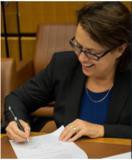
Funzione/Ruolo
Professoressa di Economia dello Spazio e Direttrice dello Space Economy Evolution Lab (SEE Lab) presso la School of Management dell'Università Bocconi di Milano
Percorso professionale
Dopo aver conseguito nel 1984 la laurea in Fisica con indirizzo Astrofisica e Fisica Spaziale presso l'Università La Sapienza di Roma, nel 1986 entra a far parte del Piano Spaziale Nazionale chiamato poi ASI (Agenzia Spaziale Italiana). Nel 1989 è delegata italiana presso l'Agenzia Spaziale Europea (ESA) per la Stazione Spaziale Internazionale (ISS). Nel 2001 diventa responsabile per l'ASI del coordinamento della missione Marco Polo. Dall'anno successivo fino al 2008 è responsabile del settore Osservazione dell'Universo, sempre presso l'Agenzia Spaziale Italiana. Nel 2009 promuove la leadership femminile nel settore dell'aerospazio e co-fonda l'associazione Women in Aerospace Europe, di cui è presidente fino al 2016. E' United Nations International Gender Champion dal 2017. Dal marzo 2014 fino al marzo 2022 è direttrice dell'Ufficio per gli Affari dello Spazio Extra-Atmosferico delle Nazioni Unite (UNOOSA), con sede a Vienna.
Nel marzo 2022 viene nominata direttrice dello Space Economy Evolution Lab (SEE Lab) presso la School of management dell'Università Bocconi di Milano.
Ha insegnato in diverse università, tra cui George Washington University, New York University Abu Dhabi e LUISS.
E' membro del World Economic Forum Global Future council on Space, del CDA di RINA SPA, e presidente del loro Comitato ESG, e membro del Consiglio Scientifico di Criptaliae per lo sviluppo dello spazioporto di Grottaglie.
Risultati scientifici
Simonetta Di Pippo è considerata una delle maggiori esperte in cooperazione internazionale nel settore aerospaziale. Come direttrice dell'Ufficio per gli Affari dello Spazio Extra-Atmosferico delle Nazioni Unite (UNOOSA), dal 2014 al 2022, ha elaborato strategie, politiche e supervisionato tutte le attività svolte dall'Ufficio, assicurandone lo sviluppo conforme al mandato rispettivamente dell'Assemblea Generale delle Nazioni Unite e del Comitato sugli usi pacifici dello spazio extra-atmosferico (COPUOS).
La sua expertise riguarda l'esplorazione spaziale, l'osservazione dell'universo, l'uso pacifico dello spazio extra-atmosferico, l'uso di tecnologia e scienza per lo sviluppo sostenibile e per la riduzione dei rischi di calamità naturali e catastrofi, l'economia dello spazio, e la leadership femminile nel settore dell'aero-spazio.
Attività editoriali e pubblicazioni
Simonetta Di Pippo è autrice di numerose pubblicazioni scientifiche e divulgative, incluse tre monografie ad alta divulgazione:
(2022) Space economy. La nuova frontiera dello sviluppo. Milano: Bocconi University Press.
(2007) (con C. Smiraglia, I.E. Tabacco, M. Di Martino, C. Guaita) Dai ghiacciai della Terra ai ghiaccia dell'Universo. Genova: Erga Edizioni.
(2002) Astronauti. Milano: Ugo Mursia Editore.
Riconoscimenti e premi
Simonetta Di Pippo durante la sua carriera ha ricevuto moltissimi riconoscimenti di rilievo nazionale ed internazionale, tra questi nel 2006 è stata insignita del titolo di Cavaliere Ufficiale al Merito dal Presidente della Repubblica Italiana Carlo Azeglio Ciampi e nel 2022 del titolo di Commendatore al Merito della Repubblica Italiana dal Presidente Sergio Mattarella.
Nel 2008 l'Unione Astronomica Internazionale (International Astronomical Union) assegna all'asteroide 21887 il nome "DiPippo" come riconoscimento al suo impegno nell'ambito dell'esplorazione spaziale.
Nel 2010 vince il premio internazionale Sebetia-Ter - Targa d'Argento del Presidente della Repubblica per il contributo dato al settore spaziale.
Nel 2012 riceve il Women in Aerospace Leadership Award in riconoscimento del ruolo svolto come ispiratrice dell'esplorazione spaziale, manager con grandi capacità per progetti spaziali complessi, e leader per le giovani donne nel settore aerospaziale.
Nel 2013 riceve la Laurea Honoris Causa in Studi ambientali.
Nel 2016 riceve il premio alla Cooperazione Internazionale conferito dall'American Institute of Aeronautics and Astronautics (AIAA) a coloro che contribuiscono in maniera significativa alla promozione della cooperazione internazionale nelle attività spaziali.
Ne 2017 la Laurea Honoris Causa in Relazioni internazionali.
Nel 2018 riceve l'Hubert Curie Award dell'Eurisy, prima donna in assoluto a ricevere tale premio.
Nel 2022 riceve i seguenti riconoscimenti:
- la Hall of Fame della Federazione Astronautica Internazionale;
- il Premio "Volti della Memora" della Presidenza del Consiglio Comunale di Milano;
- la Grand Decoration of Honour in Gold for services to the Republic of Austria, dalla Presidenza della Repubblica austriaca;
- l'Ordine del Sol Levante dal Governo giapponese.

Funzione/Ruolo
Professoressa ordinaria di Biostatistica alla Harvard T.H. Chan School of Public Health
Percorso professionale
Dopo la laurea in Statistica presso l'Università La Sapienza di Roma, prosegue la sua formazione con un dottorato di ricerca all'Università di Padova nel 1997. Trasferitasi all'estero diventa Visiting Assistant Professor presso la John Hopkins Bloomberg School of Public Health dell'omonima università a Baltimora. Prosegue la sua carriera accademica nella John Hopkins fino a diventare Professor del dipartimento di biostatistica nel 2007. Successivamente si trasferisce alla Harvard T.H. Chan School of Public Health, dell'omonima università fino a ricoprire il ruolo non solo di Professor di biostatistica ma anche Senior Associate Dean for Research. L'interesse principale di Francesca Dominici è concentrato sullo sviluppo di metodi statistici per l'analisi di grandi e complessi campioni di dati (Big Data), provenienti da fonti eterogenee, in modo tale da poterli combinare ottenendo importanti informazioni che possono essere applicate a diverse discipline quali i cambiamenti climatici, le scienze ambientali, la ricerca comparata sul cancro e le politiche di salute pubblica.
Risultati scientifici
Francesca Dominici è impegnata nello sviluppo di nuovi metodi statistici per l'analisi di grandi quantità di dati (big data) rilevati e immagazzinati in imponenti banche dati (data warehouse) come quelli di Medicare e SEER-Medicare. La sua sfida è sviluppare nuovi metodi di inferenza casuale bayesiana (approccio all'inferenza statistica in cui le probabilità che un dato evento accada vengono considerate come livelli di fiducia e non più come frequenze), per superare le difficoltà di analisi insite nell'utilizzo di grandi banche dati. Questo nuovo approccio consente a Francesca Dominici, in collaborazione con la Harvard Medical School, di comparare l'efficacia nella ricerca medica nel trattamento del glioblastoma (tumore che si sviluppa fra le cellule gliali componenti del sistema nervoso assieme ai neuroni) e di altri tumori. Inoltre i suoi studi hanno direttamente influenzato la politica americana sulla qualità dell'aria e sull'inquinamento, portando alla creazione di nuovi standard di qualità dell'aria e dell'ambiente.
Attività editoriali e pubblicazioni
La professoresa Dominici è autrice di numerose pubblicazioni, fra cui:
(2000) Dominici F, Samet JM, Zeger SL. Combining Evidence on Air pollution and Daily Mortality from the Twenty Largest US Cities: A Hierarchical Modelling Strategy with discussion. Journal of the Royal Statistical Society: Series A, 163(3):263-302.
(2000) Samet JM, Dominici F, Curriero F, Coursac I, Zeger SL, Fine Particulate Air Pollution and Mortality in 20 U.S. Cities: 1987-1994. New England Journal of Medicine, 343(24):1742-9.
(2004) Dominici F, McDermott A, Hastie T. Improved Semi-parametric Time Series Models of Air Pollution and Mortality. Journal of the American Statistical Association, 468:938-948.
(2006) Dominici F, Peng D, Bell M, Pham M, McDermott A, Zeger SL, Samet JM. Fine Particulates Air Pollution and Hospital Admission for Cardiovascular and Respiratory Diseases. Journal of the American Statistical Association, 295:1127-1135.
(2006) Peng R, Dominici F, Zeger SL. Reproducible Epidemiological Research. American Journal of Epidemiology, 163:783-789.
(2009) Dominici F, Fried L, Zeger SL. So Few Women Leaders: Look for the Root Causes. Academe, July-August 2009. (2012) Wang C, Parmigiani G, Dominici F. Bayesian effect estimation accounting for adjustment uncertainty. Biometrics, (68)3:681-689.
(2014) Zigler CM, Dominici F. Uncertainty in propensity score estimation: Bayesian methods for variable selection and model averaged causal effects. Journal of the American Statistical Association, 109(505):95-107.
(2014) Dominici F, Greenstone M, Sunstein CR. Science and Regulation. Particulate matter matters. Science, 344(6181):257-9.
(2014) Bobb F, Obermeyer Z, Wang Y, Dominici F. Cause-specific risk of hospital admission related to extreme heat in older adults. Journal of the American Medical Association, 312(24):2659-2667. (Recognized in January 2016 as one out of 28 NIEHS Papers of the Year).
Riconoscimenti e premi
Francesca Dominici ha sempre dimostrato impegno per la promozione della diversità all'interno dell'ambito accademico. Ha co-presieduto la Commissione per la condizione femminile presso la John Hopkins University.
Nel 2009 ha ricevuto il premio DiversityRecognitionAward dal rettore della John Hopkins University. Nel 2015 è stata insignita del premio FlorenceNightingaleDavid per i suoi contributi come modello per le donne e per l'eccellenza dimostrata nella ricerca statistica, nella leadership di gruppi multidisciplinari e nell'istruzione. Attualmente presiede il Comitato di Ateneo per l'avanzamento delle donne nell'università presso la Harvard T.H. Chan School of Public Health.
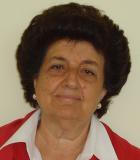
Funzione/Ruolo
Capo del Laboratorio di Medicina Translazionale del Dipartimento di Epidemiologia e Prevenzione dell'IRCCS Istituto Neurologico Mediterraneo Neuromed a Pozzilli (Isernia)
Percorso professionale
Dopo aver conseguito la laurea in Medicina e Chirurgia all'Università Cattolica del Sacro Cuore di Roma nel 1968, prosegue la sua formazione con la specializzazione in Ematologia Clinica e di Laboratorio presso la stessa università. Nel 1973 consegue un dottorato di ricerca in Fisiopatologia (Ematologia) all'Università Cattolica di Leuven in Belgio. Inizia la sua carriera di ricerca già durante gli anni universitari: nel 1963 è Research Student presso l'Istituto di Microbiologia dell'Università Cattolica del Sacro Cuore, nel 1965 ricopre lo stesso incarico nel Laboratorio di Coagulazione del Dipartimento di Medicina interna della stessa università, durante il dottorato a Leuven è Ph.D. Research Fellow nel Laboratorio di Coagulazione e Proteolisi. Nel 1973 fonda e dirige il Laboratorio di Ricerca sull'Emostasi e la Trombosi dell'Istituto Mario Negri di Milano, nel 1987 è cofondatrice e coordinatrice scientifica del Centro di Ricerche Biomediche e Farmacologiche Mario Negri Sud a Santa Maria Imbaro, in provincia di Chieti. Alla carriera di ricerca affianca quella didattica, viene infatti chiamata da diverse università italiane a tenere corsi, nello specifico di Fisiopatologia all'Università di Bologna dal 1990 al 1993 e di Biologia Cellulare all'Università Cattolica di Campobasso dal 2005 al 2012. Dal 1995 al 2001 dirige il Dipartimento di Medicina e Farmacologia Vascolare del Consorzio Mario Negri Sud, nel 2002 è responsabile del Laboratorio Telethon presso il Centro di Ricerca e Formazione ad Alta Tecnologia nelle Scienze Biomediche dell'Università Cattolica di Campobasso, dove fonda e coordina i progetti scientifici dei laboratori di ricerca del Centro di Ricerca e Formazione ad Alta Tecnologia nelle Scienze Biomediche. Dal 2013 è capo del laboratorio di Medicina Translazionale del Dipartimento di Epidemiologia e Prevenzione dell'IRCCS Istituto Neurologico Mediterraneo Neuromed, a Pozzilli, ruolo che ricopre ancora oggi.
Risultati scientifici
Maria Benedetta Donati si è sempre dedicata allo studio della trombosi, il processo che porta all'ostruzione dei vasi sanguigni ed è alla base di malattie molto diffuse quali l'infarto del cuore e l'ictus cerebrale. In particolare, nella prima parte della sua attività, ha condotto studi pionieristici sui rapporti tra trombosi e tumori e sulla possibilità di trattare alcune forme di tumore con farmaci anticoagulanti. Nel 1983 ha fondato il primo gruppo internazionale di lavoro dedicato ai rapporti tra tumori e trombosi. Più recentemente, si è occupata dei fattori genetici ed ambientali (in particolare la nutrizione) nello sviluppo del rischio cardiovascolare e ha scoperto, con Licia Iacoviello, l'esistenza di un fattore genetico della coagulazione che protegge il 20% della popolazione italiana contro l'infarto. Dal 2005 fa parte del coordinamento di Moli-sani, studio epidemiologico su 25.000 persone che abitano nel Molise promosso dall'IRCCS di Pozzilli, che studia e divulga gli effetti benefici della dieta mediterranea sulla salute.
Attività editoriali e pubblicazioni
È autrice di numerose pubblicazioni scientifiche, fra cui:
(2016) Bonaccio M, Di Castelnuovo A, Costanzo S, Persichillo M, De Curtis A, Donati MB, de Gaetano G, Iacoviello L, MOLI-SANI Study Investigators. Adherence to the traditional Mediterranean diet and mortality in subjects with diabetes. Prospective results from the MOLI-SANI study. European Journal of Preventive Cardiology, 23(4):400-7.
(2015) Iacoviello L, Di Castelnuovo A, de Curtis A, Agnoli C, Frasca G, Mattiello A, Matullo G, Ricceri F, Sacerdote C, Grioni S, Tumino R, Napoleone E, Lorenzet R, de Gaetano G, Panico S, Donati MB. Circulating Tissue Factor Levels and Risk of Stroke: Findings From the EPICOR Study. Stroke, 46(6):1501-7.
(2014) Bonaccio M, Di Castelnuovo A, De Curtis A, Costanzo S, Persichillo M, Donati MB, Cerletti C, Iacoviello L, de Gaetano G, MOLI-SANI Project Investigators. Adherence to the Mediterranean diet is associated with lower platelet and leukocyte counts: results from the Moli-sani study. Blood, 123(19):3037-44.
(2010) Caruso V, Di Castelnuovo A, Meschengieser S, Lazzari MA, de Gaetano G, Storti S, Iacoviello L, Donati MB. Thrombotic complications in adult patients with lymphoma: a meta-analysis of 29 independent cohorts including 18 018 patients and 1149 events. Blood, 115(26):5322-8.
(2006) Caruso V, Iacoviello L, Di Castelnuovo A, Storti S, Mariani G, de Gaetano G, Donati MB. Thrombotic complications in childhood acute lymphoblastic leukemia: a meta-analysis of 17 prospective studies comprising 1752 pediatric patients. Blood, 108(7):2216-22.
(1998) Iacoviello L, Di Castelnuovo A, De Knijff P, D'Orazio A, Amore C, Arboretti R, Kluft C, Donati MB. Polymorphisms in the coagulation factor VII gene and the risk of myocardial infarction. The New England Journal of Medicine, 338(2):79-85.
(1995) Donati MB. Cancer and thrombosis: from Phlegmasia alba dolens to transgenic mice. Thrombosis and Haemostasis, 74(1):278-81.
(1983) Colucci M, Balconi G, Lorenzet R, Pietra A, Locati D, Donati MB, Semeraro N. Cultured human endothelial cells generate tissue factor in response to endotoxin. Journal of Clinical Investigation, 71(6):1893-6.
(1982) Bertani T, Poggi A, Pozzoni R, Delaini F, Sacchi G, Thoua Y, Mecca G, Remuzzi G, Donati MB. Adriamycin-induced nephrotic syndrome in rats: sequence of pathologic events. Laboratory Investigation, 46(1):16-23.
(1978) Remuzzi G, Misiani R, Marchesi D, Livio M, Mecca G, de Gaetano G, Donati MB. Haemolytic-uraemic syndrome: deficiency of plasma factor(s) regulating prostacyclin activity? Lancet, 2(8095):871-2.
Riconoscimenti e premi
Maria Benedetta Donati riceve diversi premi già dall'inizio della sua carriera: el 1968 vince il premio Agostino Gemelli come migliore laureata in Medicina dell'anno dell'Università Cattolica del Sacro Cuore di Roma e nel 1983 ottiene il premio internazionale Minerva per l'eccellenza femminile nella ricerca.
Nel 1999 riceve dall'International Society Thrombosis and Haemostasis a Washington il Distinguished Career Award.
Nel 2000 e nel 2002 riceve due lauree "Honoris Causa", la prima dall'Università di Debrecen in Ungheria, la seconda dall'Università di Bialystok in Polonia.
Nel 2002, a Paringi, l'UNESCO in collaborazione con L'OREAL International le conferisce lo Special Honor for Women in Science.
Nel 2016 riceve il riconoscimento "Top Italian Women Scientists Award in Biomedical Sciences".
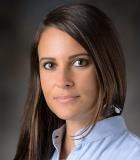
Funzione/Ruolo
Faculty presso l’MD Anderson Cancer Center di Houston, Texas
Percorso professionale
Dopo la laurea triennale in Biotecnologie Mediche e Farmaceutiche e quella magistrale in Biotecnologie Cellulari e Molecolari all’Università Vita - Salute San Raffaele di Milano, nel 2006, prosegue i suoi studi nello stesso ateneo, prima con un dottorato internazionale di ricerca in Biologia Cellulare e Molecolare in collaborazione con la British Open University, poi con un post-dottorato in Oncologia Molecolare. Dal 2008 inizia a tenere corsi di Biochimica e Storia della Ricerca sul Cancro all’Università Vita - Salute San Raffaele. Nel 2011 si trasferisce come ricercatrice all’Università del Texas MD Anderson Cancer Center a Houston, proseguendo li la sua carriera.
Dondossola dal 2009 fa parte dell’American Association for Cancer Research.
Risultati scientifici
L’attività di ricerca di Eleonora Dondossola si focalizza sullo studio del microambiente tumorale, vale a dire la componente non maligna dei tumori indispensabile alla vita delle cellule cancerose. In particolare, i suoi studi iniziali riguardano l’influenza dei vasi sanguigni sulla risposta terapeutica tumorale e sullo sviluppo delle metastasi. Ha dimostrato che una proteina normalmente circolante, la cromogranina A, diminuisce la permeabilità dei vasi, inibendo la penetrazione di agenti terapeutici, inclusi chemioterapici e farmaci molecolari di ultima generazione. Allo stesso tempo, ha anche dimostrato che questo meccanismo riduce la capacita’ delle cellule cancerose di dare origine a metastasi degli organi periferici e del tumore stesso, un processo denominato tumor-self seeding (la proprieta’ delle cellule tumorali circolanti di inflitrare il tumore d’origine), identificato meno di dieci anni fa. Dondossola ha inoltre testato l’ipotesi provocatoria che le cellule tumorali circolanti possano essere geneticamente manipolate e utilizzate come farmaco anti-tumorale sfruttando la loro capacita’ di tornare spontaneamente nel tumore (attraverso il tumor self-seeding). L’applicazione di queste cellule tumorali modificate ha di fatto ridotto in maniera significativa sia il tumore primario che quello metastatico. Inoltre, Dondossola ha scoperto una nuova popolazione di cellule del sistema immunitario (mieloidi) che esprime la proteina CD13 ed è in grado di favorire la formazione di nuovi vasi tumorali, supportando la progressione del tumore.
Dondossola ha recentemente sviluppato interesse verso l’ingegneria tissutale e la microscopia multifotonica intravitale, un approccio in espansione per la sua rilevanza, che consente di monitorare l’evoluzione dei processi biologici in modo dinamico nel tempo. Queste due strategie sono state combinate ed applicate per approfondire i meccanismi che guidano le metastasi ossee del tumore della prostata. Infine, Dondossola ha esteso queste applicazioni allo studio di un altro processo desmoplastico non tumorale, definito “risposta ai corpi estranei” (foreign body response, FBR).
Attività editoriali e pubblicazioni
Eleonora Dondossola è autrice e coautrice di numerose importanti pubblicazioni tra cui:
[2018] Dondossola E, Alexander S, Holzapfel BM, Filippini S, Starbuck MW, Hoffman RM, Navone N, De-Juan-Pardo EM, Logothetis CJ, Hutmacher DW, Friedl P. Intravital microscopy of osteolytic progression and therapy response of cancer lesions in bone. Sci Transl Med. 2018 Aug 1;10(452).
[2016] Dondossola E, Holzapfel BM, Alexander S, Filippini S, Hutmacher DW, Friedl P. Dissecting the foreign body response to biomaterials by non-linear intravital microscopy. Nat Biomed Eng. 2016 Dec 19; 1, 0007.
[2016] Dondossola E, Dobroff AJ, Marchiò S, Cardó-Vila M, Hosoya H, Libutti SK, Corti A, Sidman RL, Arap W, Pasqualini R. Self-targeting of TNF-releasing cancer cells in preclinical models of primary and metastatic tumors. Proc Natl Acad Sci U S A. 2016 Feb 23;113(8):2223-8.
[2013] Dondossola E, Rangel R, Guzman-Rojas L, Barbu EM, Hosoya H, St John LS, Molldrem JJ, Corti A, Sidman RL, Arap W, Pasqualini R.CD13-positive bone marrow-derived myeloid cells promote angiogenesis, tumor growth, and metastasis.Proc Natl Acad Sci USA. 2013 Dec 17;110(51):20717-22.
[2012] Guzman-Rojas L, Rangel R, Salameh A, Edwards JK, Dondossola E, Kim YG, Saghatelian A, Giordano RJ, Kolonin MG, Staquicini FI, Koivunen E, Sidman RL, Arap W, Pasqualini R. Cooperative effects of aminopeptidase N (CD13) expressed by nonmalignant and cancer cells within the tumor microenvironment. Proc Natl Acad SciUSA, 2012 Jan 31;109(5):1637-42.
[2012] Dondossola E, Crippa L, Colombo B, Elisabetta Ferrero and Corti A. Chromogranin A regulates tumor self-seeding and dissemination. Cancer Research, 2012 Jan 15;72(2):449-59.
[2011] Veschini L, Crippa L, Dondossola E, Doglioni C, Corti A and Ferrero E. The vasostatin-1 fragment of chromogranin A preserves a quiescentphenotype in hypoxia-driven endothelial cells and regulates tumorneo-vascularization. Faseb Journal, 2011 Nov; 25(11):3906-14.
[2011] Dondossola E, Gasparri A, Colombo B, Sacchi A, Curnis F and Corti A. Chromogranin A restricts drug penetration and limits the ability of NGR-TNF to enhance chemotherapeutic efficacy. Cancer Research, 2011 Sep 1; 71(17):5881-90.
[2010] Dondossola E, Gasparri A, Bachi A, Longhi R, Metz-Boutigue, MH, Tota B, Helle KB, Curnis F and Corti A. Role of vasostatin-1 C-terminal region in fibroblast cell adhesion. Cell and Molecular Life Sciences, 2010 Jun;67(12):2107-18.
[2006] Curnis F, Longhi R, Crippa L, Cattaneo A, Dondossola E, Bachi A and Corti A. Spontaneous formation of L-isoAspartate and gain-of-function in fibronectin.Journal of Biological Chemistry, 2006 Nov 24; 281(47):36466-76.
Riconoscimenti e premi
Nel 2014 riceve The AMGEN Award in Basic Science Research dall’Università del Texas MD Anderson Cancer Center, Houston. Nello stesso anno riceve il Cancer Prevention and Research Institute of Texas Individual Investigator Award. Nel 2015 è premiata con il Gerald B. Grindey Memorial Scholar-in-Training Award all’AACR Annual Meeting, Philadelphia, USA. Nel 2016 vince il Mark Walter, Brent Nicklas, Adrianne and Jerry Cohen–PCF Young Investigator Award della Prostate Cancer Foundation. Nel 2017 riceve il Rolanette and Berdon Lawrence Bone Research Award, The Rolanette and Berdon Lawrence Bone Disease Program of Texas, USA.
Nel 2021 riceve il prestigioso premio "40 Under 40 in Cancer", il premio che riconosce i giovani professionisti di oncologia più promettenti degli Stati Uniti e celebra i loro contributi per migliorare la vita delle persone colpite dal cancro.

Funzione/Ruolo
Direttrice del Centro Nazionale AIDS dell'Istituto Superiore di Sanità
Percorso professionale
Dopo la laurea in Medicina e Chirurgia presso l'Università La Sapienza di Roma nel 1984, prosegue la sua formazione prima con una specializzazione in Allergologia e Immunologia Clinica nel 1987 e poi con un dottorato di ricerca in Immunologia Clinica, che consegue nel 1991 presso l'Università di Bari. Dal 1986 al 1995 lavora nel Laboratorio di Robert Gallo al National Institutes of Health (NIH) di Bethesda, Stati Uniti. Nel 1995 torna in Italia per dirigere il reparto AIDS del Laboratorio di Virologia dell'Istituto Superiore di Sanità a Roma, dove dal 2005 passa a dirigere il Centro Nazionale Aids, coordinando progetti nazionali, europei e con i Paesi in via di Sviluppo.
È membro di numerosi comitati scientifici e società tra cui WHO-UNAIDS Vaccine Advisory Committee, e l'Organizzazione Europea di Biologia Molecolare (EMBO). Delegata dell'UNESCO e Vice-Presidente del Comitato Scienze Naturali. È stata Vice-Presidente del Comitato Nazionale AIDS del Ministero della Salute italiano per otto anni fino al 2014, ed è attualmente membro del Comitato Scientifico dell'European Research Council (ERC).
Risultati scientifici
Barbara Ensoli ha sempre impostato il suo lavoro di ricerca sullo studio dei meccanismi con cui si instaura l'infezione dal virus HIV e la sua progressione in malattia per sviluppare, sulla base delle acquisizioni raggiunte in questi studi, presidi per prevenire o curare la malattia. Fra i vari ambiti in cui Barbara Ensoli ha applicato quest'approccio, il più noto ed anche il più impegnativo è stato lo sviluppo un vaccino contro l'HIV/AIDS, capace di prevenire l'infezione e/o di diminuire il rischio di progressione verso la malattia. A questo riguardo, gli studi che Barbara Ensoli e i suoi collaboratori conducono per l'individuazione di un vaccino sono basati su nuovi concetti come quello dell'utilizzo della proteina Tat del virus HIV, responsabile del processo di replicazione e disseminazione dell'infezione e del perdurare dell'infezione anche in soggetti sotto terapia. Inoltre, le ricerche di Barbara Ensoli hanno portato alla scoperta che la proteina Tat favorisce la crescita incontrollata dei vasi sanguigni e promuove la progressione del Sarcoma di Kaposi, un tumore assai frequente nei soggetti infettati con HIV. Queste evidenze scientifiche hanno costituito il razionale per la scelta di Tat quale molecola dell'HIV da neutralizzare con un vaccino.
Dopo la sperimentazione animale, che ha fornito risultati di efficacia, Barbara Ensoli e il suo gruppo hanno continuato con gli studi clinici di fase I, conclusi nel 2006, condotti su soggetti con o senza HIV, dimostrando la sicurezza del vaccino per uso umano. Gli studi sono proseguiti con la fase II della sperimentazione clinica, condotta prima in Italia e poi in Sudafrica, in soggetti con HIV in trattamento con farmaci antiretrovirali (terapia ART). Il vaccino Tat si è dimostrato sicuro ed in grado di promuovere l'aumento dei linfociti CD4+, le cellule target del virus, promuovendo il ritorno del sistema immune al suo normale funzionamento e di ridurre l'attivazione cronica del sistema immune e i "serbatoi virali", dimostrando così di aumentare notevolmente l'efficacia della terapia. La sperimentazione in Sudafrica è stata condotta in cooperazione con il Ministro della Salute e le Istituzioni Sudafricane ed è parte di un progetto più vasto finanziato dal nostro Ministero degli Affari Esteri per la lotta contro l'AIDS, i cui risultati sono stati valutati molto positivamente dall'Organizzazione per lo Sviluppo Industriale delle Nazioni Unite (UNIDO) esortandone la continuazione. Barbara Ensoli ed il suo gruppo sono attualmente impegnati nella ricerca di fondi insieme alle Istituzioni Sudafricane per la sperimentazione finale, quella di fase III, per la dimostrazione conclusiva dell'effetto terapeutico del vaccino e la sua registrazione e distribuzione alla popolazione.
Attività editoriali e pubblicazioni
Barbara Ensoli fa parte di diverse commissioni editoriali e svolge il ruolo di reviewer per numerosissime riviste scientifiche internazionali.
È anche autrice di più di 300 articoli su riviste scientifiche nazionali ed internazionali fra cui:
(2016) Ensoli B, Nchabeleng M, Ensoli F, Tripiciano A, Bellino S, Picconi O, Sgadari C, Longo O, Tavoschi L, Joffe D, Cafaro A, Francavilla V, Moretti S, Pavone Cossut MR, Collacchi B, Arancio A, Paniccia G, Casabianca A, Magnani M, Buttò S, Levendal E, Ndimande JV, Asia B, Pillay Y, Garaci E, Monini P. HIV-Tat immunization induces cross-clade neutralizing antibodies and CD4+ T-cell increases in antiretroviral-treated South African volunteers: a randomized phase II clinical trial. Retrovirology, 13(1):34.
(2015) Ensoli F, Cafaro A, Casabianca A, Tripiciano A, Bellino S, Longo O, Francavilla V, Picconi O, Sgadari C, Moretti S, Pavone Cossut MR, Arancio A, Orlandi C, Sernicola L, Maggiorella MT, Paniccia G, Mussini C, Lazzarin A, Sighinolfi L, Palamara G, Gori A, Angarano G, Di Pietro M, Galli M, Mercurio VS, Castelli F, Di Perri G, Monini P, Magnani M, Garaci E, Ensoli B. HIV-1 Tat immunization restores immune homeostasis and attacks the HAART-resistant blood HIV DNA: results of a randomized phase II exploratory clinical trial. Retrovirology, 12:33.
(2012) Monini P, Cafaro A, Srivastava IK, Moretti S, Sharma VA, Andreini C, Chiozzini C, Ferrantelli F, Cossut MR, Tripiciano A, Nappi F, Longo O, Bellino S, Picconi O Fanales-Belasio E, Borsetti A, Toschi E, Schiavoni I, Bacigalupo I, Kan E, Sernicola L, Maggiorella MT, Montin K, Porcu M, Leone P, Leone P, Collacchi B, Palladino C, Ridolfi B, Falchi M, Macchia I, Ulmer JB, Buttò S, Sgadari C, Magnani M, Federico MP, Titti F, Banci L, Dallocchio F, Rappuoli R, Ensoli F, Barnett SW, Garaci E, Ensoli B. HIV-1 Tat promotes integrin-mediated HIV transmission to dendritic cells by binding Env spikes and competes neutralization by anti-HIV antibodies. PLoS One, 7:e48781.
(2003) Sgadari C, Monini P, Barillari G, and Ensoli B, Use of HIV protease inhibitors to block Kaposi's sarcoma and tumour growth. The Lancet Oncology, 4:537-547.
(2002) Sgadari C, Barillari G, Toschi E, Carlei D, Bacigalupo I, Baccarini S, Palladino C, Leone P, Bugarini R, Malavasi L, Cafaro A, Falchi M, Valdembri D, Rezza G, Bussolino F, Monini P & Ensoli B. HIV protease inhibitors are potent anti-angiogenic molecules and promote regression of Kaposi's sarcoma. Nature Medicine, 8:225-232.
(1999) Cafaro A, Caputo A, Fracasso C, Maggiorella MT, Goletti D, Baroncelli S, Pace M, Sernicola L, Koanga-Mogtomo ML, Betti M, Borsetti A, Belli R, Åkerblom L, Corrias F, Buttò S, Heeney J, Verani P, Titti F & Ensoli B. Control of SHIV89.6P-infection of cynomolgus monkeys by HIV-1 Tat protein vaccine. Nature Medicine, 5:643-650.
(1994) Ensoli B, Gendelman R, Markham P, Fiorelli V, Colombini S, Raffeld M, Cafaro A, Chang HK, Brady JN & Gallo RC. Synergy between basic fibroblast growth factor and HIV-1 Tat protein in induction of Kaposi's sarcoma. Nature, 371:674-680.
(1990) Ensoli B, Barillari G, Salahuddin SZ, Gallo RC & Wong-Staal F. Tat protein of HIV-1 stimulates growth of cells derived from Kaposi's sarcoma lesions of AIDS patients. Nature, 344:84-86.
(1989) Ensoli B, Nakamura S, Salahuddin SZ, Biberfeld P, Larsson L, Beaver B, Wong-Staal F & Gallo RC. AIDS-Kaposi's sarcoma-derived cells express cytokines with autocrine and paracrine growth effects. Science, 243:223-226.
(1989) Ensoli B, Lusso P, Schachter F, Josephs SF, Rappaport J, Negro F, Gallo RC & Wong-Staal F. Human herpes virus-6 increases HIV-1 expression in co-infected T cells via nuclear factors binding to the HIV-1 enhancer. EMBO J., 8:3019-3027.
Riconoscimenti e premi
Barbara Ensoli ha ricevuto numerosi premi e riconoscimenti nazionali ed internazionali per meriti professionali e scientifici, tra i quali la Nomina a Cavaliere dell'Ordine "al merito della Repubblica Italiana" conferita dal Presidente della Repubblica Italiana A. Ciampi, il Premio Internazionale San Valentino D'oro, il Premio Marisa Bellisario, il Premio Domenico Marotta, (Accademia Nazionale delle Scienza detta dei XL), il premio Santa Caterina, ol premio Premio Minerva, il premio Paul Harris Fellow (Fondazione Rotary), Eminent Scientist of the year 2005 (International Research Promotion Council - World Scientist Forum International Award Science and Medicine), Melvin Jones (Lion's Club), The Abraham White Distinguished Science Award (The George Washington University School of Medicine and Health Sciences - USA e Università di Roma "Tor Vergata"), Top Italian Women Scientist 2016 (ONDA - Osservatorio Nazionale sulla Salute della donna), AcademiaNet-Expert Database for Outstanding Female Scientists and Scholars (EMBO).
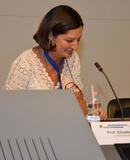
Funzione/Ruolo
Professoressa ordinaria di Paleontologia e Paleoecologia presso l'Università degli Studi di Milano e Presidente della Società Geologica Italiana per il triennio 2015-2017
Percorso professionale
Dopo aver conseguito la laurea in Scienze Geologiche nel 1982, prosegue la sua formazione con un dottorato di ricerca in Scienze della Terra all'Università degli Studi di Milano, nel 1987. Nel biennio 1987-1988 svolge un post dottorato presso il Geologisches Institut, ETH di Zurigo. Nel 1990 è ricercatrice all'Università degli Studi di Milano e l'anno successivo diventa professoressa associata del dipartimento di Scienze della Terra nella stessa università. Dal 2005 è professoressa ordinaria presso lo stesso dipartimento dell'Università degli Studi di Milano.
Risultati scientifici
Elisabetta Erba è specialista di nanofossili calcarei, i massimi produttori di calcite al mondo a dispetto delle loro ridottissime dimensioni. Quando muoiono, precipitano sui fondali marini e nell'arco di milioni di anni formano la maggior parte del sedimento. I nanofossili sono utilizzati per la biostratigrafia (lo studio delle rocce sedimentate e del loro ambiente di deposizione) e per le ricostruzioni paleo-oceanografiche. Elisabetta Erba studia le interazioni tra geosfera, atmosfera, idrosfera e biosfera e, in particolare, i grandi cambiamenti climatici. La sua ricerca si è focalizzata sulle relazioni tra CO2 atmosferica, clima ed ecosistemi oceanici. Per comprendere cause e conseguenze dei cambiamenti climatici attuali e futuri è importante infatti introdurre una prospettiva geologica. I nanofossili sono utilizzati da Elisabetta Erba anche per studiare la natura e l'origine della sapropelite, sostanza nerastra formata in prevalenza dal deposito, in acque stagnanti, di gusci di microrganismi e di alghe unicellulari in putrefazione dalle quali deriva il petrolio.
Attività editoriali e pubblicazioni
È autrice di più di numerose pubblicazioni tra cui:
(2018) Gambacorta G., Malinverno A. and Erba E, Orbital forcing of carbonate versus siliceous productivity in the late Albian–early Turonian (Umbria-Marche Basin, central Italy). Newsletters on Stratigraphy.
(2018) Bottini C. & Erba E., Mid-Cretaceous paleoenvironmental changes in the western Tethys. Climate of the Past, 14: 1147–1163.
(2017) Faucher, G., Hoffmann, L., Bach, L. T., Bottini, C., Erba, E., and Riebesell, U., Impact of trace metal concentrations on coccolithophore growth and morphology: laboratory simulations of Cretaceous stress. Biogeosciences , 14: 3603-3613 doi.org/10.5194/bg-14-3603-2017.
(2015) Erba E, Duncan RA, Bottini C, Tiraboschi D. Weissert H, Jenkyns HC, Malinverno A. Environmental Consequences of Ontong Java Plateau and Kerguelen Plateau Volcanism. Geological Society of America, Special Paper 511:271-303.
(2010) Erba E, Bottini C, Weissert HJ, Keller CE. Calcareous Nannoplankton Response to Surface Water Acidification Around Oceanic Anoxic Event 1a. Science, 329:428-432.
(2006) Erba E. The first 150 million years history of calcareous nannoplankton: biosphere-geosphere interactions. Palaeogeography Palaeoclimatology Palaeoecology, 232:237-250.
(2005) Muttoni G, Erba E, Kent DV & Bachtadse V. Mesozoic alpine facies deposition as a result of past latitudinal plate motion. Nature, 434:59-63.
(2004) Erba E. Calcareous nannofossils and Mesozoic Oceanic Anoxic Events. Marine Micropaleontology, 52:85-106.
(2004) Erba, E, Bartolini A, Larson RL. The Valanginian "Weissert Oceanic Anoxic Event. Geology, 32:149-152.
(2004) Erba E & Tremolada F. Nannofossil carbonate fluxes during the Early Cretaceous: phytoplankton response to nutrification episodes, atmospheric CO2 and anoxia. Paleoceanography, 19.
(2004) Weissert H & Erba E. Volcanism, CO2 and paleoclimate: a Late Jurassic-Early Cretaceous carbon and oxygen isotope record. Journal of the Geological Society of London, 161:695-702.
(1999) Larson RL & Erba E. Onset of the mid-Cretaceous greenhouse in the Barremian-Aptian: Igneous events and the biological, sedimentary and geochemical responses. Paleoceanography, 14:663-678. (1994) Erba E. Nannofossils and superplumes: the Early Aptian nannoconid crisis. Paleoceanography, 9:483-501.
Riconoscimenti e premi
Elisabetta Erba è Presidente della Società Geologica Italiana per il biennio 2015-2017 e dal 2013 è componente dell'Accademia dei Lincei. Dallo stesso anno fa anche parte dell'Academia Europaea (sezione Earth and Cosmic Sciences). Nel 2012 vince il premio Tartufari per le Geoscienze - Accademia Nazionale dei Lincei.
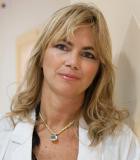
Funzione/Ruolo
Presidente dell'Associazione Mondiale per le Malattie infettive e i Disordini immunologici (WAidid), Professoressa ordinaria di Pediatria all’Università di Parma e Direttrice della Clinica Pediatrica all’Ospedale Pietro Barilla dell’Azienda Ospedaliera-Universitaria di Parma
Percorso professionale
Dopo aver conseguito la laurea in Medicina e Chirurgia all'Università degli Studi di Milano nel 1995, prosegue la sua formazione con una specializzazione in Pediatria (1999) e una successiva in Malattie Infettive (2006). A due anni dalla laurea è già responsabile del laboratorio di ricerca della Clinica Pediatrica IV, e dal 2000 del laboratorio di ricerca della Unità Operativa di Pediatria Clinica dell'Università degli Studi di Milano, poi denominata Unità Operativa di Pediatria ad Alta Intensità di Cura. Susanna Esposito affianca alla carriera medica quella accademica: nel 2002 è ricercatrice universitaria di Pediatria Generale e Specialistica e dal 2005 professoressa associata. Svolge inoltre periodi di ricerca in strutture estere: nel 2007 a Dallas, in Texas, presso il Southwestern Medical Center della University Hospital and Clinic, nel 2009 a Londra, presso il St George's Medical Center e l'anno successivo nel Burundi, in Africa, presso il Kiremba Hospital. Dall'anno accademico 2009-2010, è professoressa di Infettivologia Pediatrica al Paediatric Infectious Diseases Diploma dell'Università di Oxford, UK; Dal 2010 al 2016 é direttrice dell'Unità di Pediatria ad Alta Intensità di Cura presso la Fondazione IRCCS Ca' Granda Ospedale Maggiore Policlinico dell'Università degli Studi di Milano e responsabile del Centro di Riferimento Regionale, in Lombardia, per l'Infezione da HIV e per la Malattia di Lyme in età pediatrica. Dal 2017 al 2019 è professoressa ordinaria di Pediatria, direttrice della Scuola di Specialità in Pediatria e direttrice della S.C. Clinica Pediatrica presso l'Università degli Studi di Perugia. Attualmente è professoressa ordinaria di Pediatria all’Università di Parma e direttrice della Clinica Pediatrica all’Ospedale Pietro Barilla dell’Azienda Ospedaliera-Universitaria di Parma e presidente dell'Associazione Mondiale per le malattie infettive e i disordini immunologici (WAidid).
Risultati scientifici
L'attività scientifica di Susanna Esposito inizia già durante i suoi studi universitari con ricerche sulle patologie infettive pediatriche, in particolare influenza e virus respiratori, infezioni da batteri invasivi, tubercolosi e HIV. Progressivamente il suo campo di interesse si estende all'immunologia con studi sulle vaccinazioni, sulla risposta immunitaria e sull'immunogenetica, la pneumologia, l'allergologia, la reumatologia e le malattie rare. Ha coordinato diverse ricerche e sperimentazioni cliniche sul ruolo di virus e batteri nelle principali infezioni in età pediatrica e studi sull'efficacia, tollerabilità e sicurezza delle vaccinazioni. Ha inoltre coordinato lo sviluppo di linee guida sull'approccio diagnostico-terapeutico alle principali malattie infettive nei bambini e le linee guida sul nuovo calendario vaccinale e sulle vaccinazioni raccomandate per l'infanzia. Nel 2012 ha identificato l'enterovirus C-117 e l'enterovirus C-118, due nuovi enterovirus, un genere di virus resistenti alle offese chimiche e fisiche, che possono sopravvivere a lungo nell'ambiente, colpendo soprattutto persone dalle difese immunitarie basse, come i bambini e gli anziani, con effetti in taluni casi gravissimi. Dal 2013 coordina il gruppo di studio sui vaccini (EVASG) della European Society for Clinical Microbiology and Infectious Diseases.
Attività editoriali e pubblicazioni
Dal 2005 fa parte dell'International Board di The Pediatric Infectious Disease Journal, dal 2009 è Associate Editor di BMC Infectious Diseases, dal 2011 è Associate Editor di Human Vaccines & Immunotherapeutics, dal 2013 è Associate Editor di Journal of Clinical Virology e fa parte Editorial Board Member di PLOS One, dal 2014 è Associate Editor di Medicine e dal 2016 fa parte dell'Editorial Board Member di AIMS Microbiology e di Npj Vaccines. Dal 2016 è anche direttrice della rivista Edit Symposia e referee per numerose riviste scientifiche come Lancet, il British Medical Journal, Vaccine, European Journal of Clinical Microbiology and Infectious Diseases e l'American Journal of Physicians.
Susanna Esposito è autrice di più 1000 pubblicazioni, tra cui oltre 450 articoli su periodici a diffusione internazionale pubblicati su PubMed, e di oltre 1000 relazioni su invito a congressi di società scientifiche nazionali e internazionali, fra cui:
(2016) Esposito S, Bonanni P, Maggi S, Tan L, Ansaldi F, Lopalco PL, Dagan R, Michel JP, van Damme P, Gaillat J, Prymula R, Vesikari T, Mussini C, Frank U, Osterhaus A, Celentano LP, Rossi M, Guercio V, Gavazzi G. Recommended immunization schedules for adults: Clinical practice guidelines by the Escmid Vaccine Study Group (EVASG), European Geriatric Medicine Society (EUGMS) and the World Association for Infectious Diseases and Immunological Disorders (WAidid). Human Vaccine Immunotherapeutics, 12:1777-1794.
(2016) Esposito S, Principi N. European Society of Clinical Microbiology and Infectious Diseases (ESCMID) Vaccine Study Group (EVASG). Strategies to develop vaccines of pediatric interest. Expert Review of Vaccines, Epub Sep 28.
(2016) Esposito S, Guez S, Orenti A, Tadini G, Scuvera G, Corti L, Scala A, Biganzoli E, Berti E, Principi N. Autoimmunity and cytokine imbalance in inherited epidermolysis bullosa. International Journal of Molecular Science, 17(10):1625.
(2016) Esposito S, Longo MR. Guillain-Barré syndrome. Autoimmunity Review, 16(1):96-101.
(2016) Principi N, Esposito S. Gut microbiota and central nervous system development. Journal of Infection, 73(6):536-546.
(2016) Esposito S, Pietro GD. Respiratory syncytial virus vaccines: an update on those in the immediate pipeline. Future Microbiology, 11:1479-1490.
(2016) Esposito S, Di Gangi M, Cardinale F, Baraldi E, Corsini I, Da Dalt L, Tovo PA, Correra A, Villani A, Sacco O, Tenero L, Dones P, Gambino M, Zampiero A, Principi N, Ita-CAP Study Group. Sensitivity and specificity of soluble triggering receptor Expressed on Myeloid Cells-1, Midregional Proatrial Natriuretic Peptide and Midregional Proadrenomedullin for Distinguishing Etiology and to Assess Severity in Community-Acquired Pneumonia. PLoS One, 11:e0163262.
(2015) Esposito S, Piralla A, Zampiero A, Bianchini S, Di Pietro G, Scala A, Pinzani R, Fossali E, Baldanti F, Principi N. Characteristics and their clinical relevance of respiratory syncytial virus types and genotypes circulating in Northern Italy in five consecutive winter seasons. PLoS One, 10:e0129369.
(2015) Esposito S, Giavoli C, Trombetta C, Bianchini S, Montinaro V, Spada A, Montomoli E, Principi N. Immunogenicity, safety and tolerability of inactivated trivalent influenza vaccine in overweight and obese children. Vaccine, Epub Nov 19.
(2014) Esposito S, Corona F, Barzon L, Cuoco F, Squarzon L, Marcati G, Torcoletti M, Gambino M, Palù G, Principi N. Immunogenicity, safety and tolerability of a bivalent human papillomavirus vaccine in adolescents with juvenile idiopathic arthritis. Expert Review of Vaccines, 13:1387-1393.
Riconoscimenti e premi
Susanna Esposito nel 2002 riceve il Premio "Carlo Imperato", nell'ambito del 58° Congresso Nazionale della Società Italiana di Pediatria, per il miglior lavoro sperimentale su "Malattie respiratorie del bambino", nello stesso anno è insignita dello Young Investigator Award nell'ambito del III World Congress of Pediatric Infectious Diseases (Santiago, Cile). Nel 2004 riceve il Premio Amici di Milano - Medaglie d'Oro insigniti della Targa d'Argento del Presidente della Repubblica Italiana e della Targa d'Argento del Presidente della Regione Lombardia, come migliore ricercatrice medica. Nel 2008 le viene consegnato il Premio Soci SIP come migliore ricercatrice di Pediatria generale e specialistica nell'ambito della Società Italiana di Pediatria, nel 2011 il Premio Ambassador per la ricerca all'estero in ambito medico e nel 2014 l'Attestato di Benemerenza per l'impegno e la professionalità negli anni dedicati alla salute del bambino dall'Associazione Amici del Policlinico e della Mangiagalli. Dal 2011 al 2014 è chiamata a presiedere la Società italiana di Infettivologia Pediatrica (SITIP); dal 2012 al 2015 è presidente della Commissione dell'Organizzazione Mondiale della Sanità per l'eradicazione di morbillo e rosolia congenita e continua a partecipare ai lavori della Commissione come Past President. Dal 2015 è presidente dell'Associazione Mondiale per le Malattie Infettive e i Disordini Immunologici (WAidid).

Funzione/Ruolo
Dirigente di ricerca dell'Istituto di Scienze dell'Atmosfera e del Clima del CNR, sezione di Bologna
Percorso professionale
Laureata nel 1985 all'Università degli Studi di Bologna con una tesi in Chimica analitica, consegue il dottorato di ricerca presso il Dipartimento di Chimica dello stesso ateneo, e nel medesimo dipartimento diventa post doc fellow. Nel 1987 è reaserch fellow presso l'Istituto di Fisica Atmosferica del CNR di Bologna, e occupa questa posizione fino al 1992, anno in cui diventa capo del laboratorio dell'Agenzia Regionale per la Protezione Ambientale. Nel 1996 entra nell'Istituto di Fisica e Chimica della Bassa e Alta Atmosfera del CNR di Bologna. Dal 2001 al 2006 è Senior Scientist presso l'Istituto di Scienze Atmosferiche e Oceaniche del CNR. Dal 2007 è dirigente di ricerca dell'Istituto di Scienze dell'Atmosfera e del Clima del CNR, sezione di Bologna.
Risultati scientifici
Gli interessi di ricerca principali di Maria Cristina Facchini sono i processi fisici e chimici nel sistema atmosferico come gli aerosol e le nuvole e i loro effetti sui cambiamenti della composizione atmosferica e del clima. All'inizio della sua carriera scientifica ha indagato le proprietà chimiche di nebbia e nuvole, tanto che il suo primo importante risultato scientifico riguarda la partizione organica dell'aerosol tra gocce di nebbia e aria interstiziale. Sulla base di queste sue ricerche, ha contribuito allo sviluppo di una nuova tecnica di indagine degli aerosol basata sui principi di risonanza magnetica nucleare. Nel 2001 ha contribuito a un documento comune su Science, dove i maggiori esperti mondiali del settore hanno discusso la necessità di rifondare la teoria della formazione di nubi sulla base delle nuove scoperte riguardanti la solubilità degli aerosol e la loro tensione superficiale, nonché sugli effetti dei gas solubili. Le sue ricerche più recenti riguardano l'interazione tra clima e biota (in ecologia, l'insieme di tutti gli esseri viventi, animali e vegetali, che popolano una data regione) marino, atmosferico, aerosol.
Attività editoriali e pubblicazioni
È autrice di più di 150 pubblicazioni scientifiche tra cui:
(2011) Decesari S, Finessi E, Rinaldi M, Paglione M, [...] Facchini MC. Primary and secondary marine organic aerosols over the north atlantic ocean during the map experiment. Journal of Geophysical Research Atmospheres, 116(D22).
(2011) Rinaldi M, Decesari S, Carbone C, [...] Facchini MC.Evidence of a natural marine source of oxalic acid and a possible link to glyoxal. Journal of Geophysical Research Atmospheres, 116(D16).
(2008) Facchini MC, Decesari S, Rinaldi M, et al. An important source of marine secondary organic aerosol from biogenic amines. Environmental Science & Technology, 42:9116-9121.
(2008) Facchini MC, Rinaldi M, Decesari S, et al. Primary submicron marine aerosol dominated by insoluble organic colloids and aggregates. Geophysical Research Letters, 35, L17814.
(2005) Kanakidou M, Seinfeld JH, Pandis SN, Barnes I, Dentener FJ, Facchini MC, et al. Organic aerosol and global climate modelling: a review. Atmospheric Chemistry and Physics, 5:1053-1123.
(2004) O'Dowd CD, Facchini MC, et al. Biogenicallydriven organic contribution to marine aerosol. Nature, 431:676-680.
(2001) Charlson RJ, Seinfeld JH, Nenes A, Kulmala M, Laaksonen M, Facchini MC. Reshaping theory of cloud formation. Science, 292:2025-2026.
(2000) Decesari S, Facchini MC, Fuzzi S & Tagliavini E. Characterization of water soluble organic compounds in atmospheric aerosol: a new approach. Journal of Geophysical Research, 105:1481-1489.
(1999) Facchini MC, Fuzzi S, Zappoli S, et al. Partitioning of the organic aerosol component between fog droplets and interstitial air. Journal of Geophysical Research, 104, 26821-26832.
(1999) Facchini MC, Mircea M, Fuzzi S & Charlson RJ. Cloud albedo enhancement by surface-active organic solutes in growing droplets. Nature, 401:257-259.
Riconoscimenti e premi
Nel 2014 è nella Highly Cited Researchers Rank di Thomson Reuters, classifica dei ricercatori e delle ricercatrici più influenti al mondo. Nello stesso anno riceve il Premio Haagen-Smit Prize. Fa parte di diverse società scientifiche, come l'European Association for Geochemistry, l'European Geophysical Union, l'American Aerosol Society ed è una delle fondatrici della Italian Aerosol Association.
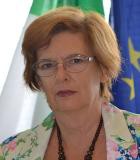
Funzione/Ruolo
Responsabile della Divisione Tecnologie Fisiche per la Sicurezza e la Salute (FSN-TECFIS) dell’ENEA
Percorso professionale
Laureata in Chimica presso l’Università di Roma La Sapienza nel 1978 con tesi sulla spettroscopia elettronica in fase gassosa. Dopo un periodo di borse di studio viene assunta dall’ENEA nel 1982 per collaborare al progetto di arricchimento isotopico dell’uranio via laser, al termine del quale trascorre alcuni periodi di specializzazione all’estero (Università Cattolica di Nijmegen, Politecnico di Zurigo). Le sue esperienze professionali sulla diagnostica e fotochimica laser la portano a diventare nel 1998 responsabile della Sezione FIS-SPET “Spettroscopia Molecolare” dell’ENEA a Frascati, incarico che manterrà fino al 2010. Nel 2010 viene nominata responsabile dell’intera Unità Tecnica “Applicazioni delle Radiazioni” (UTAPRAD) dell’ENEA Frascati. A seguito dell’ultima ristrutturazione dell’ENEA diventa responsabile della divisione TECFIS sempre a Frascati, incarico che tuttora ricopre.
Risultati scientifici
Sin dall’inizio della sua carriera la Roberta Fantoni si è occupata di attività di ricerca multidisciplinari e di progetti al confine fra le competenze di chimica e fisica (spettroscopia e processi chimici). Successivamente, sempre nel campo dell’interazione radiazione-materia, ha condotto la ricerca su processi di interesse applicativo più ampio, dalla biologia alla medicina ai beni culturali. Le sue solide competenze scientifiche e tecnologiche sono state di volta in volta utilizzate e adattate per nuove applicazioni specifiche, come le applicazioni laser in chimica fisica, sulla base di ricerche connesse con il progetto di separazione isotopica via laser prevalentemente riguardante processi multi-fotonici e spettroscopia ad alta risoluzione nell’infrarosso; la spettroscopia e diagnostiche laser, comprendenti la spettroscopia infrarossa mediante diodo laser, la spettroscopia laser Raman, la spettroscopia di emissione nel visibile/ultravioletto, la spettrometria per ionizzazione multifotonica, Laser Induced Fluorescence (LIF), Laser Induced Breakdown Spectroscopy (LIBS), Coherent AntiStokes Raman Scattering (CARS), Degenerate Four Wave Mixing (DFWM) e Laser Induced Grating Spectroscopy (LIGS); Applicazioni laser multisciplinari relative alla microelettronica (deposition di film sottili), alla scienza dei materiali (sintesi di nano-strutture), all’ambiente (decomposizione di inquinanti liquidi e gassosi) e alla caratterizzazione locale e remota di superfici relative a beni culturali; organizzazione e partecipazione a campagne di monitoraggio marine e sui beni culturali. Nel corso della sua carriera Roberta Fantoni ha personalmente stabilito e mantenuto contatti con scienziati responsabili di attività di ricerca in laboratori europei di eccellenza (nel Paesi Bassi, in Svizzera, Romania, Slovenia e Spagna) e in altri paesi del mondo (Russia, Egitto). Le attività di ricerca sono state prevalentemente finanziate attraverso progetti bilaterali di cooperazione finanziati dal Ministero degli Esteri (MAE).
Attività editoriali e pubblicazioni
È autrice di circa 161 pubblicazioni scientifiche, tra cui:
(2010), Popov AM, Colao F, Fantoni R. Spatial confinement of laser-induced plasma to enhance LIBS sensitivity for trace elements determination in soils. Journal of Analytical Atomic Spectrometry, 25:837-848.
(2010) Colao F, Fantoni R, P.Ortiz P, Vazquez MA, Martin JM, Ortiz R, Idris N. Quarry identification of historical building materials by means of laser induced breakdown spectroscopy, X-ray fluorescence and chemometric analysis. Spectrochimica Acta B, 65:688-694.
(2012) Almaviva S, Caneve L, Colao F, Fantoni R, Maddaluno G. Laboratory feasibility study of fusion vessel inner wall chemical analysis by Laser Induced Breakdown Spectroscopy. Chemical Physics, 398, 228–232.
(2012) Almaviva S, Caneve L, Colao F, Fantoni R, Maddaluno G. Remote-LIBS characterization of ITER-like plasma facing materials. Journal of Nuclear Materials, 421:73-79.
(2013) Fantoni R, Caneve L, Colao F, Fiorani L, Palucci A, Dell’Erba R, Fassina V. Laser-induced fluorescence study of medieval frescoes by Giusto de’ Menabuoi. Journal of Cultural Heritage,14: S59–S65.
(2013) Fantoni R, Almaviva S, Caneve L, Colao F, Popov AM, Maddaluno G. Development of Calibration-Free Laser-Induced-Breakdown-Spectroscopy based techniques for deposited layers diagnostics on ITER-like tiles. Spectrochimica Acta B, 87:153-160.
(2013 ) Caneve L, Colao F, Fantoni R, Fiorani L. Scanning lidar fluorosensor for remote diagnostic of surfaces. Nuclear Instruments and Methods in Physics Research A, 720:164–167.
(2014) Almaviva S, Botti S, Cantarini L, Fantoni R, Lecci S, Palucci A, Puiu A and Rufoloni A. Ultrasensitive RDX detection with commercial SERS substrates. Journal of Raman Spectroscopy, 45: 41–46.
(2014) Almaviva S, Fantoni R, Caneve L, Colao F, Fornarini L, Santagata A, Teghil R. Use of ns and fs pulse excitation in laser induced breakdown spectroscopy to improve its analytical performances: a case study on quaternary bronze alloys. Spectrochimica Acta B, 99:185-192.
(2014) Spizzichino V, Fantoni R. Laser Induced Breakdown Spectroscopy in Archeometry: a review of its application and future perspectives. Spectrochimica Acta B, 99:201-209.
(2015) Ortiz R, Ortiz P, Colao F, Fantoni R, Gómez-Morón MA, Vázquez MA. Laser spectroscopy and imaging applications for the study of cultural heritage murals. Construction and Building Materials, 98:35–43.
Riconoscimenti e premi
Nel 1992, Roberta Fantoni vince il Premio “Carnia Ape Verde” per il miglior progetto di ricerca per la tutela della vegetazione, bandito dalla regione Friuli Venezia-Giulia, con i colleghi R. Barbini, F. Colao, A. Palucci, S. Ribezzo.
Nel 1980 vince il Premio “G. Stampacchia” per il miglior lavoro in campo chimico, bandito dall’Università di Roma La Sapienza.
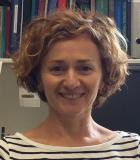
Funzione/Ruolo
Responsabile della Vaccinologia strutturale presso GSK Ricerca e Sviluppo, Siena, Italia
Percorso professionale
Dopo la laurea in Biofisica all’Università degli Studi di Tor Vergata nel 1993, prosegue gli studi attraverso una specializzazione in Biologia Strutturale di proteine vegetali presso il C.R.I.B.I. (Centro di Ricerca Interdipartimentale per le Scienze Innovative), all’Università degli studi di Padova. In seguito inizia le sue attività di ricerca per il dottorato presso i laboratori dell’EMBL. Nel 1998 consegue un dottorato di ricerca inBiologia Strutturale pressola Ruprecht-Karls-Universitat di Heidelberg in Germania. Durante i suoi studi trascorre diversi periodi di formazione all’estero: nel 1996 è fellow nel Dipartimento di Virologia della Medical University of Vienna, nel 1998 è PostDoctoral Fellow alla Howard Hughes Medical Institute, Children’s Hospital, Howard Medical School in Boston, MA, USA. Nel 1999 è PostDoctoral fellow nel Dipartimento di Virologia Strutturale presso il C.N.R.S. di Gif-sur-Yvette, Francia. Contemporaneamente (dal 2000 al 2003) collabora con il Dipartimento di Genetica Molecolare presso la Ecole Normale Superiore di Parigi, Francia. La sua formazione prosegue quindi dal 2004 in Italia presso il centro di Ricerche della GSK (precedentemente Novartis, in Siena, Italia) e le sue ricerche prima come ricercatrice, poi come Senior Research Investigator ed infine nel 2009 come Head of Structural Vaccinology.
Risultati scientifici
I suoi interessi scientifici si concentrano attualmente sulla correlazione tra le strutture di proteine di superficie batteriche e virali e la loro funzionalità. In particolare ha sviluppato la cosiddetta “Structural Vaccinology” un nuovo approccio che permette, partendo dalla conoscenza della struttura tridimensionale di tali proteine di superficie, di determinare gli epitopi più efficaci di una proteina e di ingegnerizzarli allo scopo di renderli più immunogenici e usarli in ultima analisi come vaccini. Tale approccio è stato di supporto nello sviluppo del Bexsero™, vaccino recentemente approvato dell’FDA per proteggere contro la infezione da Meningococco B ed è attualmente in uso nello sviluppo di ulteriori vaccini contro patogeni umani di origine virale e batterica. Da diversi anni fa parte di diversi gruppi di coordinamento di network europei dedicati alla struttura delle proteine (iNext).
Attività editoriali e pubblicazioni
È autrice di pubblicazioni scientifiche e capitoli di testi scientifici, tra i quali:
[2016] Vilas JL, Navas J, Gómez-Blanco J, de la Rosa-Trevín JM, Melero R, Peschiera I, Ferlenghi I, Cuenca J, Marabini R, Carazo JM, Vargas J, Sorzano CO. Fast and automatic identification of particle tilt pairs based on Delaunay triangulation. Journal of Structural Biology, 196(3):525-53.
[2016] Fiaschi L, Di Palo B, Scarselli M, Pozzi C, Tomaszewski K, Galletti B, Nardi-Dei V, Arcidiacono L, Mishra RP, Mori E, Pallaoro M, Falugi F, Torre A, Fontana MR, Soriani M, Bubeck Wardenburg J, Grandi G, Rappuoli R, Ferlenghi I, Bagnoli F. Auto-Assembling Detoxified Staphylococcus aureus Alpha-Hemolysin Mimicking the Wild-Type Cytolytic Toxin.Clinical and Vaccine Immunology, 6;23(6):442-50.
[2016] Biagini M, Spinsanti M, De Angelis G, Tomei S, Ferlenghi I, Scarselli M, Rigat F, Messuti N, Biolchi A, Muzzi A, Anderloni G, Brunelli B, Cartocci E, Buricchi F, Tani C, Stella M, Moschioni M, Del Tordello E, Colaprico A, Savino S, Giuliani MM, Delany I, Pizza M, Costantino P, Norais N, Rappuoli R, Masignani V.Expression of factor H binding protein in meningococcal strains can vary at least 15-fold and is genetically determined.Proceedings of the National Academy of Sciences USA, 8;113(10):2714-9.
[2015] Prevato M, Ferlenghi I, Bonci A, Uematsu Y, Anselmi G, Giusti F, Bertholet S, Legay F, Telford JL, Settembre EC, Maione D, Cozzi R. Expression and Characterization of Recombinant, Tetrameric and Enzymatically Active Influenza Neuraminidase for the Setup of an Enzyme-Linked Lectin-Based Assay.PLoS One, 17;10(8).
[2015] Prevato M, Cozzi R, Pezzicoli A, Taddei AR, Ferlenghi I, Nandi A, Montomoli E, Settembre EC, Bertholet S, Bonci A, Legay F. An Innovative Pseudotypes-Based Enzyme-Linked Lectin Assay for the Measurement of Functional Anti-Neuraminidase Antibodies.PLoS One, 12;10(8).
[2015] Ultrastructural Visualization of Vaccine Adjuvant Uptake In Vitro and In Vivo.Giusti F, Seubert A, Cantisani R, Tortoli M, D'Oro U, Ferlenghi I, Dallai R, Piccioli D. Microsc Microanal. 2015 Aug;21(4):791-5.
[2015] Toniolo C, Balducci E, Romano MR, Proietti D, Ferlenghi I, Grandi G, Berti F, Ros IM, Janulczyk R.Streptococcus agalactiae capsule polymer length and attachment is determined by the proteins CpsABCD.Journal of Biological Chemistry, 10;290(15):9521-32.
[2014] Malito E, Biancucci M, Faleri A, Ferlenghi I, Scarselli M, Maruggi G, Lo Surdo P, Veggi D, Liguori A, Santini L, Bertoldi I, Petracca R, Marchi S, Romagnoli G, Cartocci E, Vercellino I, Savino S, Spraggon G, Norais N, Pizza M, Rappuoli R, Masignani V, Bottomley MJ.Structure of the meningococcal vaccine antigen NadA and epitope mapping of a bactericidal antibody.Proceedings of th National Academy of Sciences, 2;111(48):17128-33.
[2014] Rossi O, Pesce I, Giannelli C, Aprea S, Caboni M, Citiulo F, Valentini S, Ferlenghi I, MacLennan CA, D'Oro U, Saul A, Gerke C. Modulation of endotoxicity of Shigella generalized modules for membrane antigens (GMMA) by genetic lipid A modifications: relative activation of TLR4 and TLR2 pathways in different mutants.Journal of Biolical Chemestry, 5;289(36):24922-35.
[2012] Berlanda Scorza F, Colucci AM, Maggiore L, Sanzone S, Rossi O, Ferlenghi I, Pesce I, Caboni M, Norais N, Di Cioccio V, Saul A, Gerke C. High yield production process for Shigella outer membrane particles. PLoS One, 7(6).
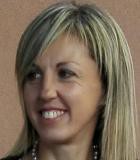
Funzione/Ruolo
Professoressa associata di Chimica all'Università degli Studi di Milano
Percorso professionale
Dopo aver conseguito la laurea in Chimica presso l'Università degli Studi di Milano nel 1993, prosegue la sua formazione con un dottorato di ricerca in Scienze Chimiche conseguito nel 1997. Dal 1999 al 2012 è ricercatrice in Chimica Analitica presso l'Università di Milano nella facoltà di Scienze Matematiche, Fisiche e Naturali. Dal 2012 al 2014 svolge la sua attività di ricerca al Dipartimento di Chimica della stessa università. Dal 2015 è professoressa associata di Chimica Analitica. È docente di Chimica Analitica e Chimica dell'Ambiente presso i corsi di Laurea in Chimica e Chimica Industriale dell'Università degli Studi di Milano. Dal 2008 è componente del collegio dei docenti del Dottorato in Chimica.
Risultati scientifici
Le tematiche di ricerca di Paola Fermo riguardano lo studio e la caratterizzazione di matrici ambientali e in particolare l'aerosol atmosferico (particelle di dimensioni micrometriche in sospensione nell'atmosfera) e gli inquinanti in stato gassoso, sia esternamente, sia in ambienti interni. Il principale obbiettivo della ricerca è la quantificazione dei costituenti delle frazioni a diversa granulometria (PM10, PM2.5, ecc.) del particolato atmosferico (PM) per determinare le sorgenti responsabili delle emissioni. A tale proposito è stato sviluppato un metodo analitico per la quantificazione del levoglucoasano, marker univoco della combustione della legna, un'importante sorgente di particolato atmosferico non solo in ambiente rurale ma anche in ambiente urbano. Le specie analizzate all'interno del PM includono i principali costituenti inorganici e organici. Inoltre vengono quantificate sostanze di interesse dal punto di vista tossicologico (IPA, idrocarburi policiclici aromatici) che mostrano effetti negativi sulla salute umana e sono ritenute cancerogene. In ambiente urbano viene anche studiato il degrado indotto dall'inquinamento atmosferico su superfici lapidee di interesse per i beni culturali. All'interno delle tematiche ambientali rientra lo studio dei contaminanti presenti nelle acque (potabili e reflue). Un ulteriore filone di ricerca è inerente allo studio di manufatti di interesse storico artistico (ceramiche, malte, stucchi, dipinti, ecc.).
Attività editoriali e pubblicazioni
Paola Fermo fa parte dell'editorial board delle riviste: Mediterranean Journal of Chemistry, Annals of Chromatography and Separation Techniques, American Journal of Analytical Chemistry, Journal of Analytical & Bioanalytical Techniques. Svolge inoltre l'attività di reviewer per numerose riviste internazionali.
È autrice di circa 12 capitoli di libri, numerosi atti di convegni e circa 100 pubblicazioni su riviste internazionali, fra cui:
(2019) Ielpo, P., Mangia, C., Marra, G.P., Comite, V., Rizza, U., Uricchio, V.F., Fermo, P. Outdoor spatial distribution and indoor levels of NO2 and SO2 in a high environmental risk site of the South Italy, Science of the Total Environment, 648:787-797.
(2018) Fermo P., Goidanich S., Comite V., Toniolo L., Gulotta D., Study and characterization of environmental deposition on marble and surrogate substrates at a monumental heritage site; Geosciences; in press
(2018) Amadori M.L., Raspugli V., Comite V., Fermo P., Mini F.M., La Russa M., Maekawa Y., Integrated Scientific Investigations On Constitutive Materials From Me-taw-ya Temple, Pagán Valley, Burma (Myanmar), Measurement, ISSN 0263-2241, https://doi.org/10.1016/j.measurement.2018.09.004.
(2018) Amadori, M.L., Pallante, P., Fermo, P., Emami, M.A., Chaverdi, A.A., Callieri, P., Matin, E., Advances in Achaemenid brick manufacturing technology: Evidence from the monumental gate at Tol-e Ajori (Fars, Iran) Applied Clay Science, 152: 131-142.
(2018) Vecchi, R., Bernardoni, V., Valentini, S., Piazzalunga, A., Fermo, P., Valli, G., Assessment of light extinction at a European polluted urban area during wintertime: Impact of PM1 composition and sources, Environmental Pollution, 233: 679-689.
(2018) Daellenbach, K.R., El-Haddad, I., Karvonen, L., Vlachou, A., Corbin, J.C., Slowik, J.G., Heringa, M.F., Bruns, E.A., Luedin, S.M., Jaffrezo, J.-L., Szidat, S., Piazzalunga, A., Gonzalez, R., Fermo, P., Pflueger, V., Vogel, G., Baltensperger, U., Prévôt, A.S.H., Insights into organic-Aerosol sources via a novel laser-desorption/ionization mass spectrometry technique applied to one year of PM10 samples from nine sites in central Europe Atmospheric Chemistry and Physics, 18 (3): 2155-2174.
(2017) Corsini E, Ozgen S, Papale A, Galbiati V, Lonati G, Fermo P, Corbella L, Valli G, Bernardoni V, Dell'Acqua M, Becagli S, Caruso D, Vecchi R, Galli CL, Marinovich M. Insights on wood combustion generated proinflammatory ultrafine particles (UFP). Toxicology Letters, 266, 74-84.
(2016) Daellenbach KR, Bozzetti C, Křepelová A, Canonaco F, Wolf R, Zotter P, Fermo P, Crippa M, Slowik JG, Sosedova Y, Zhang Y, Huang R, Poulain L, Szidat S, Baltensperger U, El Haddad I, Prévôt ASH. Characterization and source apportionment of organic aerosol using offline aerosol mass spectrometry. Atmospheric Measurement Techniques, 9, 23-39.
(2016) Cattaneo A, Fermo P, Urso P, Perrone MG, Piazzalunga A, TarlassiJ, Carrer P, Cavallo DM. Particulate-bound polycyclic aromatic hydrocarbon sources and determinants in residential homes. Environmental Pollution, 218, 16-25.
(2016) Ielpo P, Fermo P, Comite V, Mastroianni D, Viviano G, Salerno F, Tartari G. Chemical characterization of biomass fuel particulate deposits and ashes in households of Mt. Everest region (NEPAL). Science of The Total Environment, 573, 751-759.
(2016) Amadori ML, Del Vais C, Fermo P, Pallante P. Archaeometric researches on the provenance of Mediterranean Archaic Phoenician and Punic pottery. Environmental Science and Pollution Research International, 1-29.
(2016) Fasani D, Fermo P, Barroso PJ, Martín J, Santos JL, Aparicio I, E. Alonso E. Analytical Method for Biomonitoring of PAH Using Leaves of Bitter Orange Trees (Citrus aurantium): a Case Study in South Spain. Water Air and Soil Pollution, 227, 360.
Riconoscimenti e premi
Paola Fermo è componente del Comitato scientifico della Società Italiana di Medicina Ambientale (SIMA) e fa parte della Società Chimica Italiana (Divisione di Chimica Analitica e Divisione di Chimica dell'Ambiente e dei Beni Culturali), della Società Italiana di Archeometria (AIAR) e del consorzio INSTM (Consorzio Internazionale per la Scienza e la Tecnologia dei Materiali).

Area STEM: Ingegneria
Competenze: automatica, robotica, sistemi di controllo avanzati
Parole chiave: controllo dei processi, controllo del traffico, controllo di autoveicoli, controllo di micro-reti e sistemi energetici in rete, guida autonoma, interazione umani-robot, robotica, smart mobility
Regione: Lombardia
Funzione/Ruolo
Professoressa ordinaria di Automatica all'Università di Pavia
Percorso professionale
Consegue la Laurea in Ingegneria Elettronica nel 1987 e il Dottorato in Ingegneria Elettronica e Informatica nel 1992. Diventa Ricercatrice Universitaria presso l’Università di Genova (aprile 1992), Professoressa Associata presso l’Università di Pavia (novembre 1998) e Professoressa Ordinaria di Automatica sempre presso l’Università di Pavia (Gennaio 2005).
Risultati scientifici
Si è occupata di controllo di sistemi complessi (sistemi robotici, reti di autoveicoli, traffico veicolare, reti energetiche anche basate su risorse rinnovabili). Ha proposto nuovi algoritmi per il controllo di impianti e processi il cui modello matematico è affetto da incertezze. Ha proposto nuovi approcci per il controllo del traffico veicolare nelle reti di trasporto con l’obiettivo di ridurre le congestioni e l’impatto ambientale. Si è occupata di controllo avanzato di autoveicoli, collaborando con importanti case automobilistiche e coordinando il gruppo di ricerca italiano in due progetti europei (PROTECTOR, ITEAM). In particolare, ha proposto soluzioni per sistemi di ausilio alla guida (ADAS) e guida autonoma. Si è occupata di interazione uomo-robot proponendo un approccio basato sull’uso congiunto di metodologie di controllo convenzionali e di intelligenza artificiale (deep reinforcement learning). Ha pubblicato più di 380 lavori scientifici, tra cui 118 articoli su riviste internazionali e 3 libri scientifici. Ha inoltre contribuito con capitoli invitati a 23 libri.
Attività editoriali e pubblicazioni
Antonella Ferrara è autrice di numerose pubblicazioni, fra cui:
[2019] Ferrara A, Incremona G.P, Cucuzzella M. Advanced and Optimization Based Sliding Mode Control. SIAM.
[2018] Ferrara A, Simona S, Siri S. Freeway Traffic Modelling and Control. Springer.
[2017] Ferrara A, (Ed.).Sliding Mode Control of Vehicle Dynamics. IET Digital Library.
[2019] Regolin E, Alatorre A, Zambelli M, Victorino A, Charara A, Ferrara A. A Sliding Mode Virtual Sensor for Wheel Forces Estimation with Accuracy Enhancement via EKF. IEEE Transactions on Vehicular Technology, 68(4): 3457-3471.
[2018] Sangiovanni B, Rendiniello A, Incremona G.P, Ferrara A, Piastra M. Deep Reinforcement Learning for Collision Avoidance of Robotic Manipulators, Proceedings of the European Control Conference ECC 2018, Limassol, Cyprus.
[2018] Canudas de Wit C., Ferrara A. A Variable-Length Cell Transmission Model for Road Traffic Systems. Transportation Research Part C: Emerging Technologies, 97: 428-455.
[2018] Cucuzzella M, Lazzari R, Trip S, Rosti S, Sandroni C, Ferrara A. Sliding mode voltage control of boost converters in DC microgrids, Control Engineering Practice, 73:161-170.
[2017] Cucuzzella M, IncremonaG.P, Ferrara A. Decentralized Sliding Mode Control of Islanded AC Microgrids with Arbitrary Topology. IEEE Transactions on Industrial Electronics, 64(8): 6706-6713.
[2017] Incremona G.P, Ferrara A, Magni L. MPC for Robot Manipulators with Integral Sliding Modes Generation. IEEE/ASME Transactions on Mechatronics, 22(3):1299-1307.
[2015]Ferrara A, Simona S, Siri S. Event-triggered model predictive schemes for freeway traffic control.Transportation Research Part C: Emerging Technologies, 58(Part C):554–567.
[2015] Goggia T, Sorniotti A, De Novellis L, Ferrara A, Gruber P, Theunissen J, Steenbeke D, Knauder B, Zehetner J. Integral Sliding Mode for the Torque-Vectoring Control of Fully Electric Vehicles: Theoretical Design and Experimental Assessment. IEEE Transactions on Vehicular Technology, 64(5):1701-1715.
[2012] Capisani L, Ferrara A, Trajectory Planning and Second Order Sliding Mode Motion/Interaction Control for Robot Manipulators in Unknown Environments.IEEE Transactions on Industrial Electronics, 59(8):3189 – 3198.
Riconoscimenti e premi
1986, "IEEE North Italy Section Electrical Engineering Student Award"
2003, Senior Member of the IEEE
2006, Outstanding Reviewer for Automatica Award
2013.2016, Chair of the Women in Control Committee of the IEEE Control Systems Society
2012; 2016-2018, Member of the Board of Governors IEEE Control Systems Society
2015-present, Member of the European Control Association (EUCA) Council
2019, "EPSON EMEA WIN-A-ROBOT Contest Award"
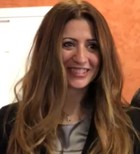
Funzione/Ruolo
Corporate Social Responsibility Country Manager IBM Italia e IBM Master Inventor
Percorso professionale
Laureata in Scienze dell’Informazione all’Università di Bari. Vince una borsa di studio al CNR di Genova per la sezione informatica. Trascorre due anni di ricerca presso il CORINTO (Consorzio di Ricerca Nazionale per Tecnologia ad Oggetti) a Bari. Subito dopo inizia a lavorare per l’IBM, dove ricopre diversi ruoli in differenti settori, ma rimanendo sempre nella realizzazione di progetti digitali innovativi. Riveste il ruolo di dirigente per IBM e IBM Italia della Responsabilità Sociale di Impresa.
Nel 2016 viene selezionata dal Commissario per l’attuazione all’agenda digitale per il Governo italiano, Diego Piacentini, ed entra a far parte del Team per la Trasformazione Digitale per la Presidenza del consiglio. Per ricoprire il ruolo di Esperto Digitale richiede ed ottiene l’aspettativa da IBM. Da Febbraio 2019 è la nuova Direttrice di Fondazione IBM ed anche Corporate Citizenship manager per l’Italia. Floriana dal 2008 è stata insignita della nomina di Master Inventor, nel suo curriculum 21 brevetti nel campo digitale. Leader per Italia di progetti NERD? Non è Roba per Donne? a P-Tech.
Risultati scientifici
Floriana Filomena Ferrara è autrice di 21 brevetti nell’ambito dell’innovazione digitale.
Digital-entusiasta, ama condividere la sua passione soprattutto con le studentesse delle scuole superiori puntando ad incoraggiare le giovani donne ad intraprendere studi nel campo STEM. Diversi i progetti che la vedono protagonista, il principale è il progetto “NERD? - Non È Roba per Donne?”, nato da una collaborazione tra IBM e la professoressa Paola Velardi della Sapienza . Il progetto al momento ha raggiunto 10.000 studentesse in Italia grazie alla collaborazione di 100 colleghe/amiche volontarie della Fondazione IBM e alla disponibilità di scuole e Università sparse per tutta l’Italia. In dettaglio le Univerisità coinvolte sono: Bicocca Milano, Università Alessandria e Vercelli, Università di Genova, Università di Padova, Federico II Napoli, Politecnico di Bari e Università di Bari.
Attività editoriali e pubblicazioni
[2000-2018] #61 Publication in IBM Tech Disclosure Bulletin
[1997] Ferrara, Corinto & Aphrodite a new Object Oriented methodology. SEDBT, CNR.
[1996] Ferrara, Clematis, Cassano, Spagnulo. Peucher&Douglass for the Processing Terrain with characterisation on "Triangolazione", “Rapporto Tecnico”, IMA 14/95.
[1996] Cassano, Clematis, Ferrara, Spagnulo, Network based parallel processing for terrain characterisation on irregular simple data. “High-Performance Computing and Networking”, HPCN Europe 1996: 940-941.
Riconoscimenti e premi
2008-2019 Master inventor https://en.wikipedia.org/wiki/IBM_Master_Inventor
2015, Una delle 100 donne che contano nel Digitale http://www.chefuturo.it/2015/08/100-donne-digitali-italia/
2016, One of the 100 woman in the Digital in Italy http://startupitalia.eu/67126-20161229-le-100-donne-nel-digitale-del-2016
2017, one of 15 influential Italian women in the world of digital technology, technology and innovation of https://www.digitalic.it/economia-digitale/donne-influenti-digitale-italia-digiwomen-2017
2017, When the innovation is woman: 150 women in Italy http://startupitalia.eu/76729-20170815-150-profili-al-femminile-da-seguire-su-innovazione-startup-e-digitale
2018, Premio Eccellenze Joniche 2018 http://www.eccellenzejoniche.it/
2018, Le 150 donne che contano nel digitale https://startupitalia.eu/95739-20180815-le-150-donne-da-seguire-in-italia-su-startup-innovazione-e-digitale
2019, Role model per Sistema Scuola-Impresa http://www.elis.org/aiutiamo-i-ragazzi-realizzare-i-loro-sogni
2019, Premio donna dell’anno per l’Innovazione, della rivista D la Repubblica delle donne

Funzione/Ruolo
Professoressa ordinaria di Informatica presso l'Università dell'Insubria di Varese
Percorso professionale
Dopo aver conseguito la laurea in Informatica all'Università di Milano nel 1992, prosegue la sua formazione attraverso un dottorato di ricerca in Informatica presso la stessa università nel 1998. Durante l'estate del 1996 svolge un periodo di ricerca come visiting researcher al Dipartimento di Informatica della George Mason University di Fairfax in Virginia, nei due anni successivi è visiting researcher presso la Rutgers University di Newark, in New Jersey. Nel 1998 torna in Italia e ricopre il ruolo di assistente alla docenza di Informatica presso l'Università di Milano. Successivamente diventa professoressa ordinaria di Informatica dell'Università dell'Insubria di Varese.
Risultati scientifici
Le sue attività di ricerca sono legate ai vari aspetti dei sistemi di gestione dei dati, compresa la sicurezza del web, il controllo degli accessi e la privacy. Recentemente è stata impegnata in diversi progetti di ricerca come "ISocial" che sviluppa sistemi evoluti per la protezione della privacy nelle reti sociali. Ha lavorato al progetto della UE Euforbia, che prevedeva una serie di esperimenti sul filtraggio dei documenti in Internet secondo un approccio imparziale. L'obiettivo era produrre un nuovo sistema di esame delle informazioni più potente e flessibile, in grado di adattarsi alle esigenze culturali di ogni utilizzatore. Questo sistema è capace di operare una selezione in base al contenuto semantico delle informazioni, e si adatta alla descrizione degli argomenti presenti in un determinato sito web. Attualmente di occupa di problematiche di sicurezza e privacy in ambito IoT (Internet of Things) e Big Data.
Attività editoriali e pubblicazioni
È autrice di numerose pubblicazioni fra cui:
(2015) N. Laleh, B. Carminati, E. Ferrari. Risk Assessment in Social Networks based on User Anomalous Behaviour. IEEE Transactions on Dependable and Secure Computing, 15(2):295-308.
(2015) P. Colombo, E. Ferrari. Privacy aware access control for Big Data: a research roadmap. Big Data Research, 2(4).
(2014) Akcora C, Carminati B, Ferrari E, Kantarcioglu M. Detecting Anomalies in Social Network Data Consumption. Social Network Analysis Mining, 4(1):231.
(2014) Parra-Arnau J, Perego A, Ferrari E, Fornè J & Rebollo-Monedero D. Privacy-Preserving Enhanced Collaborative Tagging. IEEE Transactions on Knowledge and Data Engineering, 26(1):180-193.
(2013) Carminati B, Ferrari E, Viviani M. Security and Trust in Online Social Networks, Synthesis Lectures on Information Security, Privacy and Trust. Morgan & Claypool.
(2011) Cao J, Carminati B, Ferrari E, Tan KL. CASTLE: Continuously Anonymizing Data Streams. IEEE Transactions on Dependable and Secure Computing, 8(3): 337-352.
(2010) Bonchi F, Ferrari E. Privacy-Aware Knowledge Discovery: Novel Applications an
Articoli in atti di congressi internazionali:
(2016) Carminati B, Colombo P, Ferrari E & Sagirlar G. Enhancing User Control on Personal Data Usage in Internet of Things Ecosystems. Proceedings of the 13th IEEE International Conference on Services Computing, San Francisco, USA.
(2016) Colombo P & Ferrari E. Towards Virtual Private NoSQL Datastores. Proceedings of the32nd IEEE International Conference on Data Engineering, Helsinki, Finlandia.
(2014) Bahri L, Carminati B, Ferrari E. Community-based Identity Validation on Online Social Networks. Proceedings of the 34th International Conference on Distributed Computing Systems Madrid, Spagna.
Riconoscimenti e premi
Per le sue ricerche nel campo della privacy e della sicurezza, Elena Ferrari è stata premiata nel 2009 da una delle due più importanti associazioni internazionali di riferimento (IEEE - Institute of Electrical and Electronic Engineers) con il Technical Achievement Award. Nel 2011 ha ottenuto il Google Research Award per le sue ricerche nel campo della privacy nelle reti sociali mentre nel 2014, ha ottenuto l'IBM Faculty Award per le sue ricerche sulla privacy dei big data. E' IEEE fellow e ACM (Association for Computing Machinery) Distinguished Scientist.
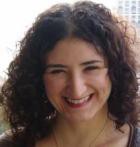
Funzione/Ruolo
Professoressa associata di Neurologia all'Università di Padova
Percorso professionale
Dopo la laurea in Medicina e Chirurgia all’Università Campus Bio-Medico di Roma, nel 2001, Florinda Ferreri si specializza in Neurologia nella stessa Università. Nel 2006 è Assistente per la Ricerca all’Istituto di Psichiatria sperimentale dell’Università del Wisconsin-USA e nel 2012 consegue il dottorato di ricerca in Neurofisiologia Clinica presso l’University of Eastern Finland. Negli ultimi dieci anni, oltre a lavorare come Neurologa Clinica al Policlinico Universitario Campus Biomedico di Roma, è attivamente impegnata nella ricerca neurofisiologica. Dal 2018 è Professoressa associata di Neurologia all'Università degl studi di Padova.
Risultati scientifici
L’attività di ricerca di Florinda Ferreri è prevalentemente focalizzata sullo studio non invasivo della fisiologia della corteccia cerebrale umana nell’individuo sano, nell’invecchiamento fisiologico e patologico, sullo studio della plasticità cerebrale, sullo sviluppo di metodiche di neuromodulazione non invasiva con potenzialità terapeutiche nelle demenze neurodegenerative e vascolari, e sulla ricerca di markers neurofisiologici per la diagnosi e la progressione della demenza di Alzheimer. Tra il 2007 ed il 2014 fa parte del gruppo di ricerca internazionale per la messa a punto di una protesi biomeccatronica di arto superiore a controllo neurale, partecipando nel 2008 e nel 2013 all’impianto della protesi su due pazienti amputati. È attivamente impegnata nella messa a punto di tecniche avanzate di registrazione multimodale dei segnali elettrici cerebrali con attuale focus sulla co-registrazione TMS-EEG, ovvero la combinazione della stimolazione magnetica transcraniale (Transcranial Magnetic Stimulation) con l’elettroecefalografia (Elettroencephalography).
Attività editoriali e pubblicazioni
E’ autrice di numerose pubblicazioni scientifiche internazionali tra cui:
[2016] Ferreri F, Vecchio F, Vollero L, Guerra A, Petrichella S, Ponzo D, Määtta S, Mervaala E, Könönen M, Ursini F, Pasqualetti P, Iannello G, Rossini PM, Di Lazzaro V. Sensorimotor cortex excitability and connectivity in Alzheimer’s disease: A TMS-EEG Co-registration study. Human Brain Mapping, 37[6):2083-96. doi: 10.1002/hbm.23158.
[2016] Guerra A, Pogosyan A, Nowak M, Tan H, Ferreri F, Di Lazzaro V, Brown P. Phase Dependency of the Human Primary Motor Cortex and Cholinergic Inhibition Cancelation During Beta tACS. Cerebral Cortex, 26(10):3977-90. doi: 10.1093/cercor/bhw245.
[2015] Rossini PM, Burke D, Chen R, Cohen LG, Daskalakis Z, Di Iorio R, Di Lazzaro V, Ferreri F, Fitzgerald PB, George MS, Hallett M, Lefaucheur JP, Langguth B, Matsumoto H, Miniussi C, Nitsche MA, Pascual-Leone A, Paulus W, Rossi S, Rothwell JC, Siebner HR, Ugawa Y, Walsh V, Ziemann U. Non-invasive electrical and magnetic stimulation of the brain, spinal cord, roots and peripheral nerves: Basic principles and procedures for routine clinical and research application.An updated report from an I.F.C.N. Committee. Clinical Neurophysiology Journal,. Feb 10. Review.
[2014] Di Pino G, Pellegrino G, Assenza G, Capone F, Ferreri F, Formica D, Ranieri F, Tombini M, Ziemann U, Rothwell JC, Di Lazzaro V. Modulation of brain plasticity in stroke: a novel model for neurorehabilitation. Nature Reviews Neurology, 10(10):597-608.
[2014] Ferreri F, Vecchio F, Ponzo D, Rossini PM. Time-varying coupling of EEG oscillations of primary motor cortex predicts excitability fluctuations as reflected by motor evoked potentials amplitude: an EEG-TMS study. Human Brain Mapping, 35(5):1969-80.
[2013] Ferreri F, Rossini PM. TMS and TMS-EEG techniques in the study of the excitability, connectivity, and plasticity of the human motor cortex. Reviews Neuroscience, 24(4):431-42. Review.
[2011] Ferreri F, Pasqualetti P, Määttä S, Ponzo D, Ferrarelli F, Tononi G, Mervaala E, Miniussi C and Rossini PM. Imaging human brain cortical effective connectivity during single and paired pulse transcranial magnetic stimulation. Neuroimage, 1;54(1):90-102.
[2006] Ferreri F. Curcio G. Patrizio P. De Gennaro L. Fini R. and Rossini PM. Mobile phone emission and human brain excitability. Annals of Neurology, 60(2):188-96.
[2006] Babiloni C, Benussi L, Binetti G, Cassetta E, Dal Forno G, Del Percio C, Ferreri F, Ferri R, Frisoni G, Guidoni R, Miniussi C, Rodriguez G, Romani GL, Squitti R, Ventriglia MC and Rossini PM. Apolipoprotein e and alpha brain rhythms in mild cognitive impairment: a multicentric eeg study. Annals of Neurology, 59(2):323-34.
[2003] Ferreri F, Pauri F, Pasqualetti P, Fini R, Dal Forno G, PM Rossini. Motor cortex excitability in Alzheimer Disease. Annals of Neurology, 53(1):102-8.
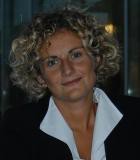
Funzione/Ruolo
Professoressa di Impianti Chimici presso il Politecnico di Torino; Waste, Water and Food Manager del Politecnico di Torino (Green Team)
Percorso professionale
Dopo la laurea in Ingegneria Chimica presso il Politecnico di Torino, prosegue gli studi attraverso un percorso di Dottorato di Ricerca in Ingegneria Chimica dove consegue il titolo presso la stessa Università. Vincitrice per concorso di un posto da Ricercatore Universitario in Ingegneria Chimica, nel settore scientifico disciplinare Impianti Chimici nel Novembre 2002, ottenendo la conferma. Dal Luglio 2010 al Marzo 2016 ha operato in veste di Professore Associato nel medesimo SSD. Nel Marzo 2016 diviene professoressa ordinaria di Impianti Chimici, dove nel Dipartimento di Scienza Applicata e Tecnologia del Politecnico di Torino è attualmente responsabile di un gruppo di ricerca costituito da 15 giovani ricercatori e dottorandi.
Afferente al Collegio di Ingegneria Chimica e dei Materiali ed al Collegio di Energetica, la sua attività di docenza è incentrata nei corsi di Impianti per l’industria Chimica e Alimentare e Processi di Reimpiego e Valorizzazione Energetica.
Risultati scientifici
I suoi interessi scientifici si concentrano prevalentemente sul trattamento catalitico delle emissioni Diesel (es.: filtrazione e combustione del particolato, l’ abbattimento di nanoparticelle, riduzione e adsorbimento di NOx, sviluppo di trappole catalitiche), sulla combustione catalitica del metano (es.: sviluppo marmitte catalitiche per auto a metano), sui filtri catalitici per il trattamento di fumi (es.: sistemi multifunzionali per l’abbattimento di ceneri volanti, di NOx e diossine da inceneritori) dove ha ottenuto diversi finanziamenti industriali (General Motors, Officine Metallurgiche Cornaglia, Petronas, Pirelli, ….), vinto progetti a bando nazionale e comunitario (PRIN, TOP-Expert, ADDnano, FlameSOFC, ...) e possiede 2 brevetti.
Tra le sue linnee di ricerca a carattere ambientale, di particolare rilievo sono i sistemi di ossidazione avanzata di inquinanti (es. reattori e elettrocatalizzatori per l’ossidazione elettrochimica di inquinanti organici biorefrattari, quali fenolo, antibiotici e altri farmaci, coloranti, …; bonifica terreni inquinati; superfici autopulenti). Tra le ricerche intraprese negli ultimi anni di particolare importanza sono i risultati ottenuti in merito all’analisi di piattaforme di trattamento di rifiuti , l’analisi di ciclo vita dei processi industriali in ottica di economia circolare, dove anche in ambito agroalimentare ha collaborato con industrie di riferimento nel settore (es. Waste Italia, Ferrero, Ago Renewables, ENI, Lavazza, AUSTEP, ecc.) ottenendo inoltre importanti finanziamenti strutturati come nel caso del progetto di piattaforma Innovativa Agro-Alimentare-ECOFOOD coordinata da Ferrero, Ricerca & Innovazione per il Miglioramento della Sostenibilità della Filiera Agro-Alimentare, di cui è Debora Fino è stata responsabile di tutte le azioni di ricerca del suo Ateneo.
Attualmente coordina la ricerca di 2 progetti Horizon 2020 finanziati dalla Comunità Europea CELBICON (Cost-effective CO2 conversion into chemicals via combination of Capture, Electrochemical and Biochemical Conversion technologies) e BIOROBURPLUS (Advanced direct biogas fuel processor for robust and cost-effective decentralised Hydrogen production).
Attività editoriali e pubblicazioni
È autrice di oltre 200 pubblicazioni scientifiche, tra cui:
(2018) Malavè A C L, Fino D, Gómez Camacho C E, Ruggeri B. Experimental tests on commercial Sweet Product Residue (SPR) as a suitable feed for anaerobic bioenergy (H2+ CH4) production, Waste Management, 71: 626-635.
(2017) Massa A, Hernandez Ribullen S P, Lamberti A, Galletti C, Russo N, Fino D. Electro-oxidation of phenol over electrodeposited MnOx nanostructures and the role of a TiO2 nanotubes interlayer. Applied Catalysis. B, Environmental, 203: 270-281.
(2016) Negro V, Mancini G, Ruggeri B, Fino D. Citrus waste as feedstock for bio-based products recovery: Review on limonene case study and energy valorization. Bioresource Technology, 214: 806-815.
(2015) Hussain M, Deorsola F A, Russo N, Fino D, Pirone R. Abatement of CH4 emitted by CNG vehicles using Pd-SBA-15 and Pd-KIT-6 catalysts, Fuel, 149: 2-7.
(2014) Mancini G, Viotti P, Luciano A, Fino D. On the ASR and ASR thermal residues characterization of full scale treatment plant, Waste Management, 34: 448-457.
(2013) Ruggeri B, Luongo Malavè A C, Bernardi M, Fino D. Energy efficacy used to score organic refuse pretreatment process for hydrogen anaerobic production, Waste Management, 33: 2225-2233.
(2012) Bensaid S, Deorsola F A, Fino D, Russo N. After-treatment of household wood-fired stove emissions: from catalyst formulation to full-scale system, Catalysis Today, 197: 76-89.
(2011) Palmisano P, Hernandez S P, Hussain M, Fino D, Russo N. A new concept for a self cleaning household oven, Chemical Engineering Journal, 176-177: 253-259.
(2010) Bensaid S, Russo N; Fino D. Power and Hydrogen Co-generation from Biogas, Energy & Fuels, 24: 4743-4747.
(2009) Rutigliano L, Fino D, Saracco G, Specchia V, Spinelli P, Grizzaffi L. Electrochemical Oxidation process for water condensates recycling in a shuttle orbiter, Journal Of Applied Electrochemistry, 39 (11): 2239-2249.
(2008) Rutigliano L, Fino D, Saracco G, Specchia V, Spinelli P. Electrokinetic remediation of soils contaminated with heavy metals, Journal Of Applied Electrochemistry, 38: 1035-1041.
(2007) Fino D. Diesel Emission Control:Catalytic Filters for Particulate Removal, Science And Technology Of Advanced Materials, 8 (1-2): 93-100.
(2006) Cauda E, Hernandez S, Fino D, Saracco G, Specchia V. PM0.1 Emissions during Diesel Trap Regeneration, Environmental Science And Technology, 40: 5532-5537.
(2005) Fino D, Carlesi J C, Saracco G, Specchia V, Spinelli P. Deactivation and regeneration of Pt anodes for the electro-oxidation of phenol, Journal Of Applied Electrochemistry, 35(4): 405-411.
(2004) Fino D, Russo N, Saracco G, Specchia V. A multifunctional filter for the simultaneous removal of fly-ash and NOx from incinerator flue gases, Chemical Engineering Science, 59 (22-23): 5329-5336.
(2003) Fino D, Russo N, Saracco G, Specchia V. The role of suprafacial oxygen in some perovskites for the catalytic combustion of soot, Journal Of Catalysis, 217: 367-375.
(2002) Fino D, Saracco G, Specchia V. Filtration and catalytic abatement of diesel particulate from stationary sources, Chemical Engineering Science, 57(22-23): 4955-4966.
Riconoscimenti e premi
Vincitrice nel Novembre del 2004 del “PREMIO ITALGAS – DEBUTTO NELLA RICERCA” (XVII edizione) per la sua tesi di dottorato (Combustione catalitica del particolato Diesel).
Nel Febbraio del 2007 il suo articolo”Innovative means for the catalytic regeneration of particulate traps for diesel exhaust cleaning”, Chem. Eng. Sci., 58 (3-6)(2003) 951-958, è stato premiato dalla Elsevier Science Publisher come uno degli articoli più citati della rivista Chemical Engineering Science nel corso del quadriennio 2003 - 2006.
Vincitrice nel Dicembre 2007 del “PREMIO SAPIO JUNIOR per la RICERCA ITALIANA” (IX Edizione) per i risultati ottenuti nella ricerca “Nanoparticelle secondarie da filtri per la rimozione del particolato Diesel ed in altri contesti applicativi”.
Ottobre 2009 - l'articolo "Biogas Purification for MCFCs Applications" è stato premiato tra i migliori 5 dallo Scientific Organizing Committee del "HYSYDAYS 2009 - 3rd World Congress of Young Scientists on Hydrogen Energy Systems". L'articolo è stato pubblicato su International Journal of Hydrogen Energy.
Giugno 2010 - Premio ITWIIN Associazione Italiana Donne Inventrici ed Innovatrici, vincitrice premio speciale per la comunicazione DISTI (distretto dell'Informazione Scientifica e Tecnologica per l'innovazione con sede a Bari) in considerazione dell'efficacia nella presentazione di potenziali ricadute sociali ed economiche di progetti scientifici.
Nel settembre 2011 la European Union Women Inventors & Innovators Awards le ha assegnato una menzione speciale in considerazione dell'efficacia nella presentazione di potenziali ricadute sociali ed economiche delle sue ricerche scientifiche da parte della giuria di esperti internazionali, Reykjavik (Islanda).
Nel Febbraio del 2013 l’articolo “M. Hussain, R. Ceccarelli, D.L. Marchisio, D. Fino, N. Russo, F. Geobaldo, Synthesis, Characterization and Photocatalytic Application of Novel TiO2 Nanoparticles” su Chemical Engineering Journal 157, 45-51 del 2010 è stato premiato come ottavo articolo più citato della rivista Chemical Engineering Journal nel corso del periodo 10/2009 – 9/2010.
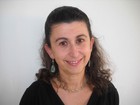
Funzione/Ruolo
Professoressa ordinaria di Misure Elettriche ed Elettroniche all’Università degli Studi di Brescia, Presidentessa del Consiglio di Corso di Studi Aggregato in Elettronica e Telecomunicazioni del Dipartimento di Ingegneria dell’Informazione, Coordinatrice del Collegio di Dottorato in Technology for Health.
Percorso professionale
Dopo la laurea in Fisica all’Università di Roma La Sapienza nel 1985, lavora per oltre 10 anni presso industrie che operano negli impianti industriali e nell’energia, tra le quali Ansaldo Sistemi Industriali a Milano, dove è responsabile del R&D della sezione di azionamenti a controllo digitale. Alla fine del 1995 entra come ricercatrice di Elettronica all’Università degli Studi di Brescia, dove diventa professoressa Associata di Misure Elettriche ed Elettroniche nel 2002 e Professoressa Ordinaria nel 2016. Nel 2004 crea il Centro di competenza Italiano su Profibus e Profinet, ad oggi operativo. Dal 2013 al 2020 è nel consiglio di Amministrazione di CSMT, il principale centro per il trasferimento tecnologico di Brescia. Dal 2011 fa parte del Consiglio scientifico di SPS, la fiera sull’automazione Industriale. E’ membro dell’ADCOM dell’IEEE Instrumentation and Measurement Society dal 2013 al 2016 e nel 2015 è Vicepresidente per le Conferenze. Dal 2018 è Presidente del Consiglio di Corso di Studi Aggregato in Elettronica e Telecomunicazioni del Dipartimento di Ingegneria dell’Informazione. Nel 2020 viene eletta Coordinatrice del Collegio di Dottorato in Technology for Health.
Risultati scientifici
Il profilo scientifico di Alessandra Flammini è molteplice, avendo iniziato l’attività di ricerca nell’ambito della ricerca industriale con riferimento agli azionamenti a controllo digitale ed essendo poi passata alla ricerca scientifica in ambito prima dell’elettronica dei sistemi embedded, poi dei sensori “smart” e infine dei sistemi distribuiti di misura per l’industria, le smart grid e lo smart living.
Più precisamente, l’attività di ricerca scientifica si è concentrata sin dall’inizio sui circuiti di interfaccia per sensori e sui sensori “smart”, ossia sulle tecnologie che permettono ai sensori di comunicare le proprie informazioni di misura in architetture IoT, fondamentali nei sistemi cosiddetti “smart”, che spaziano dalle smart grid allo smart living, ambiti nei quali Alessandra Flammini è stata responsabile di progetti interdipartimentali di ampio respiro, con budget superiore a 5M€, dal 2013 ad oggi. Per quanto riguarda le tecnologie wireless per l’IoT, sono di assoluto rilievo i suoi studi sperimentali sulla tecnologia LoRaWAN, che ne hanno permesso l’uso in applicazioni distribuite di misura per l’industria, come testimonia l’elevato numero di citazioni delle sue pubblicazioni in merito. Alessandra Flammini è anche una figura di grande importanza per il territorio bresciano. Oltre ad aver fondato un gruppo di ricerca che consta di tre professori ordinari, 2 professori associati e 2 ricercatori e ad aver formulato nuove proposte didattiche sui temi dell’IoT e delle tecnologie per l’impresa digitale, Alessandra Flammini ha anche sviluppato la prima Real Time Ethernet italiana, brevettata e commercializzata da Gefran come GDNET, e risulta coautrice di altri brevetti nazionali e internazionali che hanno avuto valorizzazioni commerciali di rilievo.
Attività editoriali e pubblicazioni
È co-autrice di oltre 300 pubblicazioni scientifiche internazionali, tra cui:
[2022] P. Ferrari, E. Sisinni, P. Bellagente, D. Fernandes Carvalho, A. Depari, A. Flammini, M. Pasetti, S. Rinaldi, I. Silva, "On the use of LoRaWAN and cloud platforms for diversification of mobility-as-a-service infrastructure in smart city scenarios", IEEE Trans. Instrumentation and Measurement, Vol., ISSN 0018-9456.
[2020] E. Sisinni, P. Ferrari, D. Fernandes Carvalho, S. Rinaldi, M. Pasetti, A. Flammini, A. Depari, "LoRaWAN Range Extender for Industrial IoT", IEEE Trans. Industrial Informatics, August, 2020, Vol. 16, N. 9, pp. 5607-5616, ISSN 1551-3203, DOI 10.1109/TII.2019.2958620.
[2018] P. Ferrari, A. Flammini, E. Sisinni, S. Rinaldi, D. Brandao, M. Rocha, "Delay Estimation of Industrial IoT Applications Based on Messaging Protocols", IEEE Trans. Instrumentation and Measurement, September, 2018, Vol. 67, N. 9, pp. 2188-2199, ISSN 0018-9456, DOI 10.1109/TIM.2018.2813798.
[2017] M. Rizzi, P. Ferrari, E. Sisinni, A. Flammini, "Evaluation of the IoT LoRaWAN Solution for Distributed Measurement Applications", IEEE Trans. Instrumentation and Measurement, December, 2017, Vol. 66, N. 12, pp. 3340-3349, ISSN 0018-9456, DOI 10.1109/TIM.2017.2746378.
[2016] E. Sisinni, A. Depari, A. Flammini, "Design and implementation of a wireless sensor network for temperature sensing in hostile environments", Sensors and Actuators A: Physical, January, 2016, Vol. 237, pp. 47-55, ISSN 0924-4247, DOI 10.1016/j.sna.2015.11.012.
[2011] C. M. De Dominicis, P. Ferrari, A. Flammini, S. Rinaldi, M. Quarantelli, "On the Use of IEEE 1588 in Existing IEC 61850-Based SASs: Current Behavior and Future Challenges", IEEE Trans. Instrumentation and Measurement, September, 2011, Vol. 60, N. 9, pp. 3070-3081, ISSN 0018-9456, DOI 10.1109/TIM.2011.2158159.
[2009] A. Flammini, D. Marioli, E. Sisinni, A. Taroni, "Design and Implementation of a Wireless Fieldbus for Plastic Machineries", IEEE Trans. Industrial Electronics, March, 2009, Vol. 56, N. 3, pp. 747-755, ISSN 0278-0046, DOI 10.1109/TIE.2008.2011602.
[2009] P. Ferrari, A. Flammini, D. Marioli, E. Sisinni, A. Taroni, "Wired and wireless sensor networks for industrial applications", Microelectronics Journal, September, 2009, Vol. 40, N. 9, pp. 1322-1336, ISSN 0026-2692, DOI 10.1016/j.mejo.2008.08.012.
[2008] P. Ferrari, A. Flammini, D. Marioli, A. Taroni, "A Distributed Instrument for Performance Analysis of Real-Time Ethernet Networks", IEEE Trans. Industrial Informatics, February, 2008, Vol. 4, N. 1, pp. 16-25, ISSN 1551-3203, DOI 10.1109/TII.2008.919016.
[2004] A. Flammini, D. Marioli, A. Taroni, "A low-cost interface to high-value resistive sensors varying over a wide range", IEEE Trans. Instrumentation and Measurement, August, 2004, Vol. 53, N. 4, pp. 1052-1056, ISSN 0018-9456, DOI 10.1109/TIM.2004.831500.
[2002] A. Flammini, P. Ferrari, E. Sisinni, D. Marioli, A. Taroni, "Sensor interfaces: from field-bus to Ethernet and Internet", Sensors and Actuators A: Physical, September, 2002, Vol. 101, N. 1-2, pp. 194-202, ISSN 0924-4247 , DOI 10.1016/S0924-4247(02)00201-7.
[1999] A. Flammini, D. Marioli, A. Taroni, "Application of an optimal look-up table to sensor data processing", IEEE Trans.Instrumentation and Measurement, August, 1999, Vol. 48, N. 4, pp. 813-816, ISSN 0018-9456, DOI 10.1109/19.779179.
Riconoscimenti e premi
E’ stata coautrice di lavori premiati a conferenza internazionale (ETFA2008, ISPCS2010).
Senior Member IEEE dal 2010, General Chair o Technical Chair di numerose conferenze internazionali, è stata eletta membro dell’ADCOM dell’IEEE Instrumentation and Measurement Society dal 2013 al 2016 e nel 2015 è stata Vicepresidente per le Conferenze.
Member dello Study Group IEEE1588.
Top Italian Scientists nella categoria Ingegneria elettrica.

Funzione/Ruolo
Già professoressa ordinaria di Ecologia all'Università di Trieste
Percorso professionale
Dopo la laurea in Scienze Biologiche presso l'Università di Trieste nel 1974, prosegue la sua formazione come borsista in Ecologia nella stessa università fino al 1981. Da quell'anno è ricercatrice, nel 1992 diventa professoressa associata e Responsabile del Laboratorio di Biologia Marina dell'Università di Trieste. Dal 2008 è professoressa ordinaria di Ecologia.
Risultati scientifici
I principali interessi di ricerca di Serena Fonda Umani riguardano la dinamica dell'ecosistema marino, i flussi di carbonio, lo studio dell'ecologia del Plancton e l'ecologia marina microbica. Per poter condurre i suoi studi si è recata in varie zone del Mar Mediterraneo, nello stretto di Magellano (Cile), nella baia di Chesapeake (Usa) e nel Mare di Ross (Antartide). Uno dei principali obiettivi della ricerca di Serena Fonda Umani è la stima dei flussi di carbonio all'interno della catena alimentare pelagico-microbica (dai virus fino alle meduse), per verificare se vi è una selezione esercitata dai predatori sui procarioti (primi organismi cellulari comparsi sulla terra, caratterizzati dall'assenza di un nucleo ben definito). Questo è possibile attraverso l'approccio metagenomico (lo studio delle comunità microbiche direttamente nel loro ambiente naturale) che Serena Fonda Umani e i colleghi utilizzano.
Attività editoriali e pubblicazioni
Autrice di più di oltre 200 pubblicazioni scientifiche nazionali ed internazionali fra cui:
(2016) Zoccarato L, Celussi M, Pallavicini A, Fonda Umani S. Aurelia auritaephyrae reshape a coastal microbial community. c 7:749.
(2015) Caruso G, La Ferla R, Leonardi M, Zaccone R, Azzaro F, Azzaro M, Decembrini F, Maimone G, Monticelli L, Caroppo C, Cavallo RA, Acquaviva MI, Narracci M, Stabili L, Marino G, Petochi T, De Angelis R, Zoppini A, Fonda Umani S, Del Negro P, Todorova NH, Karamfilov VK, Corinaldesi C, Rastelli E, Cappello S, Latini M, Danovaro R. Microbial assemblages for environmental quality assessment: knowledge, gaps and usefulness in the European Marine Strategy Framework Directive. Critical Reviews in Microbiology
(2013) Di Poi E, Blason C, Corinaldesi, Danovaro R, Malisana E, Fonda Umani S. Structure and interactions within the pelagic microbial food web(from viruses to microplankton)across environmental gradients in the Mediterranean Sea. Global Biogeochemical Cycles, 27: 1034-1045.
(2012) Giani M, Djakovac T, Degobbis D, Cozzi S, Solidoro C, Fonda Umani S. Recent changes in the marine ecosystems of the northern Adriatic Sea. Estuarines, Coastal and Shelf Sciences, 115:1-13.
(2012) Fonda Umani S, Malfatti F, Del Negro P. Carbon fluxes in the pelagic ecosystem of the Gulf of Trieste (Northern Adriatic Sea). Estuarines, Coastal and Shelf Sciences, 115:170-186.
(2010) Fonda Umani S, Malisana E, Focaracci F, Magagnini M, Corinaldesi C, Danovaro R. Disentangling the impact of viruses and nanoflagellates on prokaryotes in bathypelagic waters of the Mediterranean Sea. Marine Ecology Progress Series, 418:73-85.
(2010) Mozetič P, Solidoro C, Cossarini G, Socal G, Precali R, Francé J, Bianchi F, Smodlaka N, De Vittor C, Fonda Umani S. Recent trends towards oligotrophication of the northern Adriatic: evidence from chlorophyll a time series. Estuaries and Coasts, 33:362-375.
(2009) Danovaro R, Fonda Umani S, Pusceddu A. Climate Change and the potential spreading of marine mucilage and microbial pathogens in the Mediterranean Sea. PLoS ONE, 4(9):e7006.
(2007) Fonda Umani S, Del Negro P, Larato C, De Vittor C, Cabrini M, Celio M, Falconi C, Tamberlich F, Azam F. Major inter-annual variations in microbial dynamics in the Gulf of Trieste (Northern Adriatic Sea) and their ecosystem implications. Aquatic Microbial Ecology Journal, 46:163-175.
(2005) Fonda Umani S, Milani L, Borme D, de Olazabal A, Parlato S, Precali R, Kraus R, Lucic D, Njire J, Totti C, Romagnoli T, Pompei M, Cangini M. Inter-annual variations of planktonic food webs in the northern Adriatic Sea. Science of the Total Environment, 353(1-3):218-231.
Riconoscimenti e premi
Serena Fonda Umani è membro di numerose società e comitati scientifici fra cui il Comitato Scientifico del Parco del Mare (dal 2005) e della Società Italiana di Ecologia (SItE) di cui nel 2012 è stata eletta Presidente.

Funzione/Ruolo
IMPROVEMENT & SAVING Project Leader. EU Lead Auditor Conformity Assessment CE marking
Percorso professionale
Dopo aver conseguito la laurea magistrale in Chimica presso l’Università di Firenze (1999) e una borsa di studio presso il Consorzio Interuniversitario per la ricerca sulle Metallo-Proteine dell’Università di Firenze, matura esperienze professionali in vari ambiti distinguendosi per lo studio e l’ottimizzazione di processi aziendali e metodi analitici in ambito farmaceutico e ambientale.
Dal 2000 al 2017 è Consulente Tecnica di Ufficio del Tribunale di Firenze.
Dal 2003 a maggio 2008, lavora presso ALPHA ECOLOGIA Srl facendo conseguire all’azienda l’accreditamento ACCREDIA, ottimizzando i processi aziendali e le attività del laboratorio chimico.
Nel 2006 consegue in CSQA la certificazione di Auditor Interno (ISO19011) per i Sistemi di Gestione per la Qualità.
Da maggio 2008 a febbraio 2016 lavora presso Biochemielab Srl, ricoprendo dapprima il ruolo di Responsabile di Laboratorio implementando il Quality Management System con l’approccio per processi, il sistema QA/QC EPA Standard Quality System, incrementando l’accreditamento ACCREDIA ISO17025, digitalizzazione delle attività di laboratorio; successivamente ricopre il ruolo di Quality Assurance Manager occupandosi del sistema integrato qualità-ambiente-sicurezza, certificazioni ISO9001, ISO14001, accreditamento ACCREDIA ISO17025, ottimizzazione dei processi aziendali.
Dal 2016 al 2022 ricopre il ruolo di Quality Assurance Manager in SAGEA Centro di Saggio Srl, International Contract Research Organisation nel settore agroalimentare, occupandosi di certificazioni GLP e GEP come auditor interno. Ha implementato nell’azienda il Quality Management System ISO9001, l’approccio per processi del modello giapponese Total Quality.
Nel 2022 diventa IMPROVEMENT & SAVING Project Leader, a capo di alcuni progetti di standardizzazione per i laboratori europei, progetti commissionati dalla Commissione Europea DG-GROW con il CEN di Bruxelles, e EU Lead Auditor presso un organismo di notifica/certificazione olandese EFCI Register (NB2832) autorizzato dalla Commissione Europea per la valutazione di conformità e marcatura CE di prodotti per il mercato europeo.
Dal 2016 è Presidente nazionale del Settore Alimentare di AICQ (Associazione Italiana Cultura Qualità) per la diffusione della qualità nel settore agroalimentare e vice-presidente del Comitato Laboratori di prova e di taratura di AICQ per la diffusione della qualità nei laboratori di prova.
Dal 2019 è Green Belt Six Sigma ed è consulente internazionale in ambito TQM e Lean Six Sigma presso COMATCH GmbH con sede a Berlino.
Risultati scientifici
Dal 2000 è esperta di implementazione nelle aziende del modello giapponese del Total Quality Management (Toyota Way), del miglioramento continuo Kaizen, di analisi di processi aziendali e progetti Lean Six Sigma,di implementazione aziendale di MonozukuriWG.
Ha partecipato a numerosi consegni come relatrice e maturato ampie esperienze di formazione.
In particolare, dal 2016 a oggi l’attività in AICQ le ha permesso di organizzare Corsi di formazione e Convegni nazionali con Istituto Superiore di Sanità, ACCREDIA, AICQ-SICEV.
Dal 2018 è membro UNI/CT 003 "Commissione Agroalimentare” con diritto di voto, membro UNI/CT003/GL21 "Biostimolanti delle piante" con diritto di voto, membro UNI/CT406 “Fertilizzanti” con diritto di voto, membro UNI/CT003/GL23 “Autenticità degli alimenti” con diritto di voto.
Dal 2019 è una tra i responsabili del Progetto di Formazione Europea ENVIRECA-ERASMUS+ Commissione Europea, AICQ, DU, FLA, HRC, CSM e EXELIA “Cooperation for innovation and the exchange of good practices, Strategic Partnerships for vocational education and training” per il settore HORECA.
Attività editoriali e pubblicazioni
[2017] Gallerini S., Le GLP/BPL, il Kaizen e il Monozukuri, Magazine Qualità AICQ gen-feb
[2016] Gallerini S., Le GLP/BPL, il Kaizen e il Monozukuri, AICQ QualitàOnLine, novembre
[2007] Gallerini S., Salvini A., Frediani P., Homogeneous hydrogenation of ketones in the presence of H2Ru(CO)2(PPh3)2, Dalton Transaction, Issue 39
[2001], Gallerini S., Total Quality Management nel passaggio generazionale delle imprese toscane, ASFOR Toscana
[2000] Gallerini S., Salvini A., Frediani P., Homogeneous hydrogenation of ketones in the presence of H2Ru(CO)2(PPh3)2, Applied Organometallic Chemistry, 14: 570-580
[1999] Gallerini S., Salvini A., Frediani P., Homogeneous hydrogenation, XIII FECHEM International Conference on Organometallic Chemistry Book of Abstract, Lisbon
Riconoscimenti e premi
Nel 2016 riceve il Sagea Innovation Award, premio per l’implementazione del Total Quality Management finalizzato alla ricerca del miglioramento continuo Kaizen
Nel 2017 riceve il Premio Comitati e Settori AICQ, come presidente del Settore Alimentare per aver partecipato attivamente alla diffusione della Cultura della Qualità in Italia, per eventi formativi nazionali organizzati con successo di platea e di contenuti sia per articoli pubblicati sulle riviste Magazine Qualità e Qualità On Line.

Funzione/Ruolo
Ricercatrice associata all'Istituto Nazionale di Oceanografia e di Geofisica Sperimentale (OGS) di Trieste
Percorso professionale
Dopo la laurea in Scienze Biologiche all'Università di Siena nel 1977, dal 1977-1979 svolge un tirocinio come allieva laureata interna presso l'Istituto di Anatomia Comparata (Laboratorio di Idrobiologia) dell'Università di Siena. Dal 1980 al 1982 è socia della Cooperativa di Biologia Marina, Idrobiologia e Acquacoltura, "Coipa" (Roma). L'anno successivo è ricercatrice alla Stazione Zoologica Anton Dohrn di Napoli, presso il Laboratorio di Ecologia del Benthos con sede a Villa Dohrn, Ischia. Nel 1986 svolge un post-doc alla School of Oceanography dell'Università di Washington e ai Friday Harbor Laboratories. Dal 1992 è prima ricercatrice della Stazione Zoologica Anton Dohrn. Nel 2014 consegue l'abilitazione scientifica nazionale per Ecologia (professoressa ordinaria) e Zoologia (professoressa associata). Dal febbraio 2021 è ricercatrice associata all'Istituto Nazionale di Oceanografia e di Geofisica Sperimentale (OGS) di Trieste.
Risultati scientifici
Le ricerche di Maria Cristina Gambi sono finalizzate allo studio della diversità e della biologia evolutiva ed ecologia dei policheti (uno dei gruppi più abbondanti e diversificati degli habitat marini che comprendono circa 13mila specie) e del loro ruolo come bioindicatori e nel funzionamento dei biotopi costieri. In questo ambito vengono anche studiate specie aliene di policheti, il loro ciclo vitale e la dinamica di colonizzazione del Mediterraneo. L'identificazione di specie chiave di policheti resistenti a diversi fattori di stress collegati al cambiamento climatico, in particolare l'acidificazione marina, permette di utilizzare queste specie come modelli per lo studio di acclimatazione ed adattamento alle condizioni locali dell'ambiente. L'attività sperimentale su policheti e zoobenthos è svolta sia in laboratorio che in situ, utilizzando alcuni sistemi sommersi di origine vulcanica come laboratori naturali, in quanto naturalmente acidificati e senza variazioni di temperatura o salinità. Nell'ambito delle sue ricerche Maria Cristina Gambi ha descritto 16 specie di policheti nuove per la scienza e un nuovo e peculiare gruppo di detritivori (organismi consumatori di detriti) nel sistema Posidonia oceanica del Mediterraneo e Thalassia testudinum dei Caraibi. Ha rilevato e studiato per la prima volta l'effetto delle heat-waves (ondate di calore) nel Golfo di Napoli e ha identificato specie chiave di policheti come possibili modelli per lo studio del cambiamento climatico. Ha inoltre descritto comunità bentoniche peculiari (organismi acquatici che vivono in stretto contatto con il fondo o fissati a un substrato solido) nei fondali costieri di Baia Terra Nova (Antartide).
Attività editoriali e pubblicazioni
Dal 2005 al 2013 è Editor della rivista Marine Ecology e dal 2014 a oggi è Associate Editor della rivista International Journal Marine Ecology
È autrice di numerose pubblicazioni scientifiche, compresi alcuni libri, e ha curato vari numeri speciali di Marine Ecology. Le pubblicazioni più recenti e rilevanti sono elencate di seguito:
(2018) Teixido N, Gambi MC, Parravicini V, Kroeker K, Micheli F, Villeger S, Ballesteros E. Functional biodiversity loss along natural CO2 gradients. Nature Communications, 9(1). DOI.10.1038/s41467-018-07592-1.
(2018) Foo SA, Byrne M, Ricevuto E, Gambi MC. The carbon dioxide vents of Ischia, Italy, a natural laboratory to assess impacts of ocean acidification on marine ecosystems: an overview of research and comparisons with other vent systems. Oceanography and Marine Biology: An Annual Review, 56, 237-310
(2017) Vizzini S, Martínez-Crego B, Andolina C, Massa-Gallucci A, Connell SD, Gambi MC. Ocean acidification as a driver of community simplification via the collapse of higher-order and rise of lower-order consumers. Scientific Report 7, 4018.
(2013) Kroeker K, Micheli F, Gambi MC. Ocean acidification causes ecosystem shifts via altered competitive interactions. Nature Climate Change, 3, 156-159.
(2013) Kroeker KJ, Gambi MC, Micheli F. Altered recovery dynamics result in homogenous assemblages in an acidified ocean. Proceedings of the National Academy of Sciences, USA (PNAS), 110 (31): 12721-12726.
(2011) Kroeker KJ, Micheli F, Gambi MC, Martz TR. Divergent ecosystem responses within a benthic marine community to ocean acidification. Proceedings of the National Academy of Sciences USA (PNAS), 108 (35), 14515-14520.
Riconoscimenti e premi
Fa parte della Società Italiana di Biologia Marina (S.I.B.M.), dell'Unione Zoologica Italiana (U.Z.I.), dell'Associazione Italiana di Oceanologia e Limnologia (A.I.O.L.), della Società Italiana di Ecologia (S.It.E.).
Inoltre è componente associata del gruppo GOSSOE (Group of Specialists of Southern Ocean Ecology) dello S.C.A.R.-S.C.O.R.
Dal 1992 al 2001 è stata rappresentante nazionale del Comitato Direttivo dell'International Polychaete Association (I.P.A.) (1992-2001) e dal 2001 al 2004 ne è stata Presidente.

Funzione/Ruolo
Direttrice dell’unità "Molecular and Pharmaco-Epidemiology" presso il dipartimento di Oncologia Sperimentale dell’Istituto Europeo di Oncologia di Milano (IEO). Docente dell’European School of Molecular Medicine di Milano (SEMM). Professoressa a contratto di statistica medica presso l'Università Statale di Milano
Percorso professionale
Si laurea in Statistica presso l'Università di Bologna nel 1993, proseguendo la sua formazione attraverso una specializzazione in Biometria nel 1995 all'Università di Reading (UK). Entra a far parte dello IEO di Milano già dal 1996, quando l'Istituto ha appena 2 anni di attività alle spalle; al suo interno svolge costantemente attività di ricerca. Nel 2004 consegue un dottorato di ricerca in Epidemiologia all'Università di Birmingham (Public Health). Dal 2009 è Vice Direttrice della divisione di Biostatistica e Epidemiologia dello IEO di Milano e nel 2014 diventa consulente di Statistica per il Comitato etico di Multimedica a Milano. Nel 2016 diventa professoressa a contratto di statistica media presso l'Università Statale di Milano e nel 2017 ottiene l’abilitazione scientifica nazionale alle funzioni di professoressa universitaria in statistica medica. Dal 2018 è docente all’European School of Molecular Medicine di Milano (SEMM) e Group leader dell’unità "Molecular and Pharmaco-Epidemiology" presso il dipartimento di Oncologia Sperimentale dell’Istituto Europeo di Oncologia di Milano (IEO).
Risultati scientifici
Sara Gandini fornisce consulenza costante in un'ampia gamma di settori, tra cui analisi statistiche di esperimenti e studi clinici, disegni di studio e sviluppo dei protocolli. Collabora con ricercatori in tutto il mondo e ha condotto ricerche approfondite sull'epidemiologia del cancro, comprese le meta-analisi e pooled-analisi, con l'obiettivo di una migliore comprensione dell'eziologia del cancro. Negli ultimi anni il suo interesse principale si è concentrato sullo studio del melanoma e dei relativi fattori di rischio e i risutlati delle sue ricerche che ha portato a cambiare la classificazione dell'Agenzia Internazionale per la Ricerca sul Cancro di Lione definendo cancerogena l'esposizione a tutto lo spettro degli ultravioletti, inclusi i lettini solari. Sara Gandini è così giunta ad analizzare il ruolo della vitamina D all'interno del complesso sistema del corpo umano, scoprendo un'associazione consistente fra scarsa presenza di vitamina D e propensione allo sviluppo del cancro al colon. E' Principal Investigator scientifica di due studi randomizzati che ha disegnato e promosso per valutare l'effetto della vitamina D sulla prognosi dei pazienti affetti da melanoma e tumore al colon e sull’interazione tra dieta e microbiota intestinale.
In generale, crede nella ricerca indipendente e nella sua carriera si è occupata, oltre che di prevenzione primaria e studio di biomarcatori, anche di Drug repositioning, il riutilizzo in ambito oncologico del principio attivo di farmaci in commercio (Vitamin D, Metformina, Betabloccanti...), su cui non ci sono interessi economici ed investimenti da parte delle aziende farmaceutiche
Attività editoriali e pubblicazioni
Sara Gandini è autrice di più di 200 articoli su riviste nazionali ed internazionali ad alto impatto, fra cui:
(2019) Thomas AM, Manghi P, Asnicar F, Pasolli E, Armanini F, Zolfo M, Beghini F, Manara S, Karcher N, Pozzi C, Gandini S, Serrano D, Tarallo S, Francavilla A, Gallo G, Trompetto M, Ferrero G, Mizutani S, Shiroma H, Shiba S, Shibata T, Yachida S, Yamada T, Wirbel J, Schrotz-King P, Ulrich CM, Brenner H, Arumugam M, Bork P, Zeller G, Cordero F, Dias-Neto E, Setubal JC, Tett A, Pardini B, Rescigno M, Waldron L, Naccarati A, Segata N. Metagenomic analysis of colorectal cancer datasets identifies cross-cohort microbial diagnostic signatures and a link with choline degradation.Nat Med. 25(4):667-678.
(2019) Wirbel J, Pyl PT, Kartal E, Zych K, Kashani A, Milanese A, Fleck JS, Voigt AY, Palleja A, Ponnudurai R, Sunagawa S, Coelho LP, Schrotz-King P, Vogtmann E, Habermann N, Niméus E, Thomas AM, Manghi P, Gandini S, Serrano D, Mizutani S, Shiroma H, Shiba S, Shibata T, Yachida S, Yamada T, Waldron L, Naccarati A, Segata N, Sinha R, Ulrich CM, Brenner H, Arumugam M, Bork P, Zeller G. Meta-analysis of fecal metagenomes reveals global microbial signatures that are specific for colorectal cancer. Nat Med. 25(4):679-689.
(2016) Le CP, Nowell CJ, Kim-Fuchs C, Botteri E, Hiller JG, Ismail H, Pimentel MA, Chai MG, Karnezis T, Rotmensz N, Renne G, Gandini S, et al. Chronic stress in mice remodels lymph vasculature to promote tumour cell dissemination. Nature Communications, 7:10634.
(2014) Gandini S, Puntoni M, Heckman-Stoddard BM, Dunn BK, Ford L, DeCensi A, Szabo E. Metformin and cancer risk and mortality: a systematic review and meta-analysis taking into account biases and confounders. Cancer Prevention Research (Philadelphia), 7(9):867-85.
(2012) Boniol M, Autier P, Boyle P, Gandini S. Cutaneous melanoma attributable to sunbed use: systematic review and meta-analysis. British Medical Journal, 345:e4757.
(2012) Zittermann A, Iodice S, Pilz S, Grant WB, Bagnardi V, Gandini S. Vitamin D deficiency and mortality risk in the general population: a meta-analysis of prospective cohort studies.The American Journal of Clinical Nutrition, 95(1):91-100.
(2011) Gandini S, Boniol M, Haukka J, et al. Meta-analysis of observational studies of serum 25-hydroxyvitamin D levels and colorectal, breast and prostate cancer and colorectal adenoma. International Journal of Cancer, 128(6):1414-24.
(2010) DeCensi A, Puntoni M, Goodwin P, Cazzaniga M, Gennari A, Bonanni B, Gandini S. Metformin and Cancer Risk in Diabetic Patients: A Systematic Review and Meta-analysis. Cancer Prevention Research (Philadelphia), 3(11):1451-61.
(2007) Autier P, Gandini S. Vitamin D suppl. and total mortality - A meta-analysis of randomized controlled trials. Archives of Internal Medicine, 167(16):1730-7.
(2005) Gandini S, et al. Meta-analysis of risk factors for cutaneous melanoma: II. Sun exposure. European Journal of Cancer, 41(1):45-60.
(2005) Gandini S, et al. Meta-analysis of risk factors for cutaneous melanoma: I. Common and atypical naevi. European Journal of Cancer, 41(1):28-44.
(2005) Gandini S, et al. Meta-analysis of risk factors for cutaneous melanoma: III. Family history, actinic damage and phenotypic factors. European Journal of Cancer, 41(14):2040-59.
Riconoscimenti e premi
Nel 2008 vince il premio Bruno Martinetto per le ricerche sulla prevenzione dei tumori.
Nel 2014 viene eletta all'unanimità Presidente della società scientifica indipendente EuroSkin che si occupa di prevenzione primaria.
Nel 2019 viene coopatata nel Top Italian Women Scientist - Club delle Scienziate di Onda, Osservatorio nazionale sulla salute delle donne e di genere.
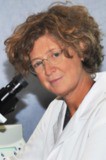
Funzione/Ruolo
Responsabile del Laboratorio di Immunopatologia Sperimentale presso Humanitas Research Hospital e Professoressa associata di Patologia Clinica alla Humanitas University di Milano
Percorso professionale
Dopo la laurea in Medicina Veterinaria conseguita presso l'Università degli Studi di Milano nel 1990, si è specializzata in immunopatologia lavorando presso laboratori italiani ed esteri, come il Laboratorio di Immunologia dell'Istituto di Ricerche Farmacologiche "Mario Negri" dal 1990 al 2005, e il dipartimento di Biologia Molecolare del Centro di Studi Nucleari di Grenoble per il biennio 1994-1995. E' attualmente responsabile del Laboratorio di Immunopatologia Sperimentale presso l'Istituto Clinico Humanitas. I suoi interessi riguardano le cellule del sistema immunitario e la caratterizzazione della loro attività biologica, l'immunità innata verso agenti patogeni e la regolazione dei processi infiammatori.
Risultati scientifici
Il gruppo di ricerca di cui Cecilia Garlanda è responsabile si è focalizzato sullo studio della molecola PTX3, molecola dell'immunità innata coinvolta nella resistenza a infezioni fungine, batteriche e virali, e nella regolazione dell'infiammazione. Recentemente il gruppo ha messo in evidenza che PTX3 crea un ambiente ostile alla crescita del tumore, regolando l'infiammazione che si genera nel microambiente tumorale. Cecilia Garlanda si impegna inoltre in studi pre-clinici e in studi finalizzati alla possibilità di trasferire le informazioni ottenute all'attività clinica.
Attività editoriali e pubblicazioni
Autrice di numerose pubblicazioni scientifiche, tra cui:
(2015) Doni A, Musso T, Morone D, Bastone A, Zambelli V, Sironi M, Castagnoli C, Cambieri I, Stravalaci M, Pasqualini F, Laface I, Valentino S, Tartari S, Ponzetta A, Maina V, Barbieri SS, Tremoli E, Catapano AL, Norata GD, Bottazzi B, Garlanda C, Mantovani A. An acidic microenvironment sets the humoral pattern recognition molecule PTX3 in a tissue repair mode. J Exp Med, 1;212(6):905-25.
(2015) Bonavita E, Gentile S, Rubino M, Maina V, Papait R, Kunderfranco P, Greco C, Feruglio F, Molgora M, Laface I, Tartari S, Doni A, Pasqualini F, Barbati E, Basso G, Galdiero MR, Nebuloni M, Roncalli M, Colombo P, Laghi L, Lambris JD, Jaillon S, Garlanda C, Mantovani A. PTX3 is an extrinsic oncosuppressor regulating complement-dependent inflammation in cancer. Cell, 12;160(4):700-14.
(2014) Jaillon S, Moalli F, Ragnarsdottir B, Bonavita E, Riva F, Barbati E, Nebuloni M, Cvetko Krajinovic L, Markotic A, Valentino S, Doni A, Tartari S, Graziani G, Montanelli A, Delneste Y, Svanborg C, Garlanda C, Mantovani A. The humoral pattern recognition molecule PTX3 is a key component of innate immunity against urinary tract infection. Immunity, 17;40(4):621-32.
(2013) Garlanda C, Dinarello CA, Mantovani A, The interleukin-1 family: back to the future. Immunity, 12;39(6):1003-18.
(2010) Moalli F, Doni A, Deban L, Zelante T, Zagarella S, Bottazzi B, Romani L, Mantovani A, and Garlanda C. Role of complement and Fcg receptors in the protective activity of the long pentraxin PTX3 against Aspergillus fumigatus. Blood, 9;116(24):5170-80.
(2007) Garlanda C, Riva F, Veliz T, Polentarutti N, Pasqualini F, Radaelli E, Sironi M, Nebuloni M, Zorini EO, Scanziani E, Mantovani A. Increased susceptibility to colitis-associated cancer of mice lacking TIR8, an inhibitory member of the interleukin-1 receptor family. Cancer Research, 1;67(13):6017-21.
(2005) Garlanda C, Bottazzi B, Bastone A, Mantovani A. Pentraxins at the crossroads between innate immunity, inflammation, matrix deposition, and female fertility. Annual Review of Immunology, 23: 337-366.
(2004) Garlanda C, Riva F, Polentarutti N, Buracchi C, Sironi M, De Bortoli M, Muzio M, Bergottini R, Scanziani E, Vecchi A, Hirsch A, Mantovani A. Intestinal inflammation in mice deficient in Tir8, an inhibitory member of the IL-1 receptor family. Proceedings of the National Academy of the Sciences of the United States of America, 101: 3522-3526.
(2002) Garlanda C, Hirsch E, Bozza S, Salustri A, De Acetis M, Nota R, Maccagno A, Riva F, Bottazzi B, Peri G, Doni A, Vago L, Botto M, De Santis R, Carminati P, Siracusa G, Altruda F, Vecchi A, Romani L, Mantovani A. Non-redundant role of the long pentraxin PTX3 in anti-fungal innate immune response. Nature, 420: 182-186.(2000) Hirsch E, Katanaev V L, Garlanda C, Azzolino O, Pirola L, Silengo L, Sozzani S, Mantovani A, Altruda F, Wymann MP. Central role for G protein-coupled phosphoinositide 3-kinase gamma in inflammation. Science, 287: 1049-1053.
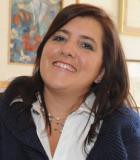
Funzione/Ruolo
Direttrice del Laboratorio Rischio Cardiometabolico e Coordinatrice della ricerca metabolica nell'uomo all'Istituto di Fisiologia Clinica del CNR di Pisa, Adjunct associate professor alla Division of Diabetes, University of Texas Health at San Antonio, USA
Percorso professionale
Dopo aver conseguito la Laurea in Ingegneria Elettronica con specializzazione in Bioingegneria all'Università di Padova nel 1990, prosegue la sua formazione con un Dottorato di ricerca in Bioingegneria presso il Politecnico di Milano e un PhD in Preventive Medicine and Community Health, con indirizzo Fisiologia Umana, alla Università del Texas Medical Branch di Galveston, Università in cui è fellow dal 1991 al 1995. In questo periodo la sua ricerca si concentra sui meccanismi fisiologici che regolano il metabolismo di zuccheri, lipidi e proteine avvalendosi di tecniche innovative basate sull'infusione di traccianti marcati con isotopi stabili misurati in spettrometria di massa, e sull'analisi della loro cinetica tramite modelli matematici. Nel 1995 torna in Italia per fondare il Laboratorio Isotopi Stabili all'Istituto di Fisiologia Clinica del CNR, nell'Unità di Metabolismo e Nutrizione di Pisa. Dal 2008 al 2009 è Direttrice del Laboratorio di Spettrometria di Massa della Fondazione Toscana G. Monasterio di Pisa e poi nel 2009 rientra come ricercatore all'Istituto di Fisiologia Clinica del CNR di Pisa al CNR dove fonda il Laboratorio di Rischio Cardiometabolico e coordina la ricerca metabolica nell'uomo.
Dal 2001 alla ricerca affianca anche la carriera accademica: è prima Assistant, poi Associate Professor alla University of Texas Health Science Center, Divisione Diabete, a San Antonio; dal 2006 al 2011 è Professoressa a contratto dell'Università di Pisa, nella facoltà di Ingegneria, corso di laurea in Ingegneria Biomedica.
Dal 2010 è membro del collegio dei direttori dell'American College of Nutrition (ACN) e ne dirige lo European Chapter. Nel 2012 fonda e da allora presiede il gruppo di studio sulla steatosi epatica non alcolica (NAFLD) della Società Europea per lo Studio del Diabete (EASD).
Risultati scientifici
Amalia Gastaldelli è una PhD con specializzazione in fisiologia umana, esperta dello studio del metabolismo umano, del rischio cardio-metabolico e delle patologie del metabolismo glucidico e lipidico, quali la resistenza all'insulina, il diabete non insulino dipendente e la steatosi epatica non alcolica. La sua formazione multidisciplinare le consente di svolgere una ricerca traslazionale per studiare il metabolismo umano. Impiegando traccianti marcati con isotopi stabili e modelli matematici ha evidenziato come il fegato è centrale per il corretto funzionamento metabolico. E' stata tra le prime a dimostrare come nei pazienti diabetici l'iperglicemia a digiuno è dovuta principalmente all'eccessiva produzione epatica di glucosio tramite gluconeogenesi e come i pazienti con fegato grasso (NAFLD) hanno un metabolismo alterato non solo a livello epatico, ma anche muscolare e del tessuto adiposo. E' titolare di diversi grant europei che investigano i meccanismi fisiopatologici della NAFLD. Contemporaneamente è stata co-investigatrice in molti trial clinici che hanno studiato il meccanismo d'azione di farmaci antidiabetici quali: gli agonisti dei recettori PPAR+ (TZD), capaci di aumentare la sensibilità all'insulina nei vari organi e di diminuire il grasso epatico; gli agonisti dell'ormone GLP-1 prodotto dall'intestino che agiscono come incretine stimolando la produzione di insulina; e gli inibitori dell'enzima DPP4 responsabile della sua degradazione. Una nuova linea di ricerca indaga l'impatto di sostanze inquinanti che agiscono come interferenti endocrini sulla salute di adulti e bambini.
Attività editoriali e pubblicazioni
Amalia Gastaldelli è Associate Editor e componente del Comitato di pubblicazione del Journal of American College of Nutrition, è nel Comitato di redazione della rivista World Journal of Hepatology e World Journal of Diabetes, ed è revisore per oltre venti riviste peer review internazionali.
È autrice di oltre 200 articoli scientifici e capitoli di libri tra cui:
(2016) Gastaldelli A, Gaggini M, Daniele G, Ciociaro D, Cersosimo E, Tripathy D, Triplitt C, Fox P, Musi N, DeFronzo R, Iozzo P. Exenatide improves both hepatic and adipose tissue insulin resistance: A dynamic positron emission tomography study. Hepatology, 64(6), 2028-2037.
(2016) EASL, Marchesini G, Day CP, Dufour JF, Canbay A, Nobili V, Ratziu V, Tilg H, EASD, Roden M, Gastaldelli A, Yki-Järvinen H, Schick F, EASO, Vettor R, Frühbeck G, Mathus-Vliegen L. EASL-EASD-EASO Clinical Practice Guidelines for the management of non-alcoholic fatty liver disease. Journal of Hepatology, 64(6), 1388-1402.
(2014) Salehi M, Gastaldelli A, D'Alessio DA. Blockade of glucagon-like peptide 1 receptor corrects postprandial hypoglycemia after gastric bypass. Gastroenterology, 146(3), 669-680 e662.
(2013) DeFronzo RA, Tripathy D, Schwenke DC, Banerji M, Bray GA, Buchanan TA, Clement SC, Henry RR, Kitabchi AE, Mudaliar S, Ratner RE, Stentz FB, Musi N, Reaven PD, Gastaldelli A, Study AN. Prediction of diabetes based on baseline metabolic characteristics in individuals at high risk. Diabetes Care 36(11):3607-3612.
(2012) Bradley D, Conte C, Mittendorfer B, Eagon JC, Varela JE, Fabbrini E, Gastaldelli A, Chambers KT, Su X, Okunade A, Patterson BW, Klein S. Gastric bypass and banding equally improve insulin sensitivity and beta cell function. Journal of Clinical Investigation, 122(12), 4667-4674.
(2009) Gastaldelli A, Kozakova M, Hojlund K, Flyvbjerg A, Favuzzi A, Mitrakou A, Balkau B, Risc Investigators. Fatty liver is associated with insulin resistance, risk of coronary heart disease, and early atherosclerosis in a large European population. Hepatology, 49(5), 1537-1544.
(2007) Gastaldelli A, Cusi K, Pettiti M, Hardies J, Miyazaki Y, Berria R, Buzzigoli E, Sironi AM, Cersosimo E, Ferrannini E, DeFronzo RA. Relationship between hepatic/visceral fat and hepatic insulin resistance in nondiabetic and type 2 diabetic subjects. Gastroenterology, 133(2), 496-506.
(2006) Belfort R, Harrison SA, Brown K, Darland C, Finch J, Hardies J, Balas B, Gastaldelli A, Tio F, Pulcini J, Berria R, Ma JZ, Dwivedi S, Havranek R, Fincke C, DeFronzo R, Bannayan GA, Schenker S, Cusi K. A placebo-controlled trial of pioglitazone in subjects with nonalcoholic steatohepatitis. The New England Journal of Medicine, 355(22), 2297-2307.
(2004) Gastaldelli A, Ferrannini E, Miyazaki Y, Matsuda M, DeFronzo RA, San Antonio Metabolism study. Beta-cell dysfunction and glucose intolerance: results from the San Antonio metabolism (SAM) study. Diabetologia, 47(1), 31-39.
(2000) Gastaldelli A, Baldi S, Pettiti M, Toschi E, Camastra S, Natali A, Landau BR, Ferrannini E. Influence of obesity and type 2 diabetes on gluconeogenesis and glucose output in humans: a quantitative study. Diabetes, 49(8), 1367-1373.
Riconoscimenti e premi
Durante la sua carriera universitaria Amalia Gastaldelli riceve numerosi riconoscimenti tra cui oltre 80 letture ad invito in ambito di congressi nazionali e internazionali. Nel 1998, è insignita del premio Glaxo Wellcome/EASD Burden of Diabetes per lo studio della gluconeogenesi e nel 2016 entra nella Top Italian Scientist per le Scienze biomediche. Ha partecipato a molte commissioni scientifiche per l'organizzazione di congressi nazionali ed internazionali e per la selezione di progetti di ricerca (grant) internazionali, ed è membro di diverse società scientifiche internazionali.
È inoltre direttrice scientifica dell'European Chapter dell'American College of Nutrition (ACN), organizzazione professionale nata per promuovere ricerche scientifiche nel campo delle scienze nutrizionali; Presidente del gruppo di studio europeo per la steatosi epatica non alcolica NAFLD-EASD e componente del Comitato direttivo del gruppo EGIR (European Group for the Study of Insulin Resistance).
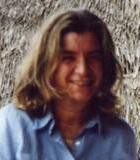
Funzione/Ruolo
Professoressa ordinaria di Fisica Sperimentale presso l'Università La Sapienza di Roma
Percorso professionale
Dopo aver conseguito la laurea in Fisica all'Università La Sapienza di Roma nel 1974, riceve un assegno di formazione presso la stessa università dal 1975 al 1981. Nel 1978 consegue il diploma della Scuola di Perfezionamento in Fisica (indirizzo Fisica Nucleare). Dal 1980 al 1982 è Fellowdi durata biennale del CERN (European Organization for Nuclear Research) presso la Divisione di Experimental Physics. Nel 1981 è ricercatrice confermata dell'Università La Sapienza di Roma fino al 1988, anno in cui diventa professoressa associata presso l'Università della Calabria. Nel 1992 e nel 1999 torna al CERN come Visiting Scientistmentre dal 2011 è professoressa ordinaria di Fisica Sperimentale de La Sapienza di Roma.
Risultati scientifici
Il settore di ricerca cui si dedica Simonetta Gentile riguarda la Fisica Sperimentale delle Particelle Elementari. Le sue linee di indagine seguono il Modello Standard (la teoria che descrive tre delle quattro forze fondamentali note: le interazioni forte, elettromagnetica e debole, e tutte le particelle elementari ad esse collegate) ovvero la Fisica dei neutrini, le funzioni di struttura dei nucleoni, le proprietà dei bosoni intermedi Z e W e la ricerca dei bosoni di Higgs. Attualmente fa parte del progetto ATLAS (A Toroidal LHC ApparatuS), uno dei sei rivelatori di particelle costruiti per il Large Hadron Collider (LHC), l'acceleratore di particelle al CERN, in Svizzera. Simonetta Gentile è anche impegnata nell'attività di ricerca e sviluppo per rivelatori di particelle per futuri acceleratori. Nel corso della sua carriera partecipa a esperimenti mirati a individuare trigger e rivelatori di mesoni mu (muoni, sorta di elettroni pesanti). Collabora con il Fermilab di Batavia (Chicago) nella ricerca di particelle con charm e con la NASA lavora all'AMS, l'Alpha Magnetic Spectrometer, un rivelatore utilizzato nella fisica delle particelle installato dal 19 maggio 2011 sulla Stazione Spaziale Internazionale. È progettato per la ricerca di nuovi tipi di particelle (antimateria, materia oscura, materia strana) tramite la misura ad alta precisione della composizione dei raggi cosmici. Le sue misure aiuteranno gli scienziati a capire le leggi alla base della formazione dell'universo.
Attività editoriali e pubblicazioni
È autrice di numerose pubblicazioni internazionali, tra cui:
(2018) Gentile S. , ATLAS [ATLAS Collaboration, Authors: 2856], Observation of Higgs boson production in association with a top quark pair at the LHC with the ATLAS detector, Phys. Lett. B 784 (2018) 173.
(2018) Gentile S. , ATLAS [ATLAS Collaboration, Authors: 2856], Evidence for the associated production of the Higgs boson and a top quark pair with the ATLAS detector, Phys.Rev. D97 (2018) no.7, 072003.
(2017) Gentile S. , ATLAS Search for the dimuon decay of the Higgs boson in pp collisions at √s = 13 TeV with the ATLAS detector Phys. Rev. Lett. 119 (2017) 051802
(2016) Gentile S. , ATLAS & CMS Collaboration, Measurements of the Higgs boson production and decay rates and constraints on its couplings from a combined ATLAS and CMS analysis of the LHC pp collision data at s√=7 and 8 TeV, JHEP 08 (2016) 045
(2015) Gentile S. , ATLAS Search for the associated production of the Higgs boson with a top quark pair in multilepton final states with the ATLAS detector, Physics Letters B 749 (2015) 519-541
(2013) Corcella G, Gentile S. Heavy Neutral Gauge Bosons at LHC in an Extended MSSM. Nuclear Physics B, 866:293-366.
(2012) Gentile S. Z 'production at LHC in an extended MSSM.Proceedings of Science, 36th International Conference on High Energy Physics, Melbourne, Australia.
(2012) Gentile S. Phenomenology of new heavy neutral gauge bosons in an extended MSSM. Nuovo Cimento C, 035:349-360.
(2012) Aad et al. [ATLAS Collaboration, Authors: 2932]. Observation of a new particle in the search for the Standard Model Higgs boson with the ATLAS detector at the LHC"G. Physics Letters B 716, 1.
(2010) Gentile S. Systematics in charged Higgs search in ATLAS. Proceedings of Science, Third International Workshop on Prospects for charged Higgs Discovery at colliders-CHARGED2010, Uppsala, Sweden.

Funzione/Ruolo
Presidente dell'associazione Italian Climate Network. Meteorologa per Meteo Expert.
Percorso professionale
Serena Giacomin è laureata in Fisica, con specializzazione in Fisica dell’Atmosfera e Climatologia. Conduce le rubriche di previsioni meteo e di approfondimento ambientale in onda sui canali Mediaset e sulle principali radio nazionali. È consulente manageriale per la gestione del rischio climatico e docente e divulgatrice scientifica. Dal 2017 è presidente dell’Italian Climate Network, la onlus nata nel 2011 per rafforzare il contrasto ai cambiamenti climatici con la divulgazione di contenuti scientifici, la promozione di conoscenza e il monitoraggio delle scelte istituzionali compiute nel nostro Paese e in Europa. È direttrice scientifica di Educazione climatica, per il progetto OK! CLIMA.
Risultati scientifici
I principali interessi di ricerca di Serena Giacomin sono l’analisi di modelli meteorologici per attività previsionale e la ricerca sui parametri climatici per la valutazione e la gestione del rischio legato ai cambiamenti climatici. Si occupa inoltre di progettazione e formazione scolastica, per docenti e studenti, e di formazione e consulenza professionale, per le amministrazioni locali.
Attività editoriali e pubblicazioni
Serena Giacomin è autrice, con Luca Perri, di Pinguini all’Equatore. Non tutto ciò che senti sul clima è vero (DeAgostini 2020). Ha collaborato alla realizzazione del manuale scolastico per la scuola secondaria di primo grado Scienze Live (Garzanti Scuola 2020), e ha scritto Meteo che scegli, tempo che trovi (Imprimatur Editore 2018).
Riconoscimenti e premi
Nel 2020 ha ricevuto l’onorificenza civica il Gelso d’oro dalla Città di Cernusco sul Naviglio, con la seguente motivazione: “per l’esempio di impegno nella diffusione dell’informazione scientifica e dei temi legati ai cambiamenti climatici e alla sostenibilità ambientale, in un’epoca nella quale, soprattutto le giovani generazioni, sollecitano la società ad assumere maggiore consapevolezza dei gravi rischi che il pianeta corre – e con esso la vita – se non vengono assunte nuove politiche e stili di vita personali maggiormente rispettosi dell’ambiente”.
Nel 2021 ha ricevuto il premio DonnAmbiente, da 5 Terre Academy, “per aver contribuito a creare un nuovo approccio comunicativo della Scienza attraverso la multimedialità e i social media, coniugando di volta in volta il rigore scientifico di materie complesse come la climatologia e la meteorologia ad un linguaggio autorevole ma sempre accessibile e mai banale, con un’attenzione particolare verso le generazioni più giovani. Altresì, per il suo impegno in prima persona e attraverso l’associazione da lei presieduta, Italian Climate Network, per una maggiore sensibilizzazione verso la questione climatica e per partecipare attivamente alla costruzione di un futuro più sostenibile per il Pianeta”.

Area STEM: Scienze biomediche e biotecnologie
Competenze: biologia oncologica, farmacologia, ricerca traslazionale
Parole chiave: adenocarcinoma pancreatico, angiogenesi, cancro, coronavirus, Covid-19, farmaci antitumorali, metabolismo, metastasi tumorali, microambiente, tumore ovarico
Regione: Lombardia
Funzione/Ruolo
Dirigente del Laboratorio di Biologia e Terapia delle Metastasi Tumorali dell'IRCCS Mario Negri
Percorso professionale
Dopo la laurea in Scienze Biologiche all'Università degli studi di Milano nel 1979, Raffaella Giavazzi ottiene l'abilitazione all'esercizio della professione di biologa. Prosegue gli studi con un dottorato di ricerca in Biologia e Farmacologia, presso la Post-graduate School of Professional Education all'Istituto Mario Negri, e la specialità in Farmacologia all'Università degli studi di Milano. Dopo diverse esperienze all'estero, sia come ricercatrice al Cancer Metastasis and Treatment Laboratory del National Cancer Institute, in Maryland, sia come assistente alla docenza universitaria al Department of Cell Biology dell'M.D. Anderson Hospital and Tumor Institute, Università del Texas, ritorna in Italia. Dal 1986 è a capo del Laboratorio di Biologia e Terapia delle Metastasi Tumorali dell'Istituto di Ricerche Farmacologiche Mario Negri. Dal 2005 al 2007 è Presidente della Società Italiana di Cancerologia e dal 2008 al 2012 è componente del Comitato Esecutivo dell'Associazione Europea per la Ricerca sul Cancro. Dallo stesso anno fa parte del Consiglio di Amministrazione dell'Università di Trento.
Risultati scientifici
Raffaella Giavazzi ha sempre coltivato l'interesse scientifico per la biologia e farmacologia dei tumori. Nello specifico, si occupa dello studio del processo di creazione delle metastasi tumorali e dell'angiogenesi (moltiplicazione dei vasi sanguigni). Assieme al suo team del laboratorio di biologia e terapia delle metastasi, si occupa di valutazione pre-clinica e sperimentazione clinica di nuovi farmaci antitumorali, con particolare attenzione verso terapie per il carcinoma ovarico e il carcinoma pancreatico.
Attività editoriali e pubblicazioni
È autrice di più di 200 pubblicazioni, tra cui:
(2018) Resovi A, Bani MR, Porcu L, Anastasia A, Minoli L, Allavena P, Cappello P, Novelli F, Scarpa A, Morandi E, Falanga A, Torri V, Taraboletti G, Belotti D, Giavazzi R. Soluble stroma-related biomarkers of pancreatic cancer. Embo Molecular Medicine, 10(8), pii: e8741, doi: 10.15252/emmm.201708741.
(2016) Cesca M, Morosi L, Berndt A, Fuso Nerini I, Frapolli R, Richter P, Decio A, Dirsch O, Micotti E, Giordano S, D’Incalci M, Davoli E, Zucchetti M, Giavazzi R. Bevacizumab-induced inhibition of angiogenesis promotes a more homogeneous intratumoral distribution of paclitaxel, improving the antitumor response. Molecular Cancer Therapeutics,15(1):125-35.
(2014) Ricci R, Bizzaro F, Cesca M, Guffanti F, Ganzinelli M, Decio A, Ghilardi C, Perego P, Fruscio R, Buda A, Milani R, Ostano P, Chiorino G, Bani MR, Damia G, Giavazzi R. A platform of patient-derived tumor xenografts (EOC-xenografts) to recapitulate the clinicopathology and genetic alterations of ovarian cancer. Cancer Research, 74(23):6980-90.
(2013) Rovida A, Castiglioni V, Decio A, Scarlato V, Scanziani E, Giavazzi R, Cesca M. Chemotherapy counteracts metastatic dissemination induced by antiangiogenic treatment in mice. Molecular Cancer Therapeutics, 12(10):2237-47.
(2012) Moschetta M, Pretto F, Berndt A, Galler K, Richter P, Bassi A, Oliva P, Micotti E, Valbusa G, Schwager K, Kaspar M, Trachsel E, Kosmehl H, Bani MR, Neri D, Giavazzi R. Paclitaxel enhances the therapeutic efficacy of the F8-IL2 immunocytokine to EDA-fibronectin positive metastatic human melanoma xenografts. Cancer Research, 72(7):1814-24.
(2007) Giavazzi R, Bani MR, Taraboletti G. Tumor-host interaction in the optimization of paclitaxel based combination therapies with vascular targeting compounds. Cancer Metastasis Reviews, 26:481-88.
(2005) Rybak JN, Ettorre A, Kaissling B, Giavazzi R, Neri D, Elia G. In vivo protein biotinylation for identification of organ-specific antigens accessible from the vasculature. Nature Methods, 2(4):291-98.
(2003) Belotti D, Paganoni P, Manenti L, Garofalo A, Marchini S, Taraboletti G, Giavazzi R. Matrix Metalloproteinases (MMP9 and MMP2) Induce the Release of Vascular Endothelial Growth Factor (VEGF) by Ovarian Carcinoma Cells: Implications for Acites Formation. Cancer Research, 63:5224-29.
(1998) Valoti G, Nicoletti MI, Pellegrino A, Jimeno J, Hendriks H, D'Incalci M, Faircloth G, Giavazzi R. Ecteinascidin-743 (ET-743), a new marine natural product with potent antitumor activity on human ovarian carcinoma xenografts. Clinical Cancer Research, 4:1977-1983.
(1995) Taraboletti G, Garofalo A, Belotti D, Drudis T, Borsotti P, Scanziani E, Brown PD, Giavazzi R. Inhibition of angiogenesis and murine hemangioma growth by Batimastat, a synthetic inhibitor of matrix metalloproteinases. Journal of the National Cancer Instistute, 87:293-298.
(1993) Giavazzi R, Foppolo M, Dossi R, Remuzzi A. Rolling and adhesion of human tumor cells on vascular endothelium under physiological flow conditions. The Journal of Clinical Investigation, 92:3038-3044.
Riconoscimenti e premi
Raffaella Giavazzi ottiene nel 1981 il premio “Fellowship for Advanced Professional Training” dal Ministero italiano del Lavoro e dalla Comunità Economica Europea.
Nel 2003 vince il premio dalla “Lega Italiana per la lotta contro i tumori” per la carriera di ricerca.
Nel 2012 riceve il riconoscimento “Giorgio Prodi” dalla Società Italiana di Cancerologia.
Nel 2016 viene annoverata fra le "Top Italian Women Scientists".
Nel 2018 riceve il premio alla carriera “5th Simon Karpatkin Memorial Lecture”.

Funzione/Ruolo
Direttrice del Laboratorio di Microbiologica clinica, Virologia e Bio-emergenza dell'Ospedale Sacco di Milano e Professoressa Associata di Microbiologia Clinica al Dipartimento di Scienze Biomediche e Cliniche "Sacco" dell'Università degli Studi di Milano.
Percorso professionale
Dopo aver conseguito la laurea in Scienze Biologiche presso l'Università di Catania nel 1976, prosegue la sua formazione specializzandosi in Microbiologia clinica e Virologia. Nel 1984 consegue una seconda laurea in Medicina e Chirurgia presso la medesima università siciliana. Dal 1976 al 1981 fa parte dell'Istituto di Microbiologia dell'Università di Milano. Nel 1982 è interna in Microbiologia clinica presso il London Hospital e in Microbiologia orale presso l'Hospital Medical School For Dentistry di Londra. Nell'86 è interna in Microbiologia all'Università del Tennessee. Dal 1991 ad oggi è professoressa associata in Microbiologia clinica presso l'Università degli Studi di Milano. È a capo di numerosi gruppi di ricerca che si occupano di bioterorrismo, della SARS, di Ebola e di emergenze infettive. È inoltre componente della commissione nazionale sull'Aids dal 2007. Dal 2014 ad oggi è responsabile del laboratorio di Microbiologica clinica, Virologia e Bioemergenza dell'Ospedale Sacco di Milano.
Risultati scientifici
Nell'ambito dell'UOC (Unità operativa complessa) Microbiologia Clinica e Virologia , Maria Rita Gismondo ha implementato il settore "bioemergenza" composto da un laboratorio BSL3 (Bio safety level 3) ed un laboratorio BSL4 (uno dei due esistenti in Italia) dedicati alle gravi crisi sanitarie. Gismondo ha riunito intorno a sé un gruppo di ricerca e operativo con l'obiettivo di fornire una risposta rapida alle emergenze infettive, sia di origine naturale (pandemie), che volontarie (bioterrorismo). Il laboratorio da lei diretto è oggi il punto di riferimento per la diagnostica di malattie tropicali, per i rischi da antrace e per quelli legati ad altri elementi potenzialmente infettivi.
Attività editoriali e pubblicazioni
Maria Rita Gismondo è editrice associata di numerose riviste scientifiche, oltre che autrice di numerosi articoli, tra cui:
(2016) Rimoldi SG, De Vecchi E, Pagani C, Antona C, Gismondo MR. Use of Dithiothreitol to Dislodge Bacteria From the Biofilm on an Aortic Valve in the Operating Theatre: A Case of Infective Endocarditis Caused by Staphylococcus aureus and Proteus mirabilis. The Annals of thoracic surgery, 102(4):e357-9.
(2016) Rossotti R, Borghi V, Callegaro AP, Rusconi S, Gismondo MR. Impact of Circulating Resistance-Associated Mutations on HIV Pre-Exposure Prophylaxis (PrEP) efficacy: Modeling from Antiretroviral Resistance Cohort Analysis (ARCA) National Database.Journal of clinical virology: the official publication of the Pan American Society for Clinical Virology.
(2016) Cagnoni G, Rimoldi SG, Pagani C, Gismondo MR. Can Drainage Using a Negative-Pressure Wound Therapy Device Replace Traditional Sample Collection Methods?. Surgical Infections, 17(5):577-82.
(2016) Caruso I, Santandrea S, Gismondo MR, Sarzi Puttini P. Vaccination with endosomal unknown epitopes produces therapeutic response in rheumatoid arthritis patients and modulates adjuvant arthritis of rats. Journal of Translational Medicine, 14:162.
(2015) Ridolfo AL, Sara Giordana Rimoldi SG, Pagani C, Gismondo MR. Diffusion and transmission of carbapenem-resistant Klebsiella pneumoniae in the medical and surgical wards of a university hospital in Milan, Italy. Journal of Infection and Public Health, 9(1):24-33.
(2015) D'Alessandro S, Corbett Y, Ilboudo DP, Parapini S, Gismondo MR. Salinomycin and Other Ionophores as a New Class of Antimalarial Drugs with Transmission-Blocking Activity. Antimicrobial Agents and Chemotherapy, 59(9):5135-44.
(2015) Vocale C, Rimoldi SG, Pagani C, Sambri V, Gismondo MR. Comparative evaluation of the new xTAG GPP multiplex assay in the laboratory diagnosis of acute gastroenteritis. Clinical assessment and potential application from a multicentre Italian study. International Journal of Infectious Diseases, 34:33-7.
(2014) Perrone V, Cattaneo D, Radice S, Clementi E, Gismondo MR. Impact of therapeutic drug monitoring of antiretroviral drugs in routine clinical management of patients infected with human immunodeficiency virus and related health care costs: A real-life study in a large cohort of patients. ClinicoEconomics and Outcomes Research, 6:341-8.
(2013) Tau P, Mancon A, Mileto D, Rusconi S, Gismondo MR. Favorable Therapeutic Response with an Antiretroviral Salvage Regimen in an HIV-1-Positive Subject Infected with a CRF11-cpx Virus.AIDS research and human retroviruses, 30(5):480-3.
(2013) de Luca A, Dunn D, Zazzi M, Sloot, PM, Gismondo MR. Declining Prevalence of HIV-1 Drug Resistance in Antiretroviral Treatment-exposed Individuals in Western Europe.The Journal of Infectious Diseases, 207(8):1216-20.
Riconoscimenti e premi
Nel 2005 riceve l'Ambrogino d'Oro in qualità di direttrice del Laboratorio di Microbiologia Clinica del Polo Universitario Azienda Ospedaliera "L. Sacco" di Milano.
Nel 2007 è stata insignita del Woman of Achievement 2007.
Nel 2009, le è stato conferito il Premio "Rosa Camuna" da parte della Regione Lombardia.
E' stata inoltre nominata rappresentante del Ministero dell'Università nel Consiglio di amministrazione della Fondazione Smith Kline.
In memoria del collega microbiologo norvegese Tom Bergan, ha fondato il Centro Studi Tom Bergan, impegnato nella promozione di iniziative culturali scientifiche, tra cui "Donna in Salute" e lo "Sportello Unico per gli anziani".

Funzione/Ruolo
Team leader U-Vip Unit dell'Istituto Italiano di Tecnologia (ITT) di Genova
Percorso professionale
Dopo la laurea in Psicologia all'Università di Firenze nel 2004, prosegue la sua formazione all'interno del VisionLab del CNR di Pisa. Nel 2008 dedica un anno alla ricerca presso il laboratorio VisionScience di Berkeley in California e, l'anno successivo, consegue il dottorato di ricerca in Tecnologie Umanoidi presso l'Istituto Italiano di Tecnologie dell'Università di Genova. Attualmente Monica Gori è team leader dell'Unità per le persone con disabilità visive (U-Vip Unit) dell'Istituto Italiano di Tecnologia di Genova.
Risultati scientifici
Monica Gori si occupa di sviluppo, integrazione multisensoriale, percezione sensoriale-motoria e disabilità visiva. Attraverso la sua ricerca studia come le capacità di percezione uni sensoriale e multi sensoriale interagiscono durante lo sviluppo dei bambini con e senza disabilità. L'obiettivo dello studio è quello di sfruttare questa conoscenza per comprendere meglio la funzionalità cerebrale, creare nuovi programmi di riabilitazione e sviluppare nuovi dispositivi meccatronici (che uniscono meccanica, elettronica e informatica) per aumentare le capacità senso-motorie dei bambini con disabilità sensoriali. Dal febbraio 2014 è coordinatrice del progetto europeo ABBI, il cui scopo è proprio lo sviluppo di una nuova tecnologia basata sulla riabilitazione senso-motoria per i non vedenti. Nello specifico ABBI (Audio Bracelet for Blind Interactions) prevede sia la realizzazione tecnica di un dispositivo sonoro non invasivo che stimoli la percezione spaziale dei ciechi, sia la verifica della sua efficacia su un campione di circa 150 bambini e adolescenti non vedenti. Il progetto prevede lo studio e la realizzazione di un dispositivo sonoro indossabile, simile a un braccialetto, utile anche per creare reti sonore da dislocare negli ambienti in cui i non vedenti vivono, permettendo così che l'udito, e non la vista, crei una mappa spaziale nella quale la persona potrà muoversi.
Attività editoriali e pubblicazioni
Monica Gori è autrice di capitoli di libri e di numerosi articoli scientifici su riviste internazionali, tra cui:
(2018) Gori, Amadeo, Campus Temporal cues influence space estimations in visually impaired individuals. iScience, vol. 6, pp. 319-326.
(2018)Campus, Sandini, Concetta Morrone, & Gori. Spatial localization of sound elicits early responses from occipital visual cortex in humans. Scientific Report.
(2017) Gori, Cappagli, Tonelli, Baud-Bovy, Finocchietti. Devices for visually impaired people: high technological devices with low user acceptance and no adaptability for children Neuroscience & Biobehavioral Reviews.
(2017) Gori, Cappagli, Baud-Bovy, & Finocchietti. Shape Perception and Navigation in Blind Adults. Frontiers in Psychology.
(2017) Cappagli, Cocchi, & Gori. Auditory and proprioceptive spatial impairments in blind children and adults. Developmental Science, 2017.
(2016) Cuturi, Aggius-Vella, Campus, Parmiggiani, and Gori. From science to technology: orientation and mobility in blind children and adults. Neurosci and Biobe. Reviews 2016, impact factor 10.5 citations 2 (2016) Cappagli G, Gori M. Auditory spatial localization: Developmental delay in children with visual impairments. Research in Developmental Disabilities, 53-54:391-8.
(2016) Tonelli A, Brayda L, Gori M. Depth echolocation learnt by novice sighted people. PLoS ONE, 11(6):e0156654.
(2016) Vercillo T, Burr D, Gori M. Early visual deprivation severely compromises the auditory sense of space in congenitally blind children. Developmental Psychology, 52(6):847-53.
(2015) Finocchietti S, Cappagli G, Porquis LB, [...], Cocchi E, Gori M. Evaluation of the Audio Bracelet for Blind Interaction for improving mobility and spatial cognition in early blind children - A pilot study. Proceedings of the Annual International Conference of the IEEE Engineering in Medicine and Biology Society, EMBS.
(2015) Magnusson C, Rydeman B, Finocchietti S, [...], Baud-Bovy G, Gori M. Co-located games created by children with visual impairments. MobileHCI 2015, Proceedings of the 17th International Conference on Human-Computer Interaction with Mobile Devices and Services Adjunct.
(2015) Tinelli F, Anobile G, Gori M, [...], Cioni G, Concetta Morrone M. Time, number and attention in very low birth weight children. Neuropsychologia, 73:60-9.
Riconoscimenti e premi
Il suo articolo Young children do not integrate visual and haptic form information è stato inserito nella F1000 (Gori et al. Curr Biol, 2008) e nel 2012 vince il premio TR35 per giovani innovatori. Nel 2016 viene premiata per il progetto WeDraw, due anni prima per il progetto ABBI, entrambi da lei coordinati.
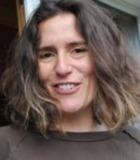
Funzione/Ruolo
Professoressa di Neurologia presso l'Università della California, San Francisco
Percorso professionale
Dopo aver conseguito la laurea presso la Facoltà di Medicina e Chirurgia dell'Università di Brescia nel 1993, prosegue gli studi attraverso un tirocinio formativo in neurologia all'Università di Modena e Reggio Emilia. Successivamente, consegue un dottorato di ricerca in Neuroscienze all'University College di Londra e si specializza in Neurologia comportamentale al UCSF Memory and Aging Center di San Francisco. Negli ultimi anni Maria Luisa Gorno Tempini oltre a insegnare neurologia a San Francisco, si è impegnata nello studio delle malattie neurodegenerative, in particolare della demenza frontotemporale e dell'afasia primaria progressiva (PPA), anche attraverso l'utilizzo di tecniche di neuroimaging e di neuropsicologia del linguaggio.
Gorno Tempini irige il laboratorio di neurobiologia del linguaggio dell'UCSF Memory and Aging Center. Ha anche co-fondato il Centro Dislessia dell'UCSF nel 2015 ed è co-direttrice del centro.
Risultati scientifici
Al Centro Dislessia dell'UCSF, dirige un grande team multidisciplinare di clinici e scienziati con competenze in neurologia comportamentale, neuroscienze cognitive, patologia del linguaggio e tecniche avanzate di neuroimaging. Il suo lavoro nei disturbi del neurosviluppo mira a scoprire i distinti fenotipi clinici e biologici della dislessia e il miglior approccio per diagnosticarli e correggerli.
Attività editoriali e pubblicazioni
È autrice di oltre 170 articoli su riviste scientifiche sulla neurobiologia dei disturbi del linguaggio ed è stata invitata a parlare a conferenze in tutto il mondo, tra cui l'American Academy of Neurology e il Senato italiano.
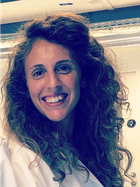
Funzione/Ruolo
Professoressa ordinaria di Chimica Fisica presso l’Università di Pavia e Direttrice del gruppo di ricerca PVsquared2 presso il Dipartimento di Chimica dell'Università di Pavia
Percorso professionale
Nel 2008, consegue la Laurea in Ingegneria Fisica presso il Politecnico di Milano e, nel 2012, il Dottorato di Ricerca in Fisica, presso la stessa università, sviluppando nuove tecniche di spettroscopia ottica risolta in spazio e tempo per l’indagine dei processi chimico-fisici ultrarapidi in materiali semiconduttori organici. Completa il dottorato con sei mesi presso l’Università di Oxford come visiting PhD. Dal 2012 al 2015 continua la formazione in Italia con un post dottorato presso l’Istituto Italiano di Tecnologia – centro di Milano (CNST@IIT). Successivamente, diventa scientist presso l’École Polytechnique Federale De Lausanne (EPFL), Svizzera, dove rimarrà per 4 anni con borsa Marie Skłodowska-Curie prima, per poi diventare team leader di un progetto Ambizione Energy. Nel 2019 diventa Professoressa associata presso l’Università di Pavia e dirige il progetto di ricerca ERC HYNANO, volto allo sviluppo di nano-materiali avanzati per celle solari di nuova generazione. Dal 2025 è professoressa ordinaria nello stesso ateneo.
Risultati scientifici
L’interesse di ricerca di Giulia Grancini è volto allo studio dei processi fondamentali che regolano l’interazione luce-materia in materiali semiconduttori avanzati utilizzati in dispositivi optoelettronici, con particolare attenzione ai dispositivi fotovoltaici. In questo campo, ha contribuito con studi innovativi, rivelando i processi fisico-chimici alla base della generazione di fotocorrente che avvengono su scale temporali ultrabrevi. Dalla conoscenza di tali processi fondamentali, l’interesse di Giulia Grancini si è poi rivolto alla realizzazione stessa di dispositivi fotovoltaici di nuova generazione utilizzando polimeri semiconduttori e materiali organici. Con il progetto ERC “HYNANO”, mira a una svolta nel solare, sviluppando materiali semiconduttori nano-strutturati rivoluzionari a base di perovskite ibrida, quali elementi foto-attivi per un solare efficiente, moderno, flessibile, a basso costo e a basso impatto ambientale.
Attività editoriali e pubblicazioni
E’ autrice di oltre 90 pubblicazioni (h index= 44, con oltre 14000 citazioni), tra cui:
[2020] Sutanto A, Szostak R, Drigo N, Queloz V, Marchezi P, Germino J, Tolentino H, Nazeeruddin M, Nogueira A, Grancini G* In Situ Analysis Reveals the Role of 2D Perovskite in Preventing Thermal-Induced Degradation in 2D/3D Perovskite Interfaces Nano Lett. 20, 5, 3992-3998.
[2020] Queloz V. et al. Spatial Charge Separation as the Origin of Anomalous Stark Effect in Fluorous 2D Hybrid Perovskites Adv. Funct. Mater. https://doi.org/10.1002/adfm.202000228
[2019] Grancini G*, Nazeeruddin M Dimensional tailoring of hybrid perovskites for photovoltaics Nature Rev. Materials, 4, 4-22.
[2018] Pantaler M, Cho K, Queloz V, García Benito I., Fettkenhauer C, Anusca I, Nazeeruddin M, Lupascu D, Grancini G* Hysteresis-Free Lead-Free Double-Perovskite Solar Cells by Interface Engineering ACS Energy Lett. 3, 1781-1786.
[2017] Grancini G. et al. One-Year stable perovskite solar cells by 2D/3D interface engineering. Nature Comm., 8(1) 1-8, 15684.
[2017] A. D. Jodlowski, C. Roldán-Carmona, G. Grancini, et al. Large guanidinium cation mixed with methylammonium in lead iodide perovskites for 19% efficient solar cells Nature Energy 2, 972.
[2016] Gratia, P., Grancini G.* et al. Intrinsic Halide Segregation at Nanometer Scale Determines the High-Efficiency of mixed cation/mixed halide Perovskite Solar Cells J. Am. Chem. Soc. 138 (49), 15821.
[2015] Grancini G. et al. Role of microstructure in the electron-hole interaction of hybrid lead halide perovskitesNature Photonics 9, 695-701.
[2014] D’Innocenzo V., Grancini G. et al. Excitons versus Free Charges: a Photophysical Picture of Organo-lead Tri- Halide Perovskites Nat. Commun. 5, 3586.
[2013] Grancini G. et al. Hot exciton dissociation in polymer solar cells Nature Mater. 12, 29.
[2013] Stranks S. D., Eperon G. E., Grancini G. et al. Electron-Hole Diffusion Lengths Exceeding 1 Micron in an Organometal Trihalide Perovskite Absorber Science 342 (6156), 341.
[2012] G. Grancini, et al. Boosting Infrared Light Harvesting by Molecular Functionalization of Metal Oxide/Polymer Interfaces in Efficient Hybrid Solar Cells Adv. Funct. Mater. 22, 2160.
Riconoscimenti e premi
Nel 2015 ha ricevuto il prestigioso National Award per la Fisica 2015 di EDISON, “in memoria di Francesco Somaini”.
Nel 2017 è stata insignita del premio IUPAP Young Scientist Prize in Optics dall’ International Commission of Optics per “deep knowledge on photophysical properties and ultrafast light-induced dynamical processes”.
Nel 2018 ha ricevuto il premio per giovani scienziati in Fisica “Swiss Physical Society Award” dalla Swiss Physical Society.
Nel 2018, ha ricevuto il grant Europeo ERC Starting Grant HYNANO (1.5 M€) per lo sviluppo di “HYbrid NANOstructured multi-functional interfaces for stable, efficient and eco-friendly photovoltaic devices”.
Nel 2019 è stata nominata USERN Laureate in Physical Science. Inoltre, da gennaio 2020, è stata nominata Italian Ambassador for USERN.
Nel 2019 appare tra gli “Highly Cited Researchers” (ranking in the top 1% by citations for field and year), Web of Science
Dal 2020 è parte del gruppo di scienziati “Gruppo 2003” e appare nella lista dei Top Italian Scientist.

Area STEM: Scienze naturali e ambientali
Competenze: sismologia storica, storia dell'ingegneria, vulcanologia storica
Parole chiave: archeosismologia, disastri sismici, eruzioni vulcaniche, maremoti, pericolosità sismica, ricostruzioni post disastri sismici, sistemi antisismici storici, terremoti, variazioni climatiche
Regione: Emilia-Romagna
Funzione/Ruolo
Associata alla ricerca di INGV- Istituto Nazionale di Geofisica e Vulcanologia, Roma, Sezione Sismologia e Tettonofisica. Già Dirigente di ricerca di ruolo a INGV di Bologna. Coordinatrice delle attività multidisciplinari del Centro euro-mediterraneo di documentazione Eventi Estremi e Disastri.
Percorso professionale
Storica medievista di formazione (Università di Bologna) e sismologa storica, da oltre trenta anni sviluppa ricerche storiche su terremoti, maremoti ed eruzioni vulcaniche riguardanti l’Italia e l’area mediterranea, finalizzando i risultati alle Scienze della Terra (sismologia, vulcanologia e climatologia) e alla storia dell'ingegneria.
Ha svolto e svolge la sua attività di ricerca come responsabile di progetti nazionali e come studiosa. Responsabile scientifica della società di ricerca SGA, Storia Geofisica Ambiente di Bologna (1983-2006), poi dirigente di ricerca di ruolo all’Istituto Nazionale di Geofisica e Vulcanologia (INGV) fono al 2011. Dal 2012 coordina le attività multidisciplinari di EEDIs (Eventi estremi e disastri, Centro euro-mediterraneo di documentazione), finalizzate sia alla divulgazione scientifica, sia a nuove ricerche.
Consulente della IAEA (International Atomic Energy Agency – ONU) per la sismicità dell'Africa settentrionale e dell'Armenia, ha contribuito a migliorare le conoscenze sulla pericolosità sismica di queste aree con specifiche ricerche e relative pubblicazioni.
Impegnata nel tema cruciale del rischio da eventi naturali estremi e nello studio dei loro impatti nel lungo periodo, ha scritto diversi libri di divulgazione scientifica entrati nel dibattito nazionale.
Risultati scientifici
Emanuela Guidoboni ha progettato e diretto tutte le ricerche storiche per il Catalogo dei Forti Terremoti in Italia e nell’area mediterranea (CFTI), dal mondo antico al XX secolo (edizioni 1995, 1997, 2000, 2007, 2018). La presentazione dell’architettura e dei contenuti di questo Web-GIS, basilare per le valutazioni della pericolosità sismica, è stata pubblicata nel 2019 su Nature.
Il metodo applicato alla ricerca storica finalizzata alla sismologia ha definito una neo-disciplina d’interesse internazionale, la Sismologia storica, di cui Emanuela Guidoboni ha pubblicato nel 2009 il primo manuale, assieme a John Ebel: "Earthquakes and Tsunamis in the Past. A Guide to Techniques in Historical Seismology" (Cambridge University Press, 2009).
Ha approfondito le conoscenze sui terremoti e maremoti antichi e medievali dell’Italia e dell’area mediterranea, facendo emergere l'impatto di tali eventi nel mondo abitato, mettendo in luce numerosi eventi prima sconosciuti ed elaborando i nuovi parametri sismici. I risultati sono pubblicati in "Catalogue of Ancient Earthquakes in the Mediterranean area up to 10th century", con A.Comastri e G.Traina (1994); e in "Catalogue of Earthquakes and Tsunamis in the Mediterranean area from the 11th to the 15th century", con A. Comastri (2005).
Attività editoriali e pubblicazioni
Emanuela Guidoboni è autrice di oltre 200 pubblicazioni scientifiche.
Fra gli articoli in riviste internazionali e contributi in opere nazionali, si segnalano i seguenti lavori relativi agli ultimi dieci anni.
(2021) Valensise G., Guidoboni E., Iervolino I. What is an exceptional earthquake? Seismological Reseaerch Letters.
(2019) Guidoboni E. Azzardo sismico, vulnerabilità e ricostruzioni nei centri storici italiani, in “Dopo la catastrofe”, a cura di C. Belmonte, E. Scirocco, G. Wolf, G. Wolf, Kunsthistorisches Institut in Florenz - Max-Planck-Institut, Roma, pp. 30-44.
(2018) Guidoboni E. Florence: the effects of earthquakes on the artistic heritage. Method and historical sources (15th-20thcenturies), pp. 267-277; Florence: a first concise dossier of seismic effect on artistic heritage (15th-20th centuries), pp. 279-300, in "3rd International Conference, AISI", a cura di S. D'Agostino, vol I, 2018, Napoli.
(2017) Guidoboni E. Disastri sismici e ricostruzioni nella storia d’Italia: l'azzardo sismico in un nodo non risolto in “Building Back Better: idee per ricostruire meglio. Individui e comunità, manufatti e paesaggio”- Sendai 2015-2030 (Nazioni Unite,) a cura di F. Esposito, M. Russo, Carrocci, Roma.
(2016) Guidoboni E. Erdbeben und Seebeben im antiken Mittelmeerraum. Gründe für einen Dialog zwischen Seismologie und Geschichte, in “Erdbeben in der Antike”, Deutungen – Folgen – Repräsentationen, herausgegeben von J. Borsch und L.Carrara, Mohr Siebec, Tubingen Univ.
(2015) Guidoboni E. When Towns Collapse: Images of Earthquakes, Floods, and Eruptions in Italy. Fifteenth – Nineteenth Centuries, in “Wounded Cities: The Representation of Urban Disasters in European Art (14th–20th Centuries)”, a cura di M. Folin e M. Preti, cap. 2, Koninklijke Brill, NY– Leiden, pp. 33-56.
(2015) Guidoboni E., Valensise G. On the complexity of earthquake sequences: a historical seismology perspective based onthe L'Aquila seismicity (Abruzzo, Central Italy), 1315-1915. Earthquakes and Structures, 8(1): 153-184.
Fra i libri e le monografie si segnalano:
(2019) Guidoboni E., Poirier J.-P. Storia culturale del terremoto dal mondo antico a oggi, Rubettino.
(2015) Guidoboni E., Mulargia F., Teti V. Prevedibile / Imprevedibile. Eventi estremi nel prossimo futuro, Rubbettino.
(2014) Guidoboni E., Valensise G. (a cura di) L’Italia dei disastri. Dati e riflessioni sugli impatti degli eventi naturali (1861-2013), Bononia University Press.
(2011) Guidoboni E., Valensise G. Il peso economico e sociale dei disastri sismici in Italia negli ultimi 150 anni (1861-2011), Bononia University Press, Bologna.
(2011) Guidoboni E., Navarra A., Boschi E. The Spiral of Climate. Civilizations of the Mediterranean and Climate Change in History, Bononia University Press, Bologna.
Riconoscimenti e premi
Nel 2004 viene nominata membro dell'Academia Europaeaper l'approccio multidisciplinare alla pericolosità sismica e vulcanica.
Nel 2016 vince il primo Premio Maiella per la Saggistica ambientale con il libro Prevedibile / Imprevedibile. Eventi estremi nel prossimo futuro (Rubbettino).
Nel 2017 è nominata associata alla ricerca dell'INGV, Roa.
Nel 2020 è nominata membro del Comitato Scientifico e di quello Direttivo dell'Associazione Internazionale di Storia dell'Ingegneria.
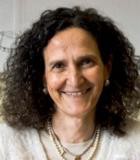
Funzione/Ruolo
Rettrice del Gran Sasso Science Institute (GSSI).
Percorso professionale
Nel 1981 consegue la Laurea in Scienze dell'Informazione all'Università di Pisa. Nello stesso anno entra a far parte della Olivetti con il ruolo di ricercatrice che mantiene anche durante il decennio 1984-1994 presso il CRN di Pisa. Nel 1994 consegue la docenza ordinaria di informatica all'Università dell'Aquila, dove successivamente ricopre diversi ruoli di prestigio nella governance universitaria: dal 1994 al 2000 è Presidente del corso di Laurea di Informatica e successivamente Direttrice del Dipartimento di Informatica. Nel 2008 diventa Preside della Facoltà di Scienze Matematiche, Fisiche e Naturali della stessa università. Dal luglio 2012 al settembre 2013 dirige il Dipartimento di Ingegneria e Scienze dell'Informazione e Matematica (DISIM). Paola Inverardi nell'anno accademico 2013/2014 viene eletta Rettrice dell'Università dell'Aquila, carica che manterrà fino al 31 ottobre 2019. Nel 2022 si trasferisce al Gran Sasso Science Institute, Istituto di Studi Superiori in Matematica, Fisica, Informatica e Scienze sociali, ricoprendo la carica di Rettrice.
Risultati scientifici
I suoi interessi principali riguardano l'ingegneria del software, con particolare attenzione all'area delle architetture software, che includono, oltre all'organizzazione della struttura del sistema stesso, le modalità con cui le diverse parti si integrano e interagiscono a formare un tutt'uno. In tale ambito si è occupata di analisi e verifica di proprietà architetturali sia comportamentali che quantitative per sistemi basati su componenti, distribuiti e mobili. È inoltre attivamente impegnata nella collaborazione con importanti industrie del settore delle tecnologie dell'informazione e delle telecomunicazioni. Svolge regolarmente l'attività di revisora per agenzie internazionali della ricerca e università estere e per la Commissione Europea.
Attività editoriali e pubblicazioni
Autrice di numerose pubblicazioni nazionali ed internazionali fra cui:
2011) Cortellessa V, Di Marco A, Inverardi P. Model-Based Software Performance Analysis. Springer 2011, isbn 978-3-642-13620-7.
(2009) Pelliccione P, Inverardi P, Muccini H. CHARMY: A Framework for Designing and Verifying Architectural Specifications. IEEE Transactions on Software Engineering, 35(3):325-346.
(2004) Balsamo S, Di Marco A, Inverardi P, Simeoni M, Model-Based Performance Prediction in Software Development: A Survey. IEEE Transactions on Software Engineering, 30(5):295-310.
(2004) Muccini H, Bertolino A, Inverardi P, Using Software Architecture for Code Testing. IEEE Transactions on Software Engineering, 30(3):160-171.
(2003) Inverardi P, Tivoli M, Deadlock-free software architectures for COM/DCOM Applications. Journal of Systems and Software, 65(3):173-183.
(2001) F Aquilani, S Balsamo, P Inverardi: Performance analysis at the software architectural design level. Performance Evaluation, 45(2):147-178.
(2000) Inverardi P, Wolf AL, Yankelevich D, Static checking of system behaviors using derived component assumptions. ACM Transactions on Software Engineering and Methodology, 9 (3), 239-272.
(1995) Inverardi P, Nesi M, Deciding observational congruence of finite-state CCS expressions by rewriting Theoretical Computer. Science, 139(1):315-354.
(1995) Inverardi P, Wolf AL, Formal specification and analysis of software architectures using the chemical abstract machine model. IEEE transactions on Software Engineering, 21(4):373-386.
(1993) Inverardi P, Mazzanti F, Experimenting with Dynamic Linking with Ada. Software: Practice and Experience, 23(1):1-14.
Riconoscimenti e premi
A maggio 2011 ha ricevuto un dottorato onorario dalla Mälardalen University in Svezia; nel 2013, il IEEE TCSE Distinguished Service Award "for outstanding and sustained contributions to software engineering community". Inoltre Paola Inverardi è componente di ACM Europe Council e di Academia Europaea.

Funzione/Ruolo
Docente di fisica, editor scientifica, autrice di manuali di fisica e di saggi scientifici.
Percorso professionale
Elena Joli si laurea in Fisica nel 1993 presso l’Università di Bologna discutendo una tesi di gravità quantistica. Consegue un DEA (Diplôme d’Études Approfondies) en Physique Theorique a Parigi presso l’École Normale Supérieure e il Laboratoire de Physique Théorique et Mathématique dell’Universitè di Jussieu-Paris VII nel 1997. In questo periodo si interessa di epistemologia e comunicazione della scienza e, rientrata in Italia, nel 2002 ottiene il Master in Comunicazione della Scienza presso la SISSA (Scuola Internazionale Superiore di Studi Avanzati) di Trieste, discutendo una tesi sul ruolo della metafora nella scienza e nella sua comunicazione. Dal 1995 inizia a collaborare in modo permanente in ambito editoriale con le Edizioni Dedalo (Bari) prima come traduttrice tecnica dall’inglese e dal francese, poi come consulente scientifica con incarichi di editor scientifica, curando le collane di divulgazione scientifica della casa editrice. Dal 2003 inizia a collaborare con la Zanichelli (Bologna) come autrice di manuali di fisica e materiali didattici digitali per la scuola superiore in collaborazione con il Professor Ugo Amaldi. Dal 2001 inizia la sua attività part-time come professoressa di Fisica nella scuola superiore. Dal 2014 è membro dell’editorial board della rivista di divulgazione scientifica Sapere; dal 2018 è membro del Comitato Scientifico del Museo dell’Ecologia della citta di Cesena. Nel 2018 partecipa alla spedizione australiana Homeward Bound in Antartide, visitando le basi scientifiche Palmer Station e Rothera Station e occupandosi di fisica dei cambiamenti climatici e di comunicazione scientifica sulle questioni ambientali.
Risultati scientifici
Le principali aree di interesse e ricerca di Elena Ioli si sono concentrate, all’avvio dei suoi studi universitari, su modelli bidimensionali di gravità quantistica per la descrizione dei buchi neri. In seguito, ha iniziato a occuparsi di comunicazione della scienza in ambito editoriale, prima come traduttrice di saggi e articoli tecnico-scientifici poi come editor scientifica e come esperta di didattica della fisica per l’insegnamento nella scuola secondaria superiore. Ha curato l’edizione italiana delle lezioni di fisica che il premio Nobel per la Fisica Marie Curie ha tenuto nel 1907 a Parigi grazie a una borsa di studio del Centre National di livre, Ministère de la Culture et de la Communication francese. Attualmente, sta curando la traduzione italiana di un saggio di Alain Aspect, premio Nobel per la Fisica nel 2022. Nel 2018 è stata selezionata per partecipare a una spedizione di scienza, comunicazione e leadership al femminile in Antartide, con il progetto australiano Homeward Bound, come unica italiana insieme ad altre 76 scienziate provenienti da 21 diversi paesi nel mondo. Ha partecipato come speaker su temi legati all’emergenza climatica a trasmissioni televisive (fra cui Maestri RaiScuola) e radiofoniche nazionali e australiane, a Festival della scienza (Genova, Foligno, Bookcity Milano, Polignano “Festival del libro possibile”), a TEdX Women Navigli Milano, al progetto Masterclass del polo di tecnologia educativa digitale Treccani futura.
Attività editoriali e pubblicazioni
[2021] Ioli E., "The circle", Wired (Climate change issue), 98 :155-61.
[2020] Ioli E., Antartide. Come cambia il clima, Bologna: Dedalo.
[2018] Ioli E., "Le regine delle nevi: una spedizione al femminile in Antartide", Sapere, 4:10-7 https://doi 10.12919/sapere.2018.04.1
[2013] Ioli E., Nero come un buco nero, Bari: Dedalo (tradotto in francese da Le Pommier e in inglese da World Scientific Press; traduzione in cinese in corso per Daylight Publishing House).
[2007] Ioli E., “Una piccola differenza", in Sandrelli, Gouthier, Ghattas (eds), Tutti i numeri sono uguali a cinque, pp 167-170; Springer.
[2006] Gouthier D., Ioli E., Le parole di Einstein, Bari: Dedalo.

Area STEM: Ingegneria
Competenze: economia dello spazio, geo-informazione, ingegneria dei costi, ingegneria spaziale, relazioni internazionali, valutazione programmatica e tecnologica
Parole chiave: Alitalia SpA, ASI (Agenzia Spaziale Italiana), Copernicus, ESA (European Space Agency), NASA (National Aeronautics and Space Administration)
Regione: ESTERO
Funzione/Ruolo
Cost Engineer presso l'Agenzia Spaziale Europea (ESA).
Percorso professionale
Elisabetta Lamboglia si laurea presso l'Unversità La Sapienza di Roma in Ingegneria Aerospaziale nel 2003 includendo un’esperienza di sei mesi in ingegneria della manutenzione presso l'Area Tecnica di Alitalia SpA. Nel dicembre 2006 si laurea con lode in Ingegneria Astronautica, presso la Scuola di Ingegneria Aerospaziale, La Sapienza, includendo un’esperienza di quattro mesi come stagista al centro europeo per la ricerca spaziale e tecnologia (ESTEC, Agenzia Spaziale Europea).
Nel 2007 inizia l’esperienza lavorativa in ESTEC come giovane professionista, occuoandosi di modellizzazione dei dati finanziari e di rischio dei sistemi satellitari europei, di 'effetti del mercato' sui componenti spaziali, consulenza di sistema ed economica in disegni e progettazione di missioni spaziali future.
A Giugno 2009 inizia l'esperienza al centro di ricerca NASA Ames (Silicon Valley, California), dove consegue la certificazione in applicazioni spaziali rilasciato dall'Università Spaziale Internazionale (ISU), e dove ha la possibilità di relazionarsi con più di 130 altri professionisti e per un totale di oltre 40 nazionalità diverse. Sempre alla NASA lavora al progetto DREAM (Disaster Risk Evaluation and Management), commissionata dalla Banca Mondiale (the World Bank), il cui obiettivo è l'esplorazione di tecnologie e processi innovativi per applicazioni di gestione dei rischi da catastrofe (Distaster Risk Management).
Da Settembre 2009 a marzo 2010, lavora nell'area business di una compagnia olandese leader del settore petrolchimico (Heerema Marine Contractors), dove dimostra versatilità avendo esteso le capacità lavorative anche nel settore finanziario, in un momento storico particolarmente provato dalla crisi economica del 2008.
Da marzo 2010 ritorna all'Agenzia Spaziale Europea come cost engineer, parte del direttorato della Tecnologia, Ingegneria, e Qualità (TEC), dove supporta diversi progetti trasversalmente in tutti i direttorati.
Nel 2013 viene nominata commissaria esterna nella valutazione indipendente programmatica del progetto PRISMA dell'Agenzia Spaziale Italiana (ASI), il cui obiettivo è il monitoraggio o stato delle risorse naturali, la qualità dell'aria e i livelli di inquinamento.
Nel 2015 ottiene il diploma di laurea in Relazioni Internazionali alla London School of Economics and Political Science (LSE), dove espande ulteriormente conoscenza e capacità in diplomazia, sicurezza internazionale ed ambientale.
Dal 2017 ricopre il ruolo di coordinatrice del team di ingegneri di costi dell'ESA per missioni di monitoraggio globale e sicurezza ambientale (Copernicus) e tutte le missioni di osservazione della Terra.
Nel 2020 consegue diversi certificati rilasciati dall'Organizzazione delle Nazioni Unite (UN), tra cui `Impenditoria per migranti e rifugiuati` e `Tecnologie di Informazione geografica in contesti di fragilità', `Pianificazione integrata nel cambiamento climatico e biodiversità.
Dal novembre 2021 è Mentoring, per ESA, nel Programma STEM Talent Girl, un progetto educativo di formazione e promozione di talenti nel settore tecnico scientifico, un’iniziativa rivolta alle donne, con l’obiettivo di ispirare e sostenere le ragazze nel loro percorso e carriere in materie STEM.
Risultati scientifici
Durante la preparazione della tesi di laurea specialistica ha contribuito alle attività del gruppo GAUSS della Scuola di Ingegneria Aerospaziale dell'Università La Sapienza di Roma, inclusa la partecipazione al lancio del microsatellite UniSat 4 dal cosmodromo di Baikonur in Kazakhstan (26 Luglio 2006).
Da giovane professionista ha lavorato all'ottimizzazione di modelli matematici per costi e rischi di missioni spaziali, ancora operativi. Ha partecipato a studi di fattibilità di diverse missioni spaziali tra cui Copernicus Sentinel 5p, lanciato con successo nell'ottobre 2017.
Negli anni successivi viene nominata come esperta indipendente in diverse valutazioni programmatiche, finanziarie, dialoghi e negoziazioni per implementazione di progetti sviluppati in ESTEC. In aggiunta svolge un ruolo di coordinazione ed armonizzazione in gruppi di lavoro per la selezione delle missioni nel programma `Earth Explorers`, in stretta collaborazione con alti dirigenti dell'Agenzia Spaziale Europea.
Ha seguito da commissaria esterna le criticità della missione Italiana PRISMA investigate, identificate, ed infine affrontate con successo con la messa in orbita del satellite nel marzo 2019.
Negli anni 2017-2020 è stata assegnata al programma di espansione di Copernicus (CHIME, LSTM, CO2M, ROSE-L, CRISTAL, CIMR), che ha supportato nella fase di preparazione al Consiglio ESA a livello ministeriale (Space19+) e avvio di implementazione delle singole missioni.
Da marzo 2022 a giugno 2023, è stata nominata Leader per il Clima e la Sostenibilità per la Strategia, Previsione e Coordinamento dell'ESA. In questo ruolo, è stata responsabile dello Studio Arrhenius e ha guidato la Strategia di Sostenibilità dell'ESA per l'EGA, il Gruppo di Lavoro sulla Decarbonizzazione e l'Azione per il Clima, LCA e Tecnologie Verdi. Ha rappresentato l'ESA nelle collaborazioni con la Commissione Europea e l'Agenzia dell'Unione Europea per il Programma Spaziale sulle Ambizioni del Green Deal relative alla Politica Spaziale e Ambientale.
Rappresentante del settore spaziale in forum internazionali come il Consiglio per le relazioni tra Italia e Stati Uniti (Consiusa), attualmente guida progetti, concentrandosi su ricerca e sviluppo utilizzando dati e IA per applicazioni in Osservazione della Terra e commercializzazione, insieme al suo dottorato di ricerca in Geoinformazione.
Attività editoriali e pubblicazioni
[2025] New Space markets: the European perspective on new frontiers, commercialization, and domestic uses of space applications, E. Lamboglia at all., in T. Hoerber, M. Borowitz, A. Forganni, & de Sousa, M. (Eds.), Routledge Handbook of Space Policy, Routledge, 2025. Doi:10.4324/9781003342380-35.https://www.taylorfrancis.com/chapters/edit/10.4324/9781003342380-35/newspace-markets-elisabetta-lamboglia-vedant-mogha-michel-van-pelt
[2024] The evolution of Earth Observation: exploring space sustainability through European case studies, E. Lamboglia et al., (2024). International Journal of Sustainable Engineering, 17(1), 1–10. https://doi.org/10.1080/19397038.2024.2387427
[2024] Long-term temporal analysis of Sentinel-2 spectral reflectance data for post-earthquake monitoring of urban environment dynamics, E. Lamboglia et al., (2024). European Journal of Remote Sensing, 58(1). https://doi.org/10.1080/22797254.2024.2445658, European Journal of Remote Sensing, 58(1) · Dec 24, 2024
[2024] Long-Term Post-Earthquake Monitoring of Urban Areas Based on Time Series Analysis of Sentinel-2 Spectral Reflectance Data, G. Guerrisi, E. Lamboglia, S. Bonafoni and F. Del Frate, IGARSS 2024 - 2024 IEEE International Geoscience and Remote Sensing Symposium, Athens, Greece, 2024, pp. 3897-3901, https://doi.org/10.1109/IGARSS53475.2024.10642433
[2024] An attractive European Earth Observation Ecosystem of Services: Flexible, scalable, and cost-effective data spaces empowering downstream business opportunities, E. Lamboglia et al., (2024), in Proc. 75th Int. Astronaut. Congr. (IAC), Milan, Italy.
[2023] The potential of hybrid hyperspectral constellations, Steven George et al., 14th IAA SSEO, 8-12 May 2023
[2023] New Space SmallSats concepts, from programmatic to governance and sustainability benefits - the ESA perspective and lesson learnt, Lamboglia et al., 14th IAA SSEO, 8-12 May 2023
[2022] The socioeconomic benefits of Earth Observation applications in the New Space era, Elisabetta Lamboglia, Vedant Paul Mogha, IAC 2022, Paris, 21 Sep 2022, https://dl.iafastro.directory/event/IAC-2022/paper/67962/
[2022] Estimating Copernicus High Priority Candidate Missions Jobs for Europe, Elisabetta Lamboglia, Luisa Corrado, Fabio Del Frate, IAC 2022, Paris, 21 Sep 2022
[2021] Elisabetta Lamboglia, ESTEC, The benefit of Full, Free and Open Satellite geoinformation for detecting and monitoring socio-economic factors on land use, 12th ESSCA Space Policy Workshop (28 April 2021) & UACES 2021 (6-8 September 2021, Space Policy panel)
[2018] Lamboglia E. Extensive Cost Estimating methodologies for the CDF GaiaNIR study, SECESA.
[2014] Lamboglia E. A tool for rapid and early schedule estimates, Project Control Professional.
Riconoscimenti e premi
ESA Teamwork Excellence Award 2019: Copernicus High Priority Candidate Missions Phase A/B1 team.
ESA Teamwork Excellence Award 2019: Concurrent Design Facility team (Future Mission Studies).
Best Mentor Award 2023, Space Generation Advisory Council, in Support of the United Nations Programme on Space Applications. https://spacegeneration.org/best-mentor-spring-2023-elisabetta-lamboglia.

Funzione/Ruolo
Prima Ricercatrice del Consiglio Nazionale delle Ricerche (CNR), presso l’Istituto di Nanotecnologia (NANOTEC) di Lecce.
Percorso professionale
Dopo aver conseguito la laurea in Fisica all'Università di Roma La Sapienza nel 1995, prosegue il suo percorso formativo in Francia presso l’Université Cotê d`Azur, conseguendo un dottorato di ricerca in Fisica nel dicembre 1999. Dal 2000 al 2001 è Post-doc con un contratto INFM presso il Dipartimento di Fisica dell’Università Tor Vergata di Roma. Dal gennaio 2002 al novembre 2018, è ricercatrice del Consiglio Nazionale delle Ricerche, presso l’Istituto di Scienze dell’Atmosfera e del Clima. Dal 2019 è Senior Scientist (Prima Ricercatrice) presso l’Istituto di Nanotecnologia del CNR, a Lecce.
Risultati scientifici
Alessandra è una fisica teorica, esperta di metodi computazionali per la dinamica dei fluidi e i fluidi complessi. A partire dal dottorato nel 1996, il suo lavoro si è concentrato sulla descrizione statistica e dinamica della turbolenza, in flussi ideali e complessi. Dal 2003, ha studiato il comportamento di flussi multifase, costituiti da sospensioni turbolente di piccole particelle, come ad esempio particelle di aerosol in aria o goccioline di pioggia, con applicazioni in problemi di ingegneria e geofisica. Ha partecipato e diretto vari progetti di super calcolo, grazie a grant europei PRACE. Dal 2006, è coordinator locale (Unità INFN DI Lecce) del progetto “Particles and Fields in Complex flows” dell’Istituto Nazionale di Fisica Nucleare. Parallelamente all’attività di ricerca, ha organizzato numerose scuole di fisica e workshop per giovani ricercatori/trici.
Attività editoriali e pubblicazioni
Alessandra Lanotte è Deputy Editor di Europhysics Letters (EPL) EPS ed è stata precedentemente Associate Editor di Physics of Fluids, AIPP.
E' stata Guest editor delle Focus Issues "Turbulent regimes in Bose-Einstein Condensates", EPL (2021), e "Two-Dimensional Turbulence", Physics of Fluids (2017), e dei numeri speciali "Flowing Matter Across the Scales", EPJE (2015) e "Lagrangian Dynamics", Journal of Turbulence(2007).
Fra le sue pubblicazioni, si segnalano le seguenti.
[2021] Panico R, Macorini G, Dominici L, Gianfrate A, Fieramosca A, De Giorgi M, Gigli G, Sanvitto D, Lanotte A S, Ballarini D. Dynamics of a Vortex Lattice in an Expanding Polariton Quantum Fluid. Physical Review Letters 127 (4), 047401.
[2016] Biferale L, Bonaccorso F, Mazzitelli I M, van Hinsberg M A T, Lanotte A S, Musacchio S, Perlekar P, Toschi F. Coherent structures and extreme events in rotating multiphase turbulent flows. Phys. Rev. X 6, 041036.
[2015] Lanotte A S, Benzi R, Malapaka S K, Toschi F, Biferale L. Turbulence on a Fractal Fourier set. Phys. Rev. Letters 115, 264502.
[2013] Lanotte A S, Mazzitelli I M. Scalar turbulence in convective boundary layers with different entrainment fluxes. Journ. Atmos. Sci. 70, 248-265.
[2012] Baebler M U, Biferale L, Lanotte A S. Break-up of small aggregates driven by turbulent hydrodynamical stress. Phys. Review E.85.025301.
[2010] Bec J, Biferale L, Lanotte A S, Scagliarini A, Toschi F. Turbulent pair dispersion of inertial particles. Journ. Fluid Mech. 645, 497.
[2009] Lanotte A S, Seminara A, Toschi F. Cloud droplet growth by condensation in homogeneous isotropic turbulence, Journ. Atmos. Sci. 66, 1685.
[2008] Arnéodo A, et al. Universal intermittent properties of particle trajectories in highly turbulent flows. Physical Review Letters 100 (25), 254504.
[2007] Bec J, Biferale L, Cencini M, Lanotte A S, Musacchio S, Toschi F. Heavy particle concentration in turbulence at dissipative and inertial scales. Phys Rev Lett. 98, 084502.
[2004] Biferale L, Boffetta G, Celani A, Devenish B J, Lanotte A, Toschi F. Multifractal statistics of Lagrangian velocity and acceleration in turbulence. Physical Review Letters 93 (6), 064502.
[2000] Celani A, Lanotte A, Mazzino A, Vergassola M. Universality and saturation of intermittency in passive scalar turbulence. Physical Review Letters 84 (11), 2385.
[1999] Lanotte A, Noullez A, Vergassola M, Wirth A. Large-scale dynamo produced by negative magnetic eddy diffusivities. Geophys. Astrophys. Fluid Dyn. 91, 131.



